Forums
- Forums
- Axis And Allies Forum
- General Discussion
- Aviation News
Aviation News
Post a reply
- Go to Next topic
- Go to Welcome
- Go to Introduce Yourself
- Go to General Discussion
- Go to Screenshots, Images and Videos
- Go to Off topic
- Go to Works in Progress
- Go to Skinning Tips / Tutorials
- Go to Skin Requests
- Go to IJAAF Library
- Go to Luftwaffe Library
- Go to RAF Library
- Go to USAAF / USN Library
- Go to Misc Library
- Go to The Ops Room
- Go to Made in Germany
- Go to Campaigns and Missions
- Go to Works in Progress
- Go to Juri's Air-Raid Shelter
- Go to Campaigns and Missions
- Go to Works in Progress
- Go to Skinpacks
- Go to External Projects Discussion
- Go to Books & Resources
-
 Main AdminORLANDO, Fla., April 11, 2018 /PRNewswire/ -- Boeing [NYSE: BA] announced that on March 7, 2018, two previously signed integrated Boeing Global Fleet Care agreements for Singapore Airlines' fleet of 27 777-300ERs (Extended Range) and Scoot's fleet of 20 787 Dreamliners were transferred to Boeing Asia Pacific Aviation Services Pte. Ltd., (BAPAS), a joint venture between The Boeing Company and SIA Engineering Company (SIAEC).
Main AdminORLANDO, Fla., April 11, 2018 /PRNewswire/ -- Boeing [NYSE: BA] announced that on March 7, 2018, two previously signed integrated Boeing Global Fleet Care agreements for Singapore Airlines' fleet of 27 777-300ERs (Extended Range) and Scoot's fleet of 20 787 Dreamliners were transferred to Boeing Asia Pacific Aviation Services Pte. Ltd., (BAPAS), a joint venture between The Boeing Company and SIA Engineering Company (SIAEC).
Singapore Airlines 777-300ER (Singapore Airlines photo)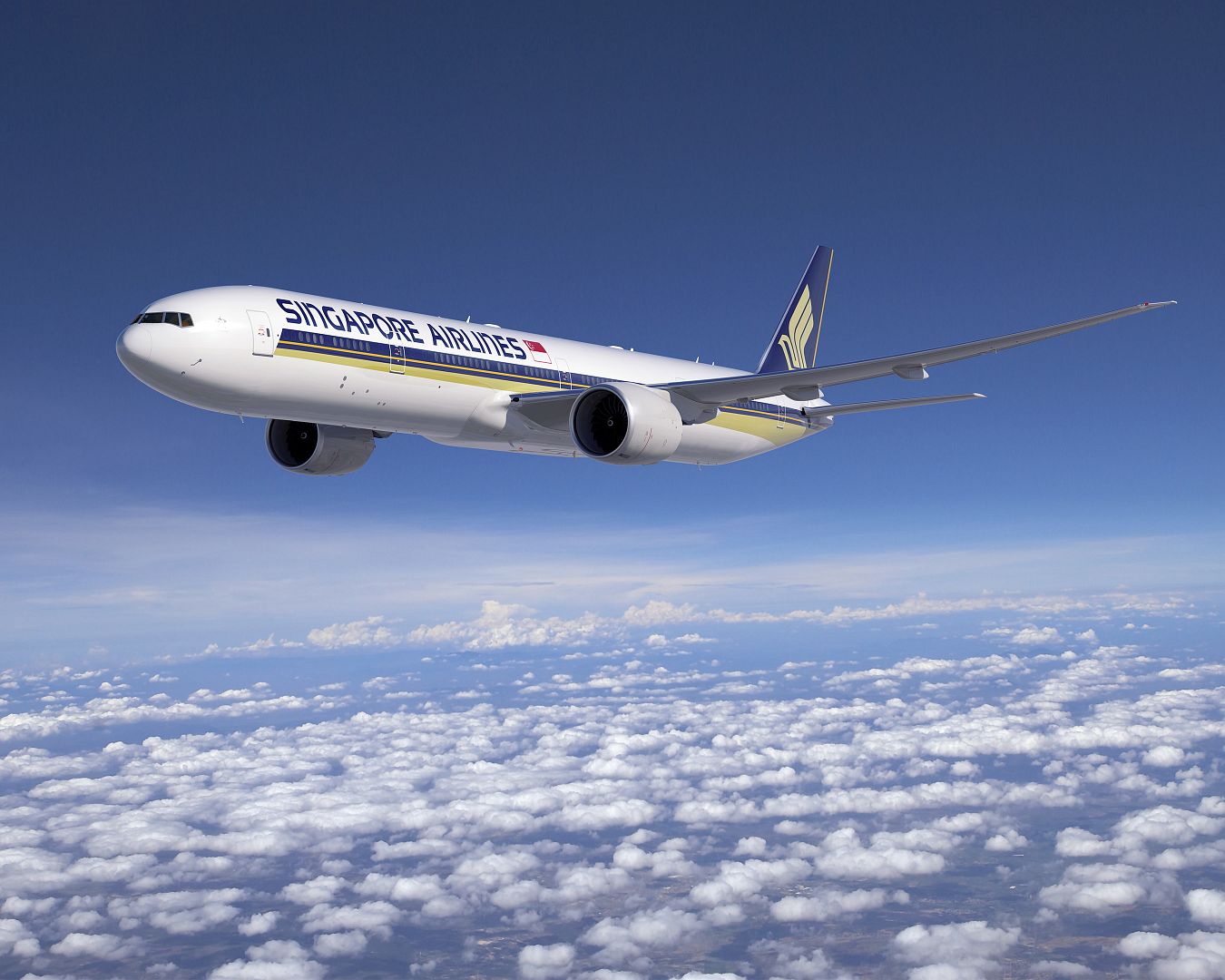
"Boeing's partnership with SIAEC will create more efficient and customer-focused service solutions by combining our resources and intimate understanding of airframe lifecycle with knowledge of current and emerging requirements in the Asia Pacific region," said Stan Deal, president and CEO, Boeing Global Services.
Under the integrated Global Fleet Care agreements, BAPAS will provide engineering services, maintenance planning and scheduling, and operation control center services, along with materials demand planning and spares support for the airlines. BAPAS also will tailor maintenance and reliability programs and provide support for aircraft modifications. Following these agreements, BAPAS is anticipated to support more than 70 Boeing aircraft within the Singapore Airlines Group.
Boeing and SIAEC also confirmed the completion of the agreements and processes necessary to fully enable the BAPAS joint venture. BAPAS will continue offering industry-leading engineering, materials management and fleet maintenance support solutions for Boeing 737, 747, 777 and 787 aircraft to airline customers in the Asia Pacific region.
About Boeing Asia Pacific Aviation Services Pte. Ltd.
Boeing Asia Pacific Aviation Services Pte. Ltd. (BAPAS) is a joint venture that combines Boeing engineering knowledge of the 737, 747, 777 and 787 aircraft with SIA Engineering Company (SIAEC) maintenance, repair and overhaul expertise. BAPAS offers a total fleet maintenance solution that incorporates a suite of knowledge based maintenance services. These one-stop services include Fleet Engineering Services, Fleet Material Services and Maintenance, Repair and Overhaul (MRO) services, specifically formulated to cover airline customer needs from entry into service to ongoing operations to the decommission or sale of an aircraft.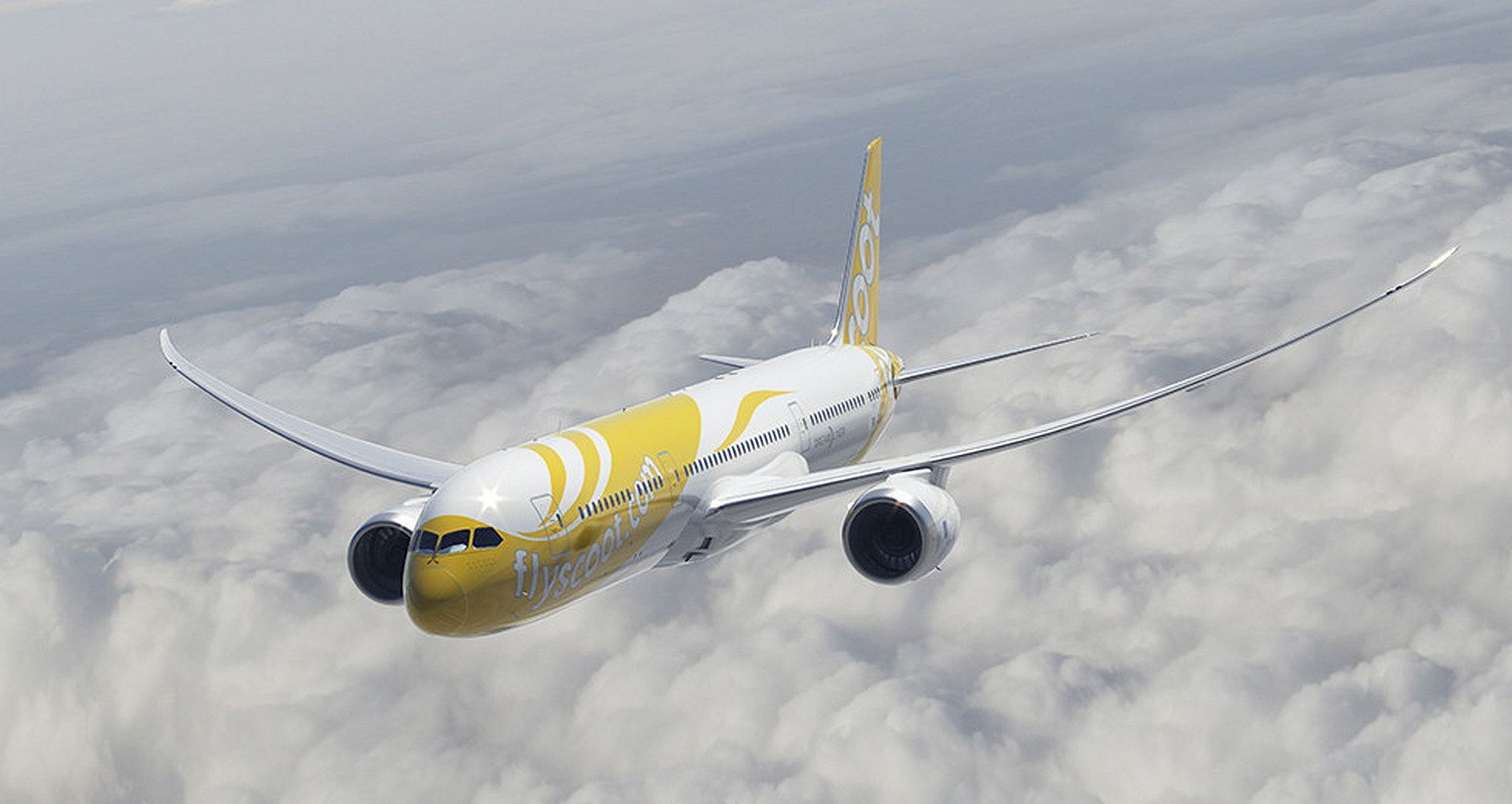
The Czech Air Force has successfully completed the MS20 capability upgrade to its fleet of Gripen fighter aircraft. The upgrade greatly increases Gripen?s combat and communication capabilities.
The MS20 upgrade brings a number of improvements. The upgrade greatly enhances Gripen?s ability to engage ground targets by incorporating unguided and laser-guided bombs into the aircraft payload and the air-to-air capability is enhanced by introduction of new radar modes.
Another key element will be the integration of the targeting electro-optical pod Litening III, which will be used not only for guiding missiles and bombs, but also in aerial reconnaissance and combat. The upgrade also implements the Alliance datalink - Link 16 - as well as cryptomodules for covert communication.
"Thanks to the modernization of the Czech Gripen aircraft, the operational capabilities of the Czech Air Force will be significantly increased. Our staff has appreciated a close and fruitful cooperation with the Swedish side on this specific modernization project as well as the cooperation during the 13 years that we have operated Gripen aircraft," said Colonel Petr Tom?nek, Commander of the Czech Air Force?s Caslav Air Base.
The capability upgrade involves both hardware and software upgrades. On 12 March 2018, a symbolic date marking the 19th anniversary of Czech Republic?s entry into NATO, the new software package was integrated into the single and double seat versions of the Czech Gripen. After successful flight tests the MS20 software was integrated into the remaining fighters. This enabled a smooth and instant transition to the new MS20 upgrade.
?We are very pleased with the success of this capability upgrade. We are honoured to have a long-term partner in the Czech Air Force. It is largely due to this long-term mutual cooperation between Swedish FMV, the Czech Air Force and Saab that the upgrade went smoothly and according to plan. We wish the pilots and the whole Air Force continued success in meeting their objectives both within their airspace protection operations and their joint NATO operations,? says Jonas Hjelm, head of Saab business area Aeronautics.
Saab serves the global market with world-leading products, services and solutions within military defence and civil security. Saab has operations and employees on all continents around the world. Through innovative, collaborative and pragmatic thinking, Saab develops, adopts and improves new technology to meet customers? changing needs.
(Source: Saab; issued April 11, 2018)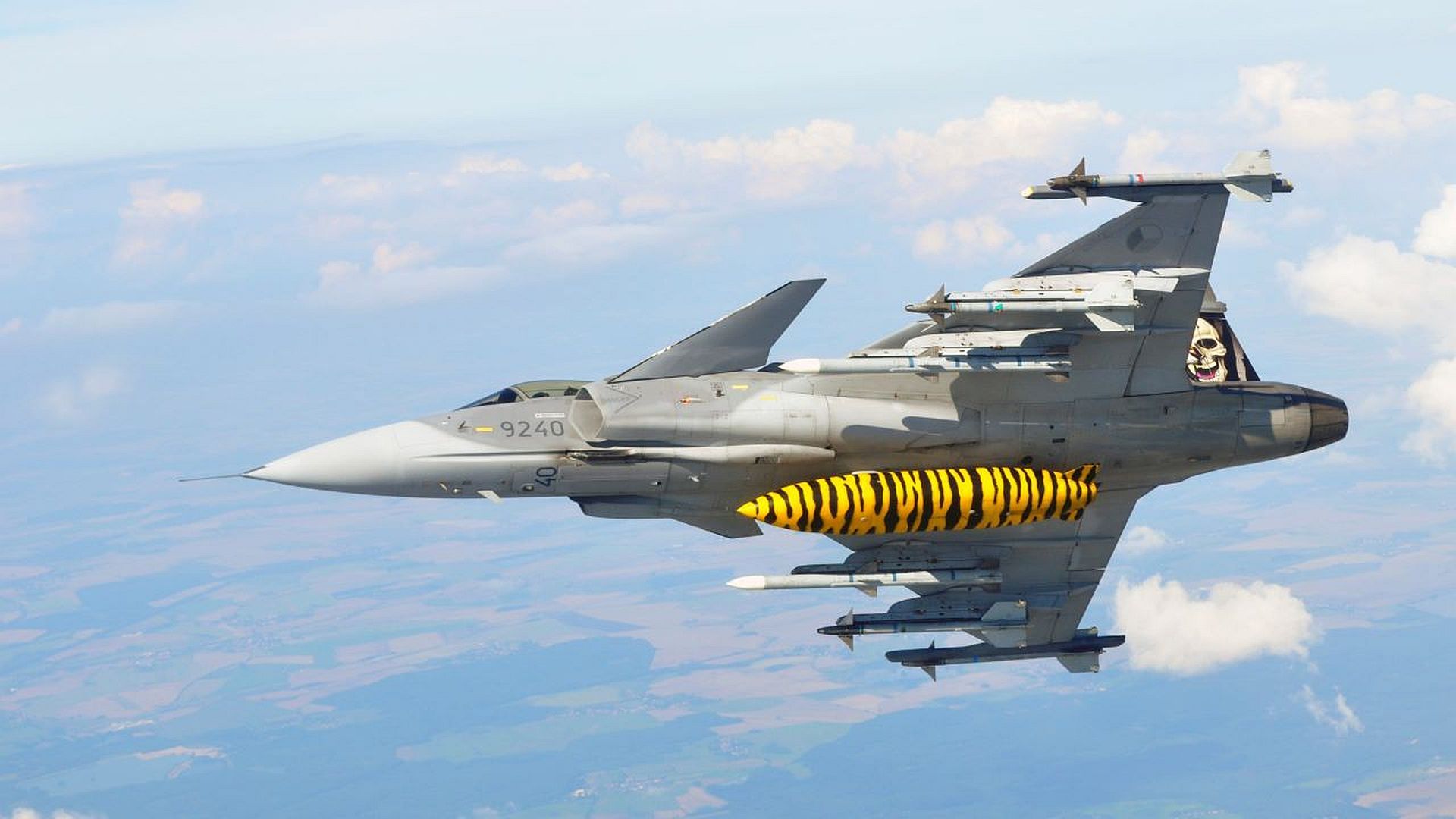
PATUXENT RIVER, Md. (April 4, 2018) Test pilot Billie Flynn pilots an F-35C Lightning II test aircraft during an external GBU-31 and AIM-9x buffet and flutter test flight from Naval Air Station Patuxent River, Md., April 4, 2018. (U.S. Navy photo's courtesy of Lockheed Martin/Released)


This variant of Airbus? A321, which will enter service in 2018, has the longest range of any single-aisle jetliner
The A321LR variant of Airbus? A321 jetliner underscored its impressive range with a record-breaking flight from Mah? in the Seychelles islands to Toulouse, France ? covering a total distance of 4,750 nautical miles in 11 hours.
This milestone was reached in late March as part of the A321LR?s 100-hour flight test and certification programme. To make flight conditions as realistic as possible while evaluating cabin systems, the A321LR carried 162 human heat-replicating dummy passengers in addition to its 16-member test crew.
According to flight test engineer Jim Fawcett, the A321LR?s flight characteristics and fuel consumption were as expected throughout the lengthy trip. He added: ?The A321LR has completed 15 test flights. It is an excellent aircraft that keeps its promises in terms of flight behaviour, passenger comfort and fuel consumption.?
Outfitted for superior long-range performance
The A321LR has the longest range of any single-aisle jetliner, with an increased maximum take-off weight of 97 tonnes (compared to 93.5 tonnes for the A321), plus the addition of a third auxiliary centre fuel tank. The jetliner is ideally suited to transatlantic routes, allowing airlines to tap into new long-haul markets that were not previously accessible with current single-aisle aircraft.
The A321LR ? which is on track for a 2018 service entry ? also features a new door configuration that enables up to 240 passengers to be accommodated in the widest single-aisle fuselage in the sky.
The record-breaking flight followed A321LR hot weather testing performed at Sharjah International Airport in the United Arab Emirates, which was selected by Airbus due to the optimal weather conditions and this location?s excellent facilities.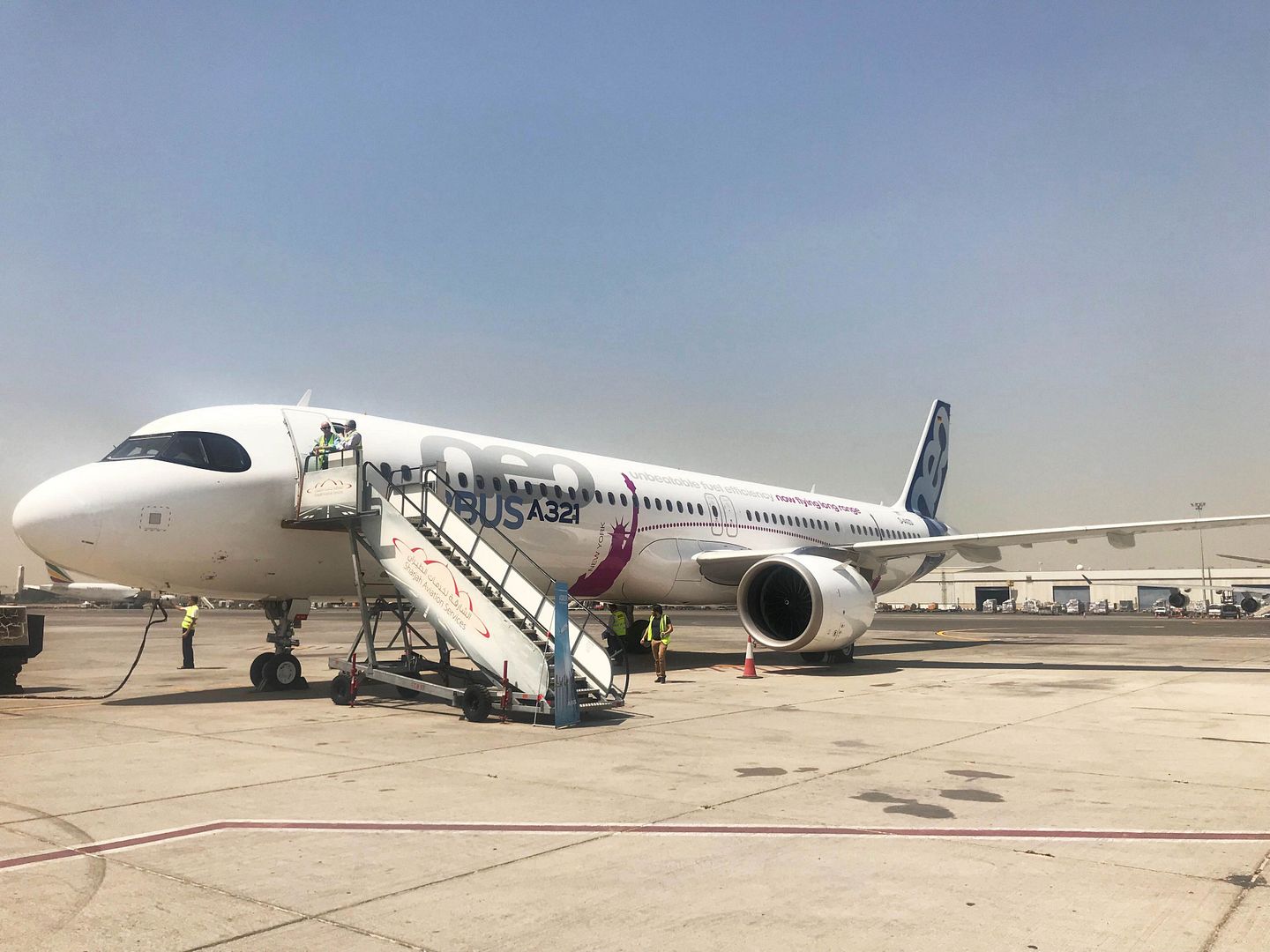
-
 Main AdminThe final SDD Test flight CF-2 Flt 596 was piloted by BAE Test pilot Peter Wilson, April 11, 2018, from the F-35 Pax River Integrated Test Force. The F-35C completed a mission to collect loads data while carrying external 2,000-pound GBU-31 Joint Direct Attack Munitions (JDAM) and AIM-9X Sidewinder heat-seeking missiles. (Photo's courtesy of Lockheed Martin)
Main AdminThe final SDD Test flight CF-2 Flt 596 was piloted by BAE Test pilot Peter Wilson, April 11, 2018, from the F-35 Pax River Integrated Test Force. The F-35C completed a mission to collect loads data while carrying external 2,000-pound GBU-31 Joint Direct Attack Munitions (JDAM) and AIM-9X Sidewinder heat-seeking missiles. (Photo's courtesy of Lockheed Martin)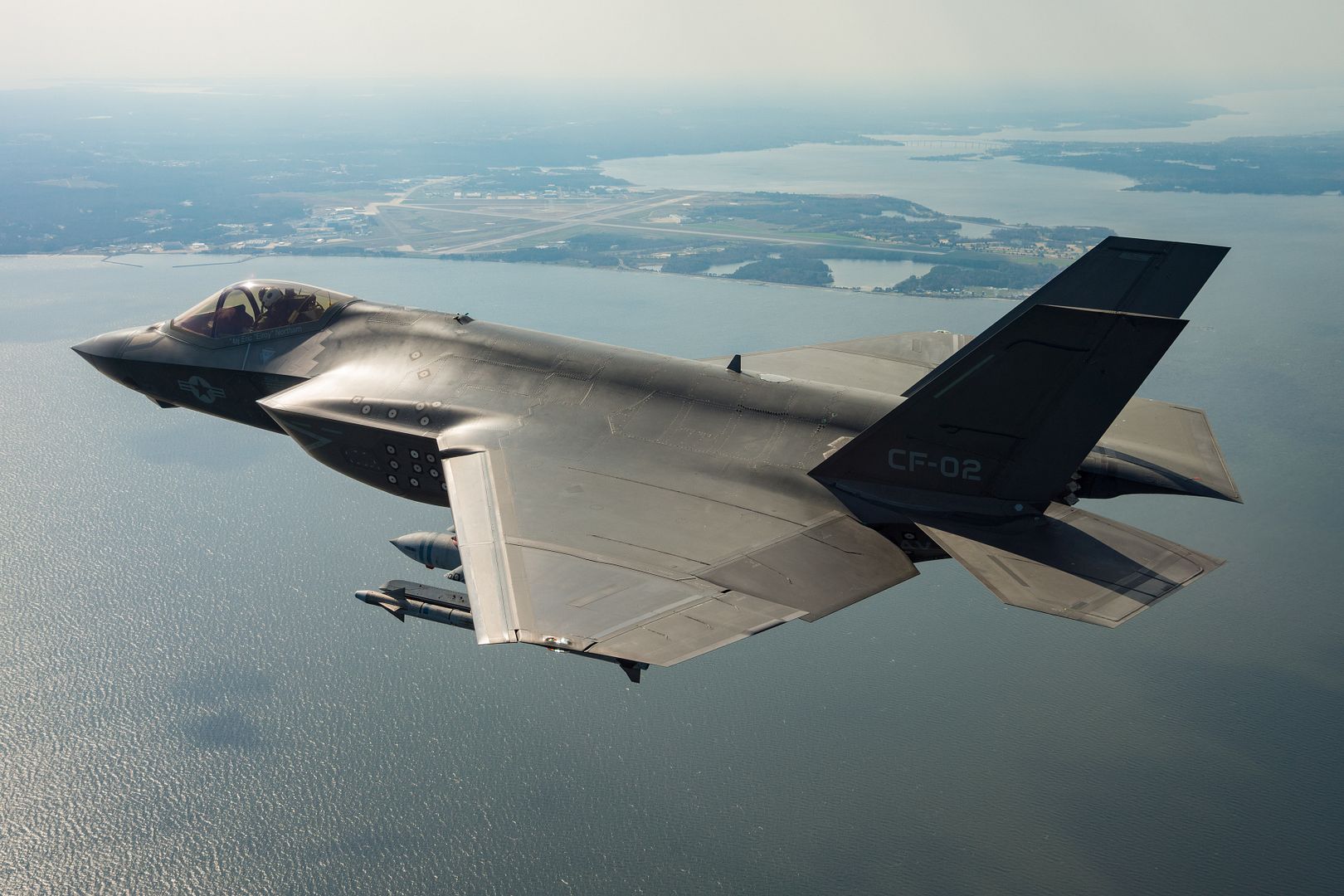
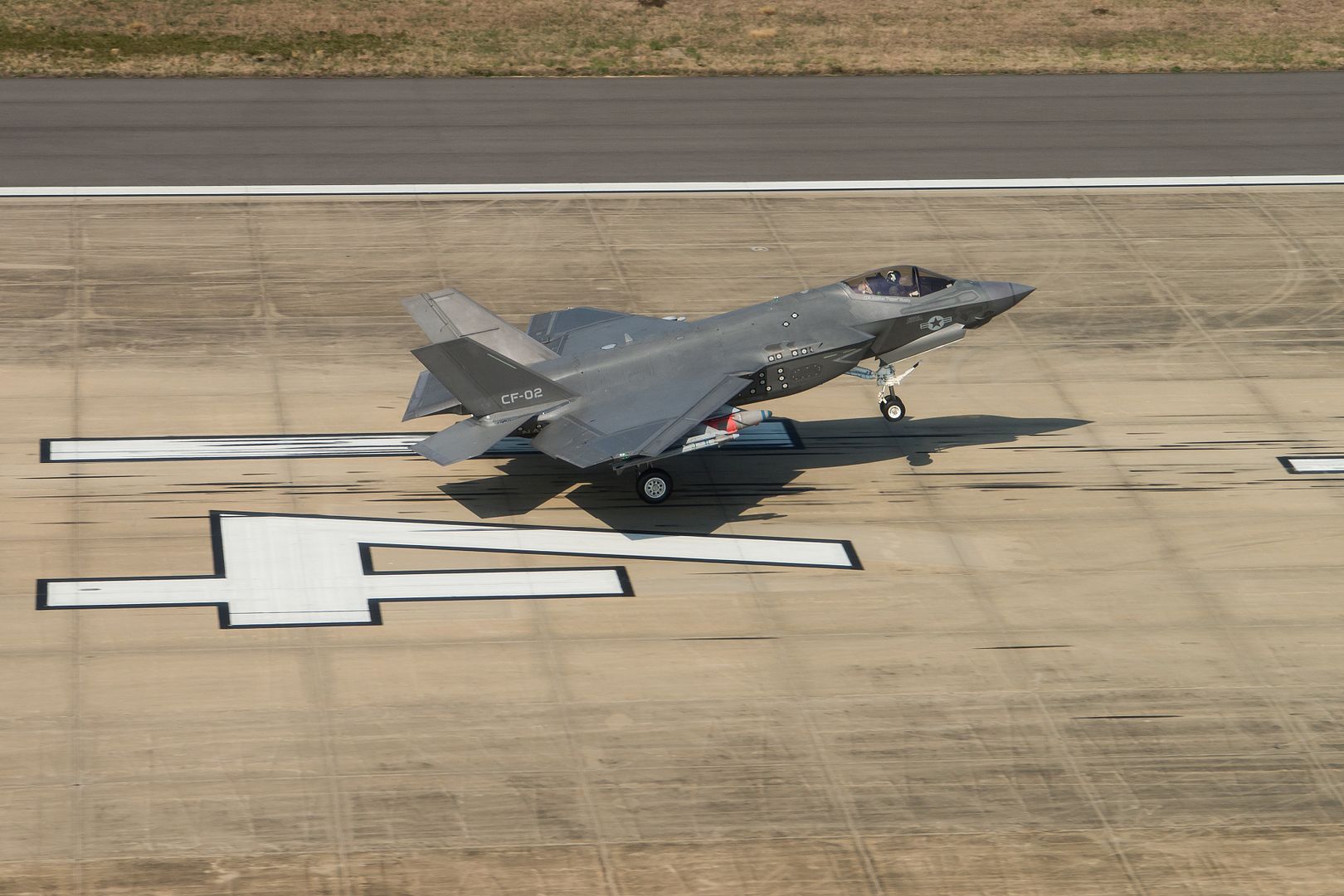
PACIFIC OCEAN (April 10, 2018) An F/A-18C Hornet assigned to the "Blue Blasters" of Strike Fighter Squadron (VFA) 34 takes off from the flight deck of the Nimitz-class aircraft carrier USS Carl Vinson (CVN 70). The Carl Vinson Carrier Strike Group is operating in the Pacific as part of a scheduled deployment. (U.S. Navy photo by Mass Communication Specialist 2nd Class Sean M. Castellano/Released)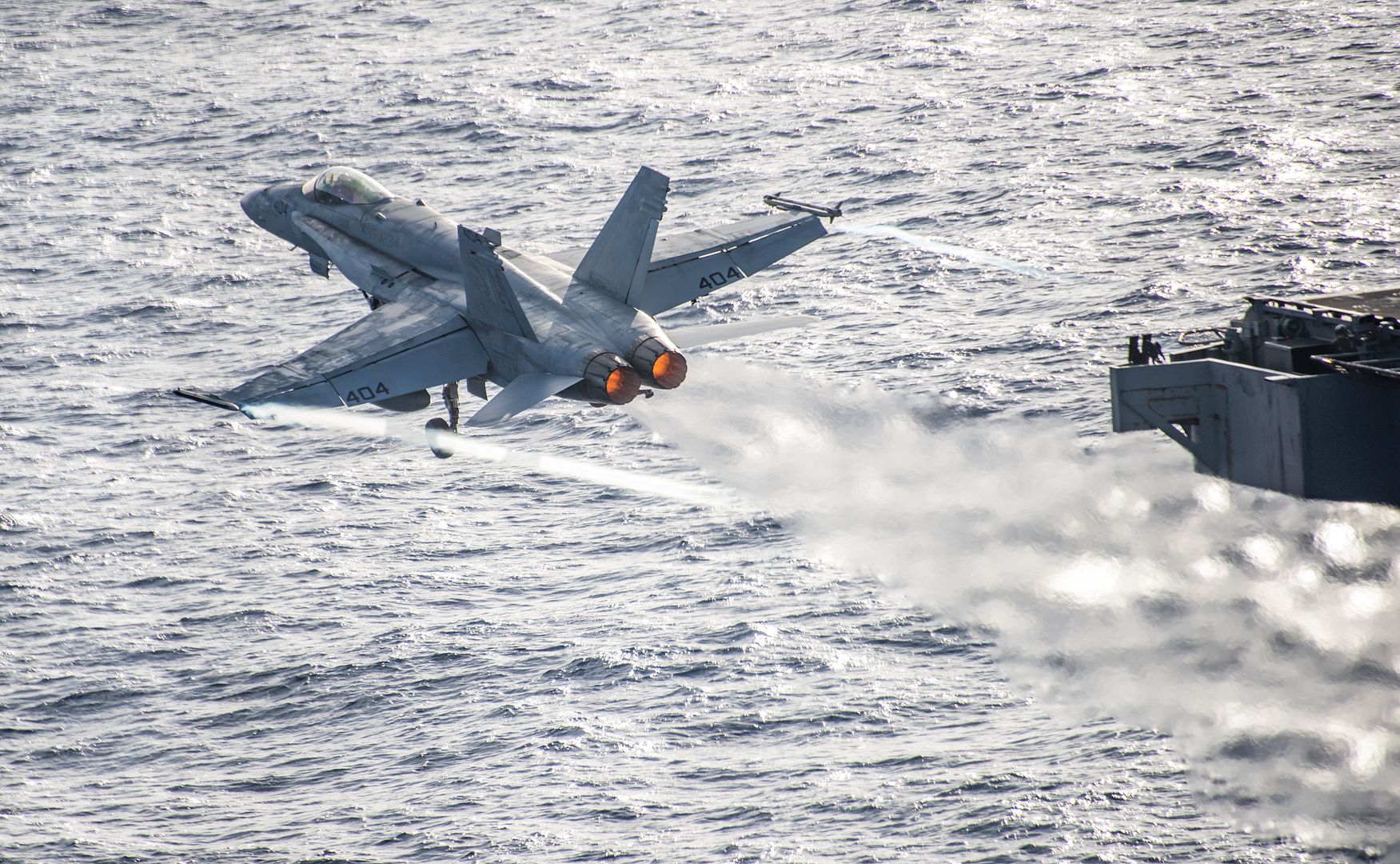
SAS selected the A330-300 to further standardise its long-haul fleet. One new A330-300 equipped with Rolls-Royce Trent 772B engines will join the Scandinavian carrier?s network in the second quarter of 2019. SAS has been an Airbus customer since 1980 with an Airbus fleet of 57 aircraft (eight A340s, eight A330s and 41 A320 Family aircraft) to date.
?We are thankful that SAS has selected the Airbus Family for the second time this week. This further commitment by SAS to the A330 demonstrates the unmatched operating economics and operational versatility of this aircraft,? said Eric Schulz, Airbus Chief Commercial Officer. ?We are delighted to be continuing our long-standing partnership with SAS.?
The A330 is one of the world?s most efficient and versatile widebody aircraft with best-in-class economics making it the benchmark for the growing low-cost, long-haul operations business model worldwide. To date, the A330 Family has attracted over 1,700 orders, making it the world?s best-selling widebody aircraft in its category. More than 1,350 A330 Family aircraft are currently flying today with more than 110 operators worldwide. With an operational reliability of 99.4 percent and various product enhancements, the A330 Family is the most cost-efficient and capable widebody aircraft to date.
-
 Main AdminAn F-15E Strike Eagle from the 336th Fighter Squadron lands, April 11, 2018, at Seymour Johnson Air Force Base, North Carolina. Several members of the 336th FS returned to base after deployment in support of Operation Inherent Resolve. (U.S. Air Force photo by Airman 1st Class Shawna L. Keyes)
Main AdminAn F-15E Strike Eagle from the 336th Fighter Squadron lands, April 11, 2018, at Seymour Johnson Air Force Base, North Carolina. Several members of the 336th FS returned to base after deployment in support of Operation Inherent Resolve. (U.S. Air Force photo by Airman 1st Class Shawna L. Keyes)
A U-2 Dragon Lady takes off from Beale Air Force Base, California, April 12, 2018. The U-2 was preparing conduct a practice formation demonstration with two T-38 Talons for the Beale Air & Space Expo scheduled April 28. (U.S. Air Force photo/ Staff. Sgt. Ramon A. Adelan)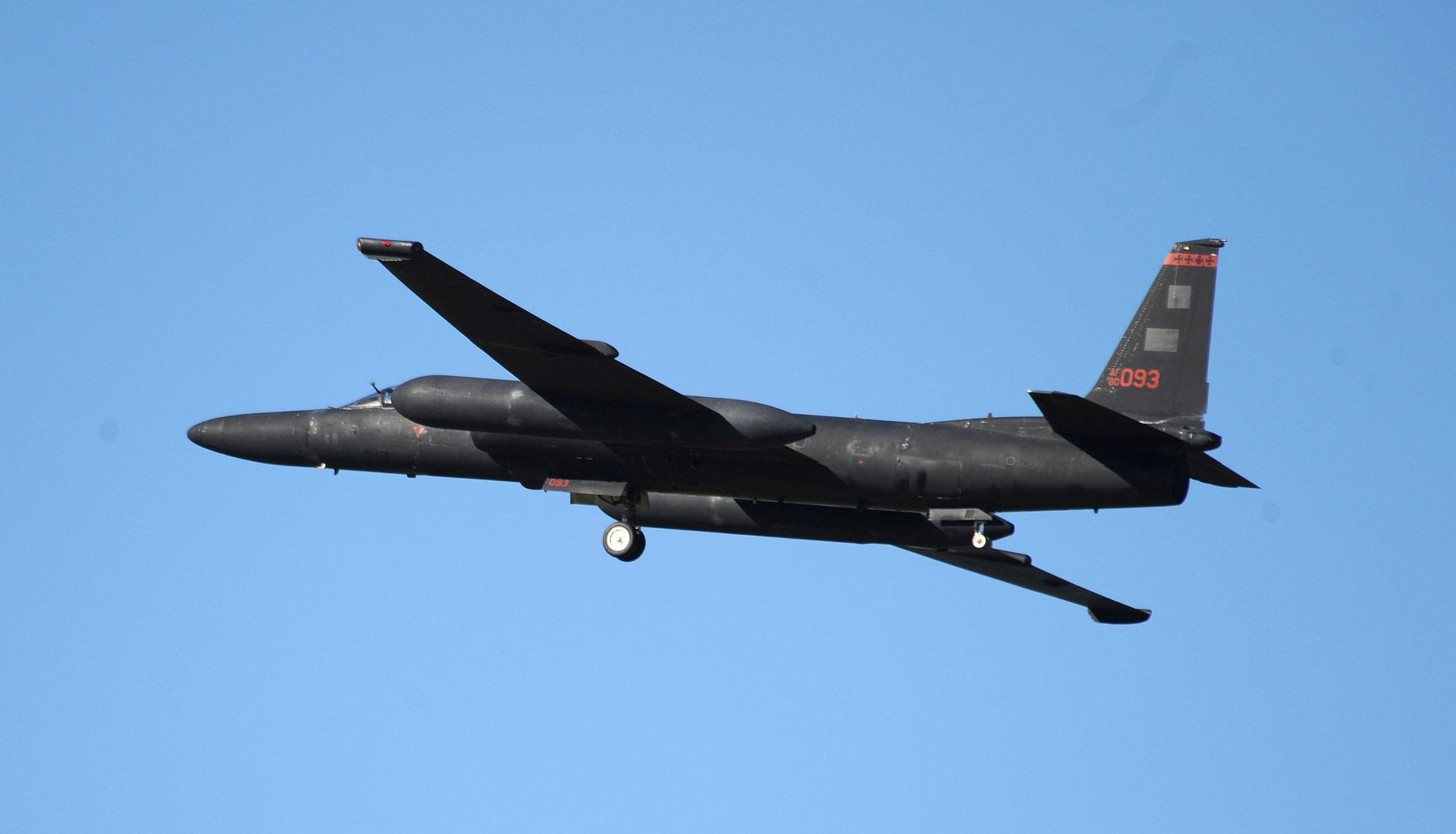
An AH-1Z Viper assigned to Marine Medium Tiltrotor Squadron (VMM) 166 (Reinforced), Marine Aircraft Group 16, 3rd Marine Aircraft Wing, rests on the flight line at Marine Corps Air Station Miramar, Calif., April 12. Marine Heavy Helicopter Squadron (HMH) 361, Marine Light Attack Helicopter Squadron (HMLA) 469 and VMM-166 consolidated to become VMM-166 (Rein) for an upcoming combat deployment with the 13th Marine Expeditionary Unit. MCAS Miramar is home to 3rd MAW and 19 of its squadrons. (U.S. Marine Corps photo by Cpl. Becky Calhoun/Released)
U.S. Marine Corps MV-22B Osprey aircraft attached to Marine Aviation Weapons and Tactics Squadron One prepare to conduct an aerial refuel during a Long Range Raid simulation in conjunction with Weapons and Tactics Instructor Course 2-18 in Tuscon, Arizona, April 11, 2018. WTI is a seven-week training event hosted by MAWTS-1 cadre, which emphasizes operational integration of the six functions of Marine Corps aviation in support of a Marine Air Ground Task Force and provides standardized advanced tactical training and certification of unit instructor qualifications to support Marine Aviation Training and Readiness and assists in developing and employing aviation weapons and tactics. (U.S. Marine Corps photo by Sgt. David Bickel)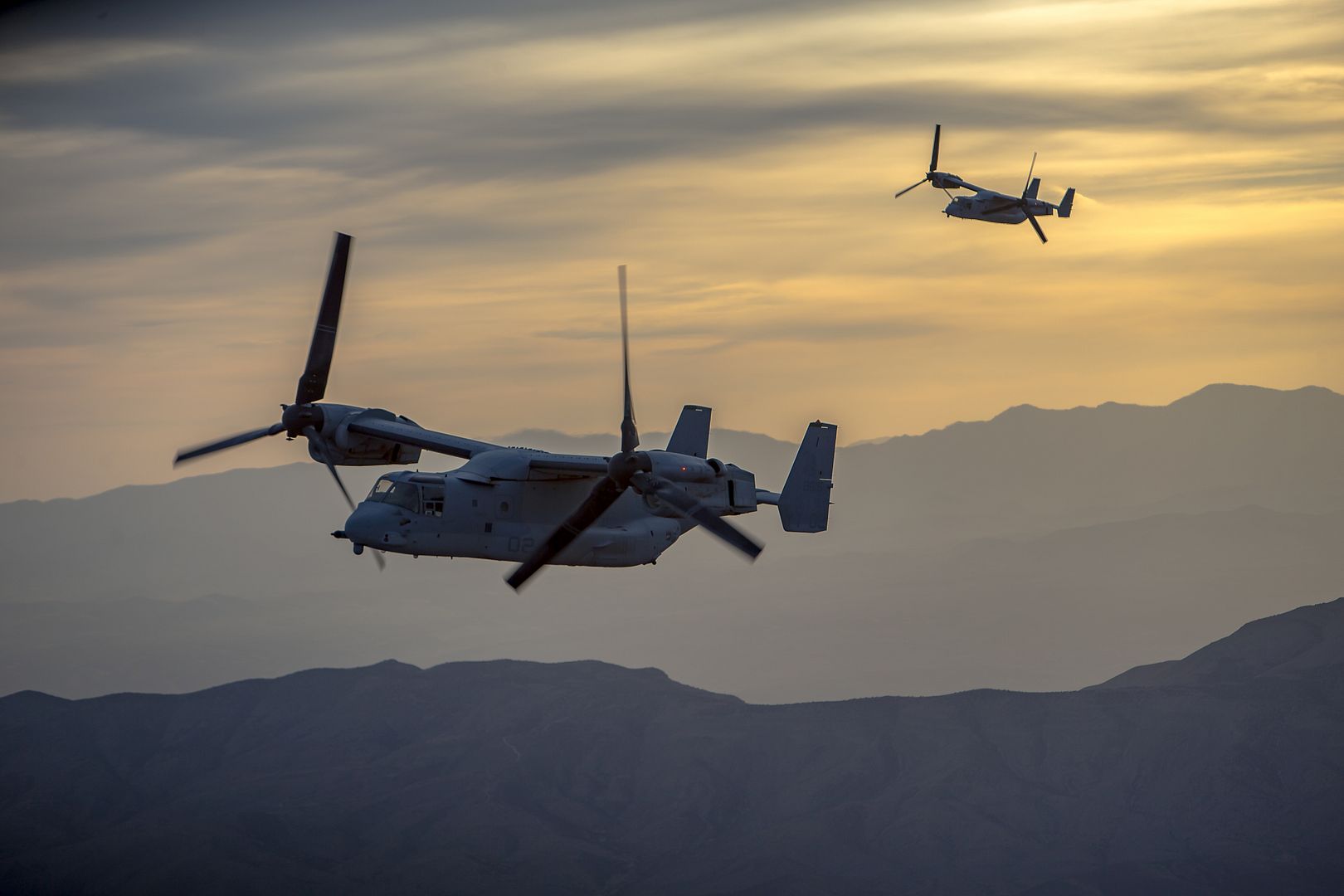
Flight evaluations take two A330neo test aircraft to locations around the globe
The A330neo is demonstrating its capabilities as the newest member of Airbus? proven and highly-reliable twin-engine A330 Family, with flight testing continuing ahead of its planned service entry in Summer 2018.
Two test aircraft have logged more than 700 hours aloft in the 200-plus flights performed as of 10 April, according to A330neo aircraft integration and flight testing integrated product team (IPT) leader Jean-Christophe Bonjour.
He noted that flight testing has covered the globe, including the cold weather validations in Kazakhstan in temperatures as low as -27? C., natural icing testing in the United States, crosswind landing evaluations in Ireland, a Bolivia-based altitude campaign at 8,000 ft., and recently-completed hot weather trials in Mexico, which had temperatures of up to 37? C.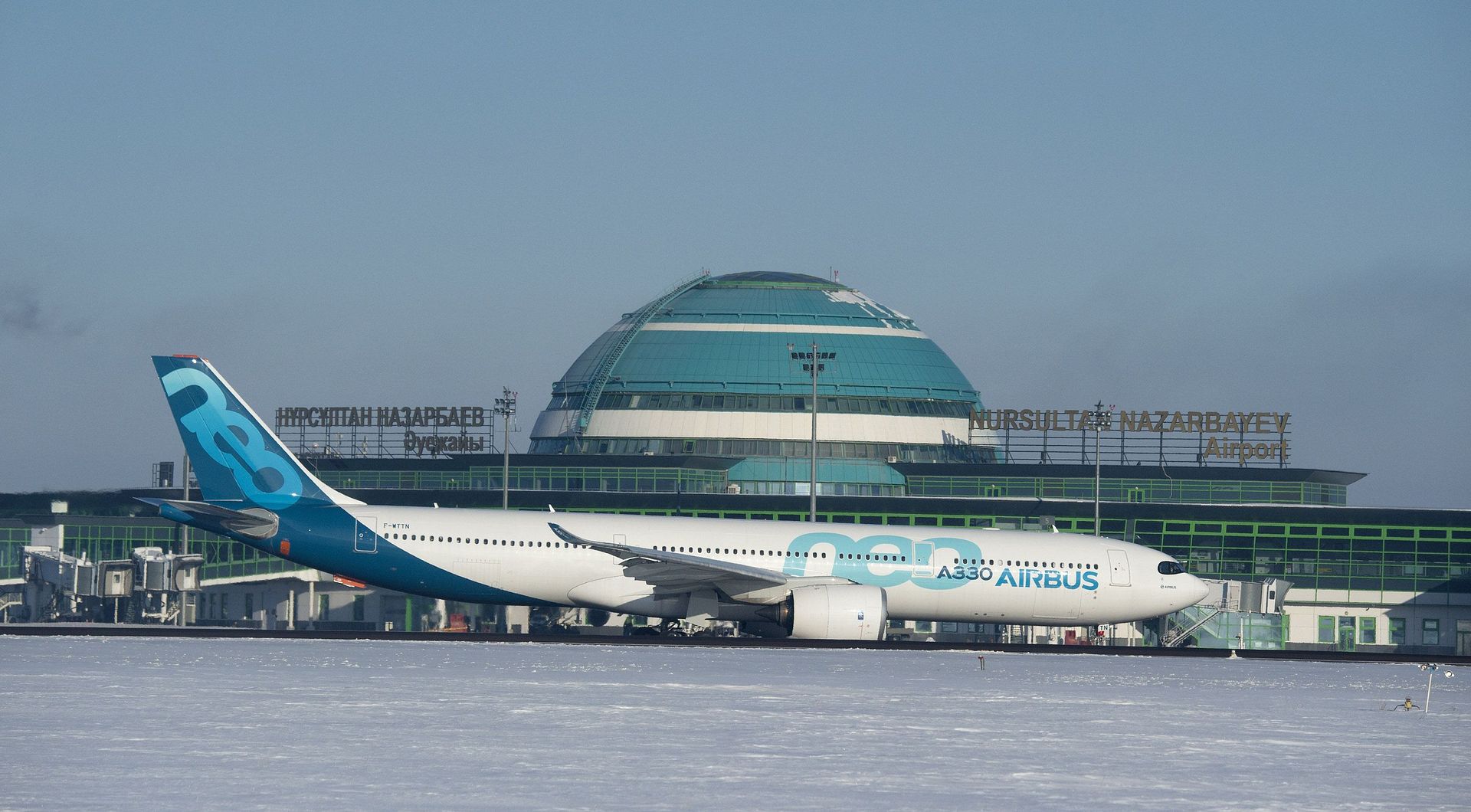
A330neo to join Airbus? jetliner family that seats 140-555 passengers
Crawford Hamilton, Head of A330 Marketing, said the A330neo completes Airbus? new-generation product line, which begins with the single-aisle A320neo Family (A319neo, A320neo and A321neo), increases in size with the A330neo (including the A330-800 and A330-900), followed by the A350 XWB (with the A350-900 and A350-1000) and completed with the A380.
?With all these aircraft, we have a true family covering seating capacities from 140 to over 550 passengers,? Hamilton explained. ?Pilots that fly one of these jetliners are equipped to fly them all thanks to Airbus? unique operational commonality, and aircraft versatility provides the range and flexibility for any type of airline operation.?
The new-generation A330neo, powered by highly-efficient Rolls-Royce Trent 7000 powerplants, has a longer wingspan with new high-efficiency Sharklets and incorporates Airbus? innovative Airspace cabin that it has in common with the A350 XWB. These elements combined deliver the world?s most efficient, most comfortable mid-size twin-aisle airliner.
Further improving the A330neo capabilities is the launch of an increased-range version, with a nine metric tonne increase to the maximum takeoff weight to 251 metric tonnes. This provides up to 1,500 nautical miles more range when compared to typical A330s in service today, enabling airlines to open new markets, while radically improving aircraft economic efficiency, Hamilton added.
April 13, 2018 Montr?al Bombardier Inc., Business Aircraft, Press Release
Bombardier today announced that its show-stopping Global 7000 business jet has been honoured with a Red Dot in the 2018 Red Dot Award: Product Design. Established in 1955, the Red Dot Design Award is a prestigious international design competition and one of the most sought-after recognitions for design and innovation excellence worldwide. This year?s winners were announced on April 9 in Essen, Germany.
?The Global 7000 aircraft redefines standards by which a business jet is measured, and we are very pleased that the jury chose to acknowledge our vision with a Red Dot for high design quality,? said
Brad Nolen, Vice President, Marketing and Product Strategy, Bombardier Business Aircraft. ?We like to refer to our clean-sheet Global 7000 aircraft as ?the aircraft designed without compromise.? The aircraft succeeds not only in elevating the overall in-flight experience, it also ups the ante for performance, speed and range, and it is clearly changing the game in the private jet industry.?
Bombardier?s Global 7000 business jet was selected by the 39-person jury from among a crowded field, with more than 6,300 submissions from close to 60 countries competing in several categories. The state-of-the art aircraft received the Red Dot in the 2018 Red Dot Award: Product Design in the ships, trains and planes category. The strict judging criteria focused on the level of innovation, functionality, formal quality, ergonomics and durability, among others.
?Success in the competition is proof of the good design quality of the products and once again shows that companies are on the right path. When I speak about good design, I am referring to more than just an attractive product. All of the products are characterized by outstanding functionality.
This demonstrates that the designers have understood their clients and their needs,? said Professor Dr. Peter Zec, founder and CEO of the Red Dot Award.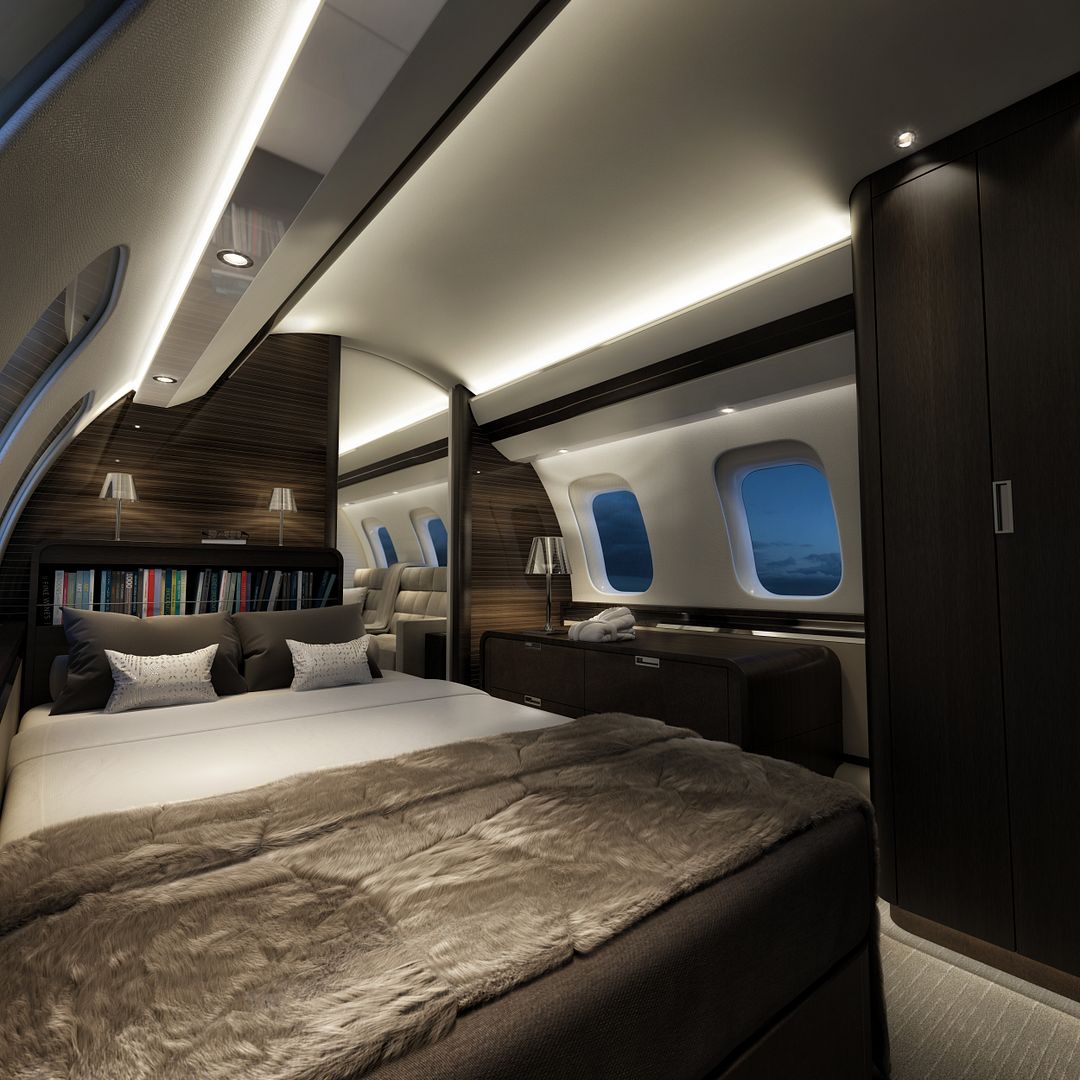
In addition to its signature smooth ride, Bombardier?s Global 7000 aircraft, which is scheduled to enter service in the second half of 2018, is a virtual showcase for design innovation. A masterpiece of creative and thoughtful design, the Global 7000 aircraft?s sophisticated styling sets the benchmark for the most exceptional business jet experience. Every detail of the cabin interior has been crafted to create a rich and satisfying experience, from its class-leading and largest kitchen in the industry and forward-thinking lighting to the first-ever dedicated stateroom with a fixed bed.
The Red Dot Award is one of the most prestigious design awards worldwide and honours innovation, concepts and visions. All award-winning products will be featured in the Red Dot Design Yearbook as well as online.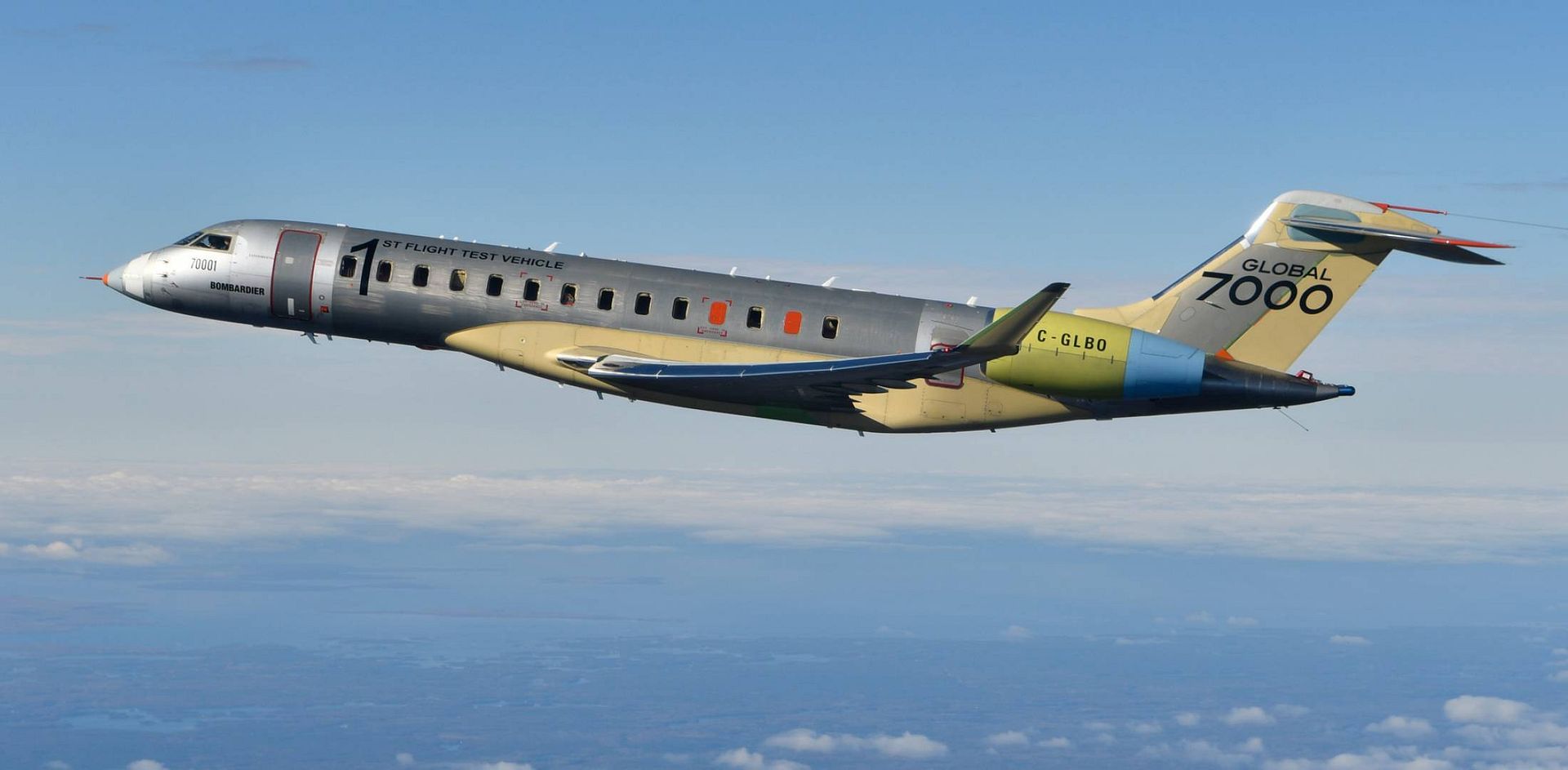
-
 Main AdminAn Alaska Air National Guard UH-60 Black Hawk prepares to start its engines in preparation for flight April 14, 2018, at the Ralph Wien Memorial Airport in Kotzebue, Alaska, in support of exercise Arctic Care 2018. U.S. and Canadian servicemembers were in Kotzebue for exerciseArctic Care 2018, which provided critical medical, dental, optometry and veterinary care for underserved villages in the Maniillaq Service Area . (U.S. Air Force photo by 1st Lt. Rashard Coaxum)
Main AdminAn Alaska Air National Guard UH-60 Black Hawk prepares to start its engines in preparation for flight April 14, 2018, at the Ralph Wien Memorial Airport in Kotzebue, Alaska, in support of exercise Arctic Care 2018. U.S. and Canadian servicemembers were in Kotzebue for exerciseArctic Care 2018, which provided critical medical, dental, optometry and veterinary care for underserved villages in the Maniillaq Service Area . (U.S. Air Force photo by 1st Lt. Rashard Coaxum)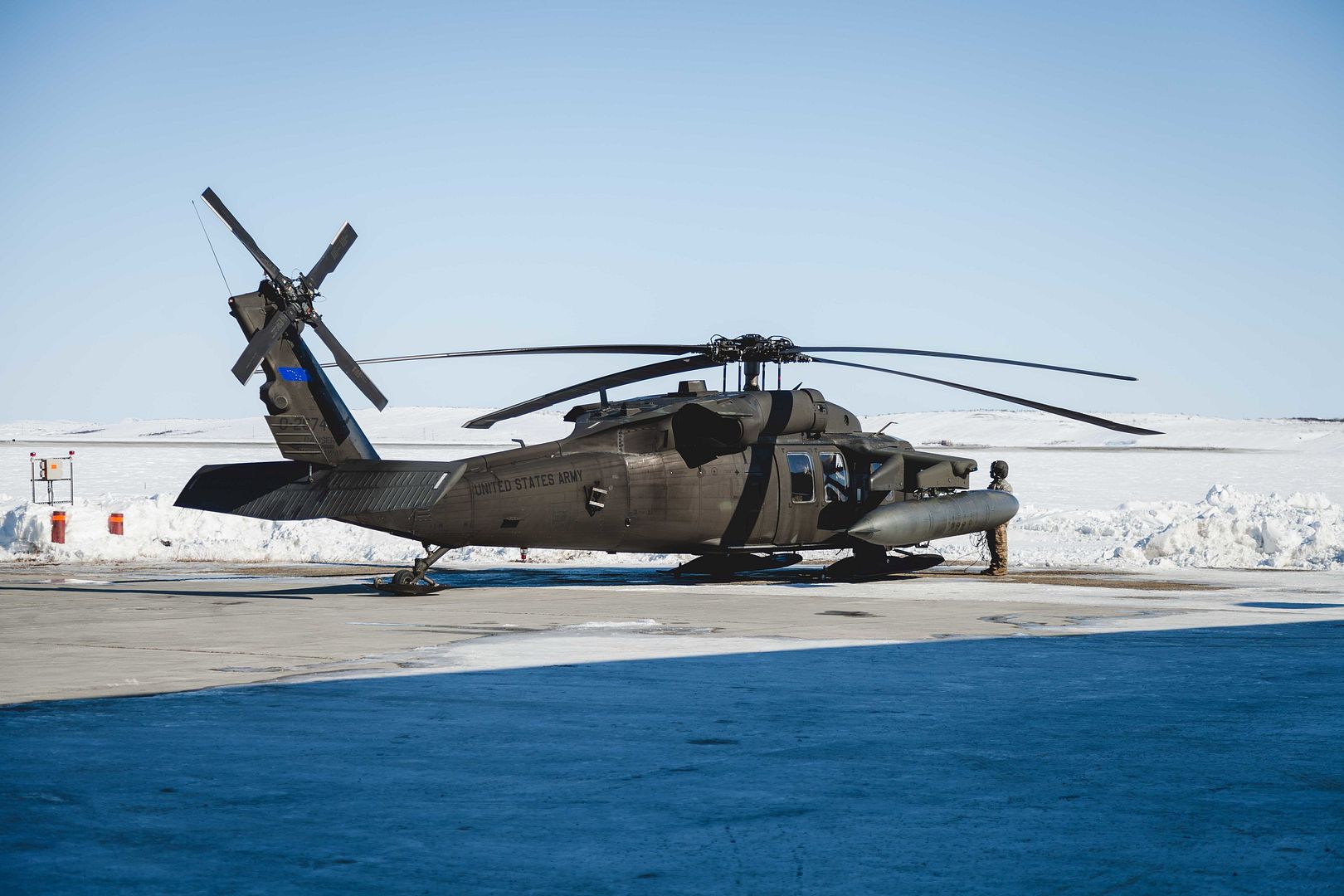
PACIFIC OCEAN (April 16, 2018) An F/A-18F Super Hornet, assigned to the Fighting Redcocks of Strike Fighter Attack Squadron (VFA) 22, launches from the flight deck of the aircraft carrier USS Theodore Roosevelt (CVN 71). Theodore Roosevelt is currently underway for a regularly scheduled deployment in the U.S. 7th Fleet area of operations in support of maritime security operations and theater security cooperation efforts. (U.S. Navy photo by Mass Communication Specialist Seaman Michael Colemanberry/Released)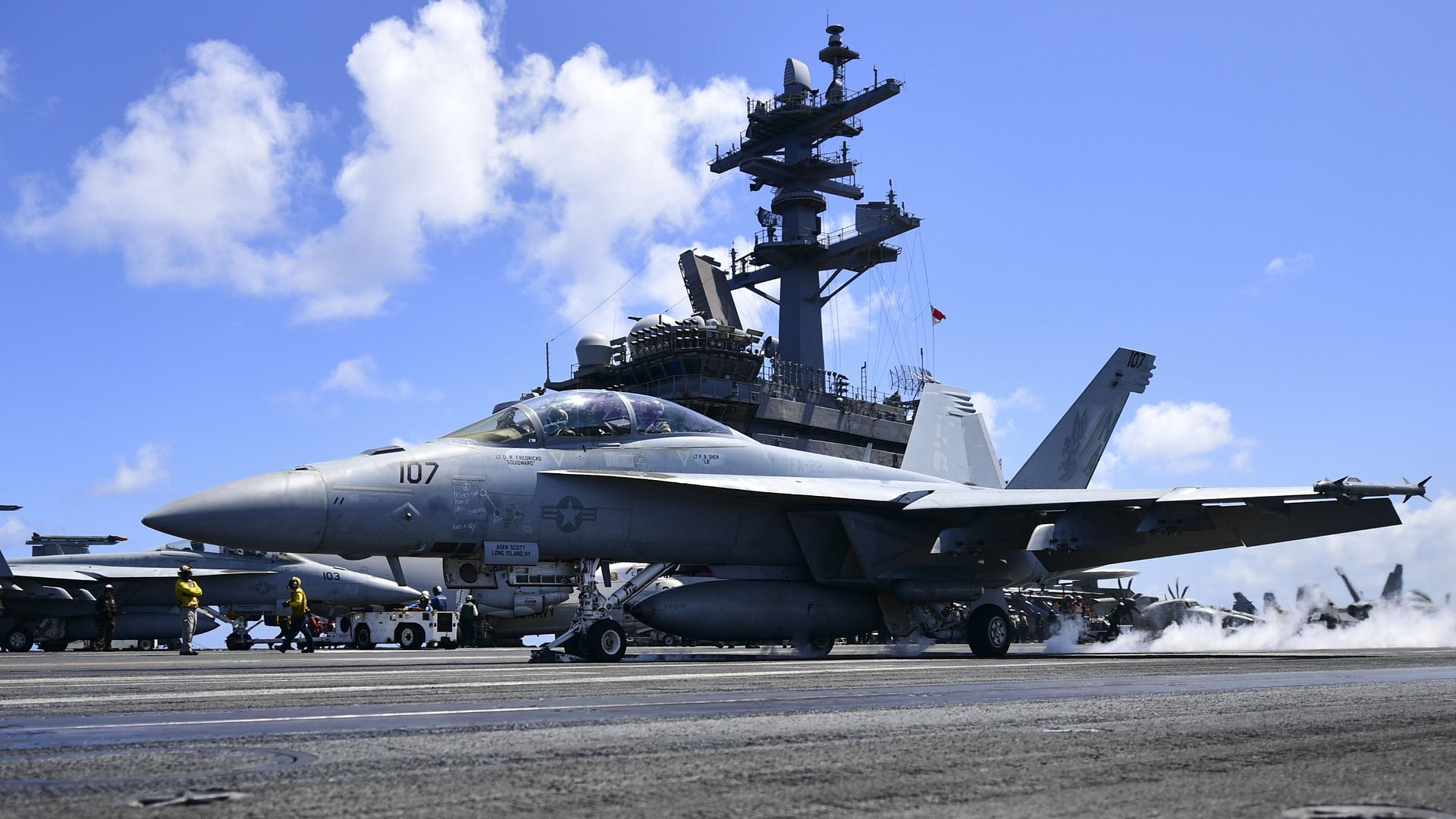
Twilight refueling between a B model F-35 with a KC-135 Stratotanker in the skies over the Mojave Desert, California. (Courtesy photo by Chad Bellay/Lockheed Martin)
PACIFIC OCEAN (April 13, 2018) An F-35B Lightning II prepares to land aboard the amphibious assault ship USS Wasp (LHD 1) off the coast of Okinawa, Japan. A detachment of F-35Bs with Marine Fighter Attack Squadron 121 joined Wasp for Spring Patrol 2018, marking the F-35's first operational deployment with a Marine expeditionary unit. (U.S. Marine Corps photo's by Lance Cpl. Amy Phan/Released)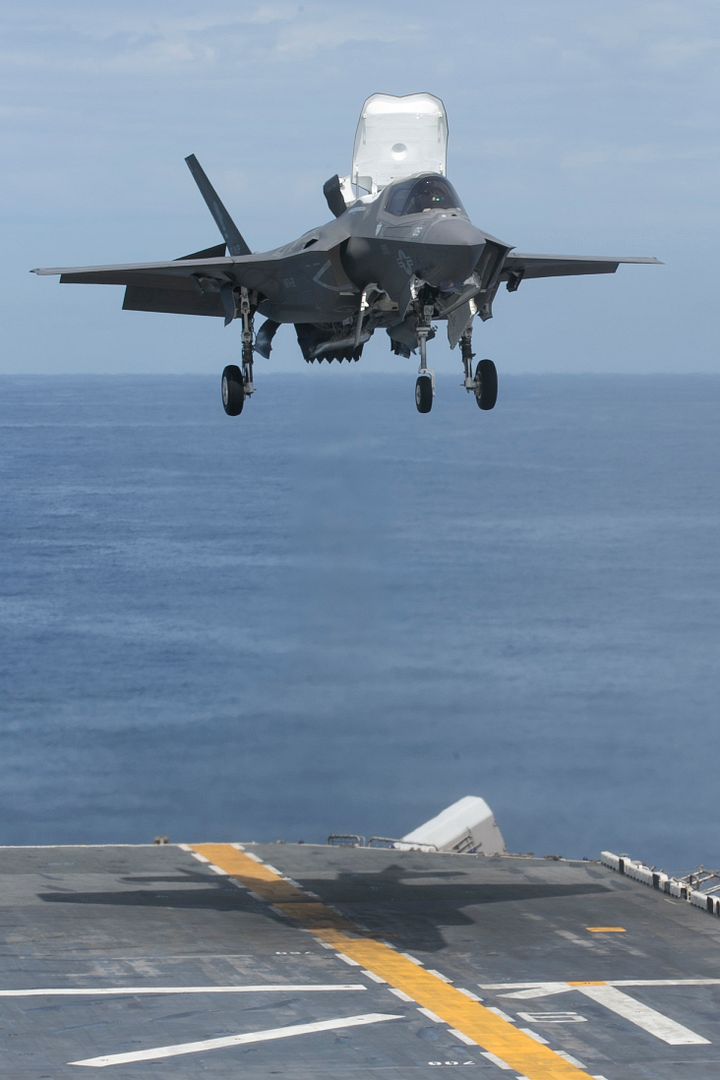
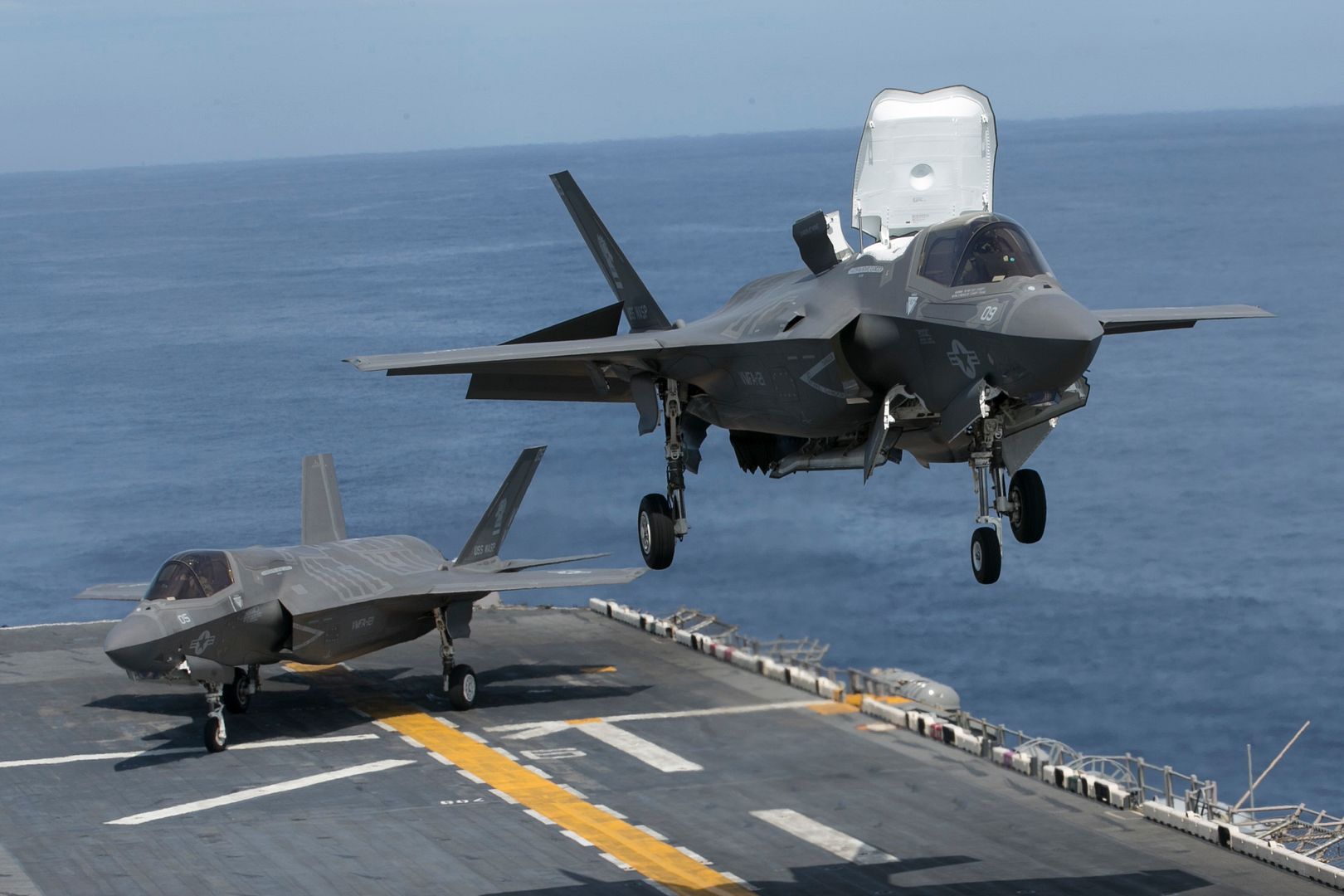
SEATTLE, April 16, 2018 /PRNewswire/ -- Boeing [NYSE: BA] today celebrated the fly away of the first BBJ MAX airplane, which extends the range, performance and cabin comforts of the world's most popular business jetliner.
Boeing today celebrated the fly away of the first BBJ MAX airplane, which extends the range, performance and cabin comforts of the world?s most popular business jetliner. The airplane is seen here outside of the BBJ headquarters in Seattle. (Craig Larsen photo)
"We are excited to see the first BBJ MAX come to life and fly through the development milestones. In the past few weeks, the airplane has achieved factory rollout, first flight, multiple certifications, and now flyway," said Greg Laxton, Head of Boeing Business Jets.
The first airplane, a BBJ MAX 8, will now be outfitted with an auxiliary fuel tank, which will enable the new owner to fly up to 6,640 nautical miles (12,297 km) in a standard configuration.
"The BBJ MAX will be able to connect distant cities like a widebody commercial jet. It's one of the reasons why this game-changing airplane outsold the competition four to one last year," said Laxton.
Customers from around the world have placed orders for nearly 20 BBJ MAX airplanes, including all three models: the BBJ MAX 7, BBJ MAX 8, and BBJ MAX 9. The first delivery is set for later this year.
Aside from its market-leading range and interior space, the BBJ MAX also features a system that provides a lower cabin altitude, integrated airstairs, and other modern amenities.
The Boeing Business Jet MAX - based on the new 737 MAX airplane family ? is designed with more fuel efficient engines, improved aerodynamics, and advanced systems. The new technology allows all three models of the family to fly farther and have lower operating costs than its predecessors.
About Boeing Business Jets
Boeing Business Jets offers a portfolio of ultra-large-cabin, long-range airplanes that are perfectly suited for private, charter, corporate and Head of State operations. The product line includes the BBJ MAX family, and high performance versions of Boeing's 787 Dreamliner, 777, and 747-8. Since its launch in 1996, Boeing Business Jets has won 258 orders and delivered 233 of those jets.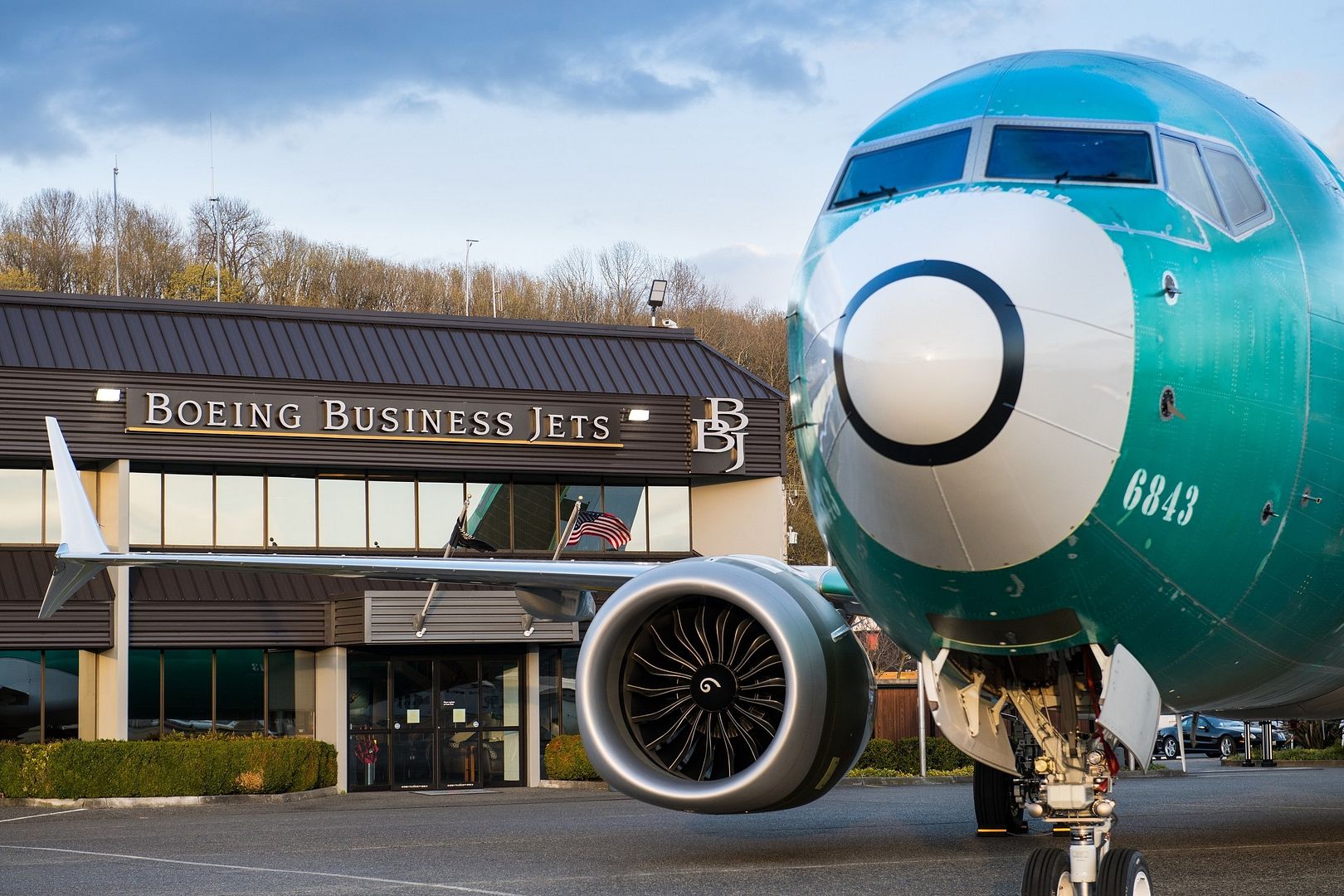
For more information, visit: www.boeing.com/bbj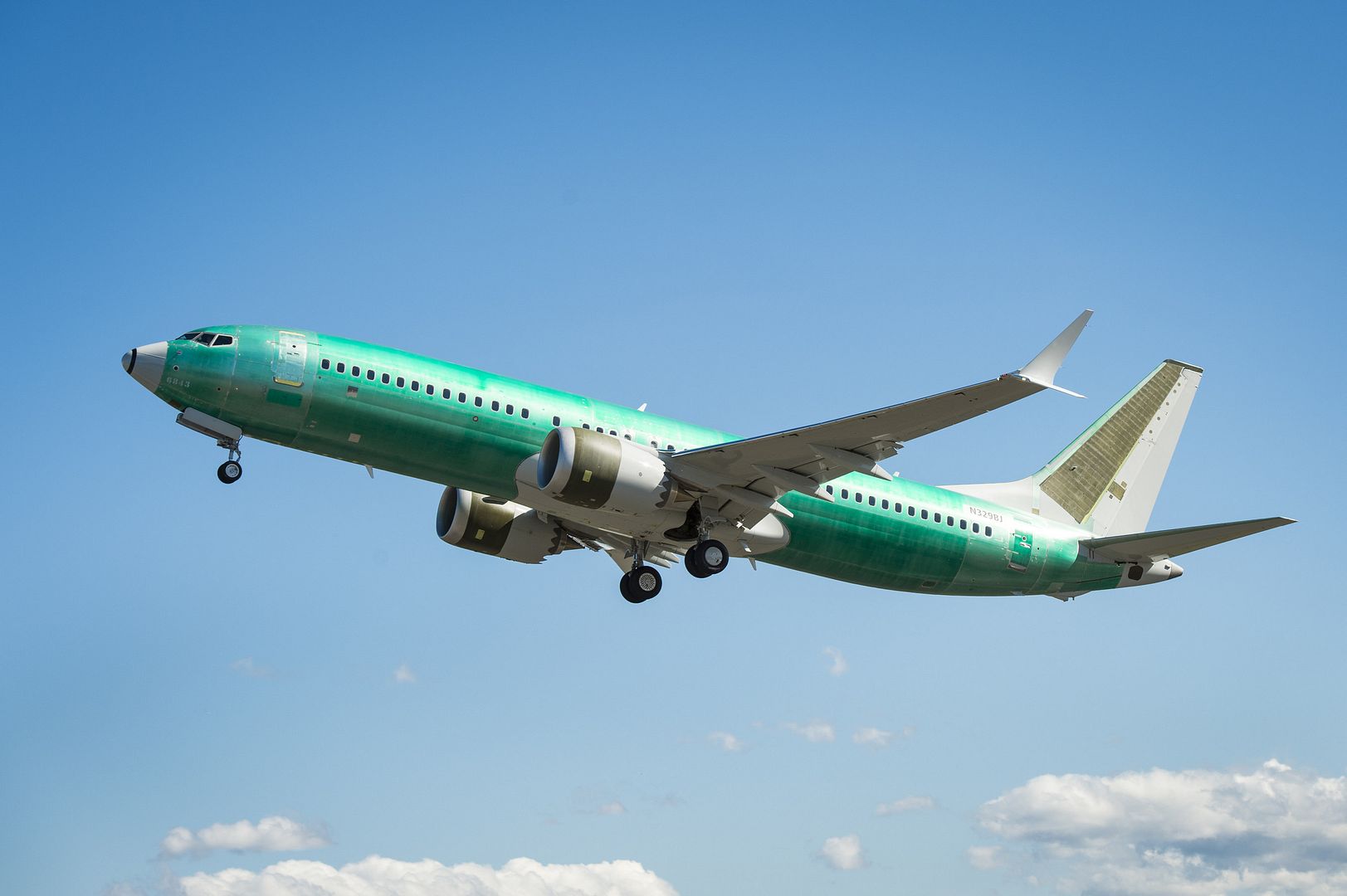
Primera Air, a low-fare Nordic airline, has taken delivery of its first Airbus A321neo at an event in Hamburg, Germany attended by Andri M?r Ing?lfsson, CEO and President of Primera Travel Group and Kimon Sotiropoulos, Vice President Sales Northern and Central Europe from Airbus. The aircraft, which was assembled in Hamburg, is the first of three A321neos to be leased from GECAS in 2018. Primera Air will also lease a further five A321neos from other lessors, including two A321LRs, growing its fleet to eight aircraft in 2018.
The aircraft, powered by CFM International LEAP-1A engines features a two-class layout with 16 premium and 182 economy seats. The aircraft was selected by Primera Air for its outstanding operational efficiency, comfort and range. The aircraft will be deployed in the United Kingdom and France on transatlantic destinations to North America.
The A321 is the largest member of the A320 Family, seating up to 240 passengers, depending on cabin configuration. Incorporating the latest engines, aerodynamic advances and cabin innovations, the A321neo offers a reduction in fuel consumption of at least 15 percent per seat from day one and 20 percent by 2020.
About Primera
Primera Air is a low-fare Nordic airline that offers scheduled flights from Europe to more than 70 destinations across the Mediterranean, Middle East, Asia, Caribbean and North America. Originally founded in Iceland in 2004 as a charter provider, Primera Air has grown to become a fully scheduled LCC that now carries over one million passengers each year. Initially, Primera Air operated charter flights for major Scandinavian tour operators with its main hubs in Denmark and Sweden, but gradually it has moved towards scheduled services. Today, Primera Air operates mid and long-haul flights from its bases in Scandinavia, UK and France.
April 15, 2018 Montr?al Business Aircraft, Bombardier Inc., Press Release
Bombardier is proud to reveal that its marquee Global 7000 business jet, having completed multiple long-range flights around the world, now boasts an outstanding range of 7,700 nautical miles, connecting more city pairs than any other business aircraft.
?We are thrilled to offer this extended range to our loyal customers, who are the driving force behind our engineering feats and who will soon own an aircraft that simply has no peer,? said David Coleal, President, Bombardier Business Aircraft. ?Not only are we standing by our commitment to begin delivering Global 7000 aircraft this year, we are exceeding expectations along the way.?
Global 7000 flight test vehicles have completed several long-haul flights to destinations including Sydney, Dubai and Hawaii. This rigorous flight test program has demonstrated the aircraft?s incredible reach, and Bombardier?s ability to surpass its commitments.
The new 7,700-nautical-mile baseline range will be a feature on the Global 7000 aircraft for all existing and future customers. This enhanced performance will come at no additional cost to customers.
The Global 7000 aircraft, the most spacious and longest range business jet ever built, is on track to enter service during the second half of 2018. The flight test program is progressing to plan, with all five test vehicles in flight. The flight test program, which began in November 2016, has completed more than 1,800 hours of flight testing and is currently finalizing certification for the aircraft.
With a maximum operating range of 7,700 nautical miles, the Global 7000 aircraft can fly farther than any other business jet. The aircraft was widely publicized as being able to connect some of the world?s most expansive city pairings, including such routes as New York to Shanghai, and Singapore to Seattle. Today, Bombardier can confirm that with its extended range, the Global 7000 aircraft is the only business aircraft that can connect New York to Hong Kong, and Singapore to San Francisco.*
On any flight, short or long, the Global 7000 aircraft?s advanced wing optimizes speed, range and control, ensuring an exceptionally smooth ride.
The success of the Global 7000 flight test program speaks to the spirit of innovation at Bombardier, and to the hard work that has resulted in significant milestones along this aircraft?s journey toward entering service.
Just five months into testing, this high-speed aircraft set a record as the largest business jet to operate so close to the sound barrier, reaching a milestone top speed of Mach 0.995.
And while the Global 7000 flight test vehicles are outperforming expectations in the skies, interior completions work on our customer aircraft is well under way at Bombardier?s state-of-the-art facilities in Montreal.
With its four true living spaces, the Global 7000 aircraft is unique among business jets in spaciousness, luxurious comfort and design flexibility. Its leading-edge cabin entertainment system, coupled with ultra-fast connection speeds via Ka-band, allows passengers to stream high-definition content and enjoy a reliable entertainment experience. The Global 7000 aircraft?s modern and multi-functional kitchen features unprecedented storage space for an exceptional dining experience.
The Bombardier Global 7000 aircraft is a 2018 Red Dot Award winner for Product Design.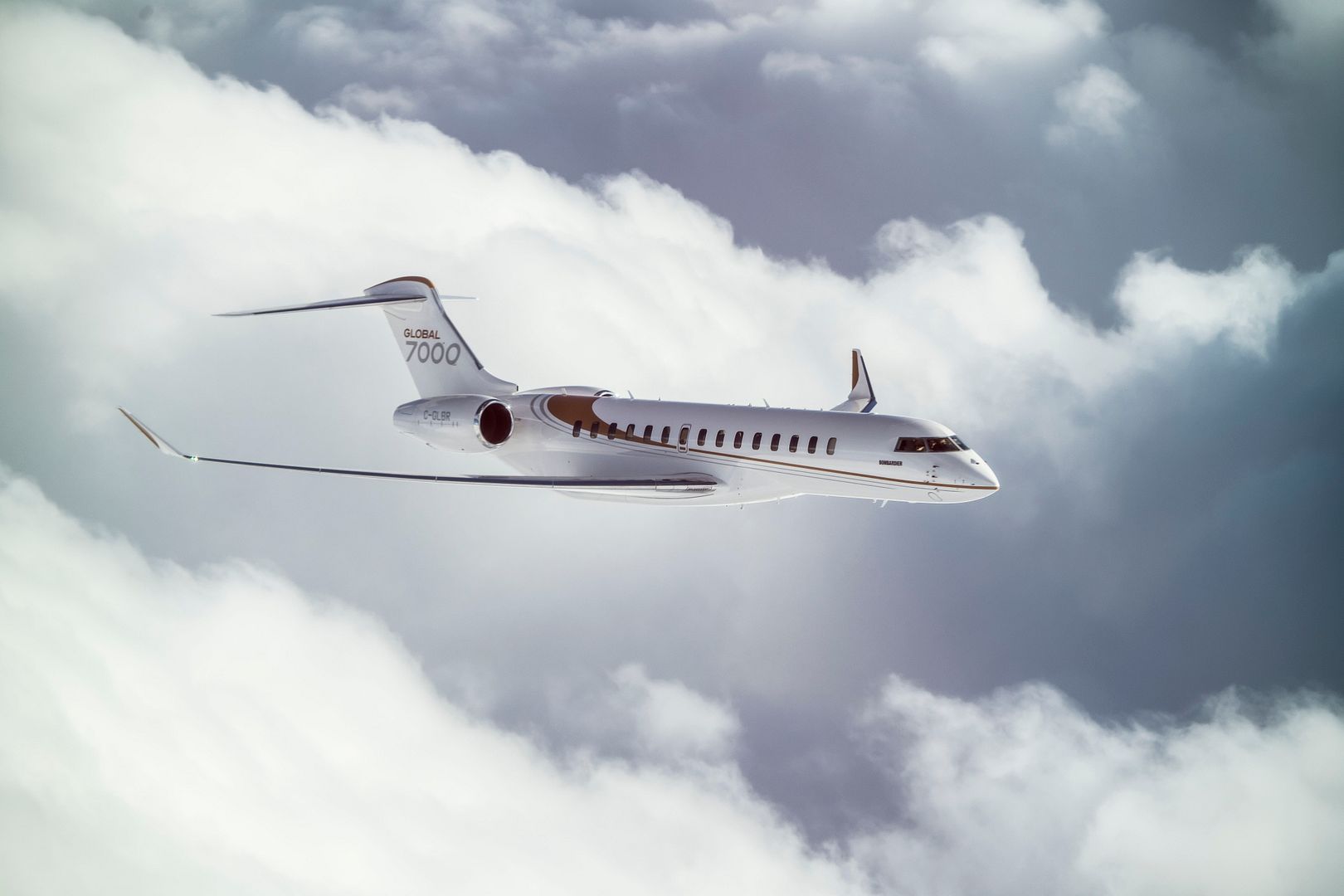
-
 Main AdminThe Italian air force Frecce Tricolori "Tricolor Arrows" aerobatics team soars over Aviano Air Base, Italy, during an air demonstration for an Italian and American audience on April 16, 2018. The team fly in an Aermacchi MB-339-A/PAN fighter-trainer aircraft performing aerial acrobatics, showing off their colors and expertise. (U.S. Air Force photo by Airman 1st Class Benjamin Cooper & Senior Airman Cary Smith)
Main AdminThe Italian air force Frecce Tricolori "Tricolor Arrows" aerobatics team soars over Aviano Air Base, Italy, during an air demonstration for an Italian and American audience on April 16, 2018. The team fly in an Aermacchi MB-339-A/PAN fighter-trainer aircraft performing aerial acrobatics, showing off their colors and expertise. (U.S. Air Force photo by Airman 1st Class Benjamin Cooper & Senior Airman Cary Smith)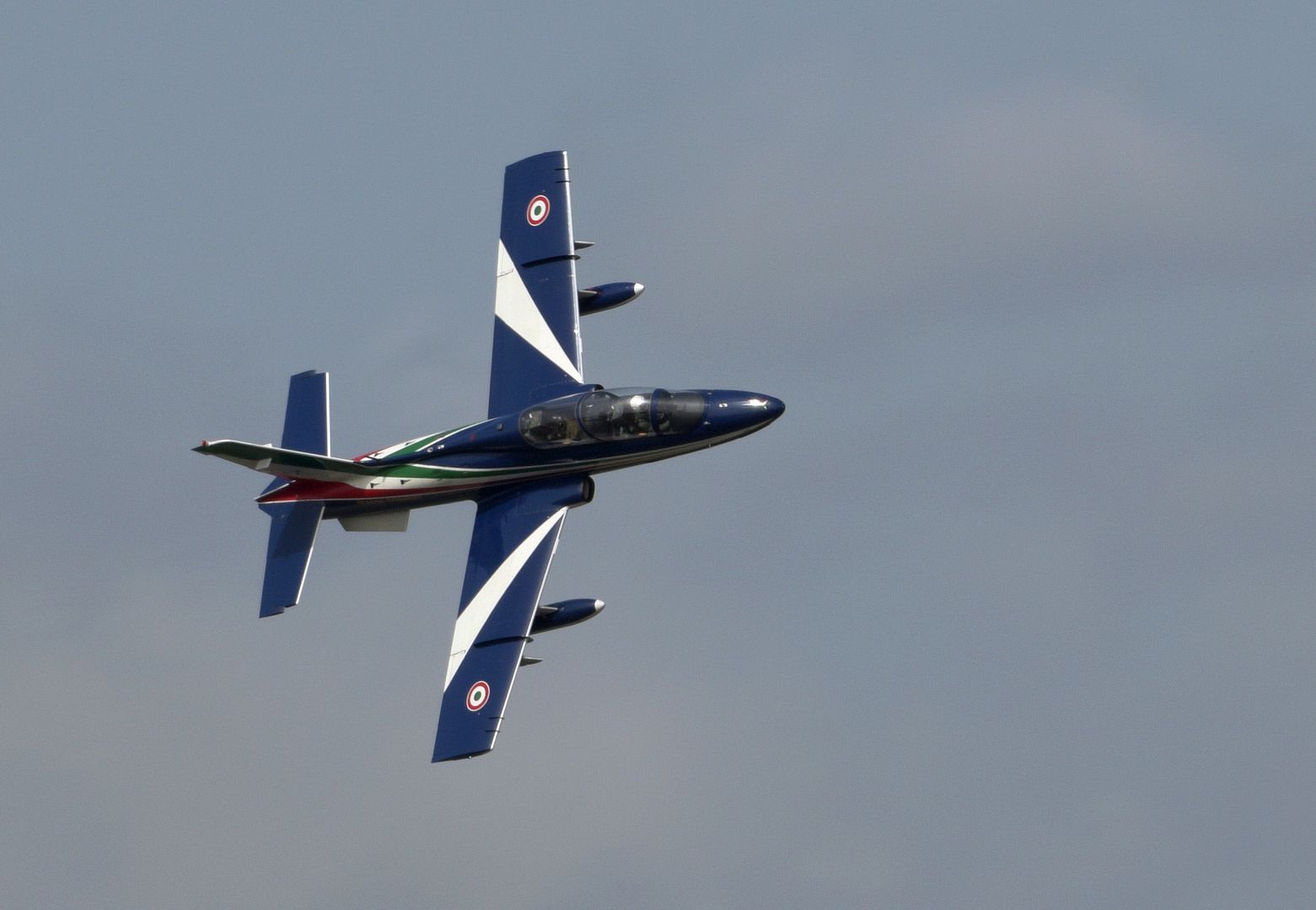
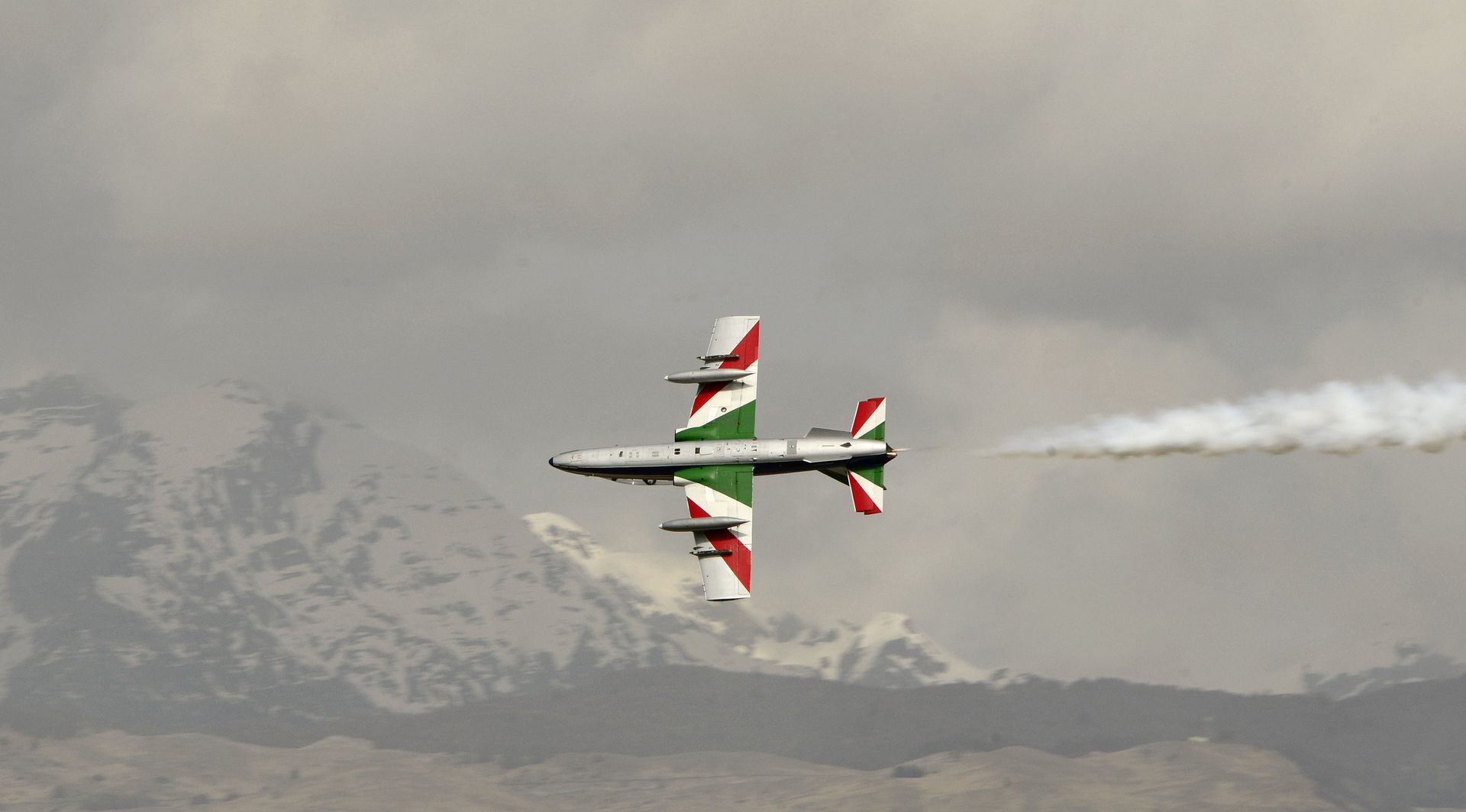
An F-15E Strike Eagle assigned to the 336th Fighter Squadron prepares to land on the runway, April 16, 2018, at Seymour Johnson Air Force Base, North Carolina. The squadron was recently deployed to Southwest Asia in support of Operation Inherent Resolve. (U.S. Air Force photo by Staff Sgt. Brittain Crolley)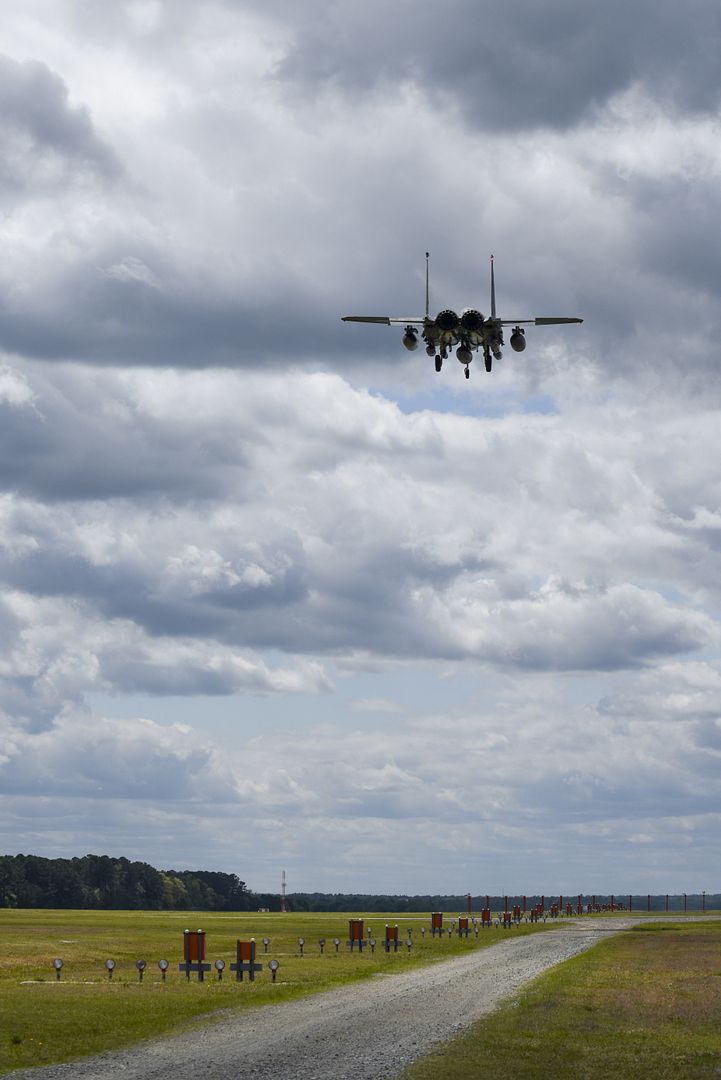
JORDAN (April 17, 2018) A U.S. Marine Corps CH53-E Super Stallion aircraft assigned to Marine Medium Tiltrotor Squadron 162 (Reinforced), 26th Marine Expeditionary Unit (MEU), prepares for a landing to utilize a Forward Arming and Refueling Point (FARP) in support of Eager Lion 18, Jordan, April 17, 2018. Eager Lion integrates U.S. Navy and Marine Corps assets to practice and rehearse a range of critical capabilities available to U.S. Central Command both afloat and ashore to promote stability and security in the region. (U.S. Marine Corps photo by Cpl. Santino D. Martinez/Released)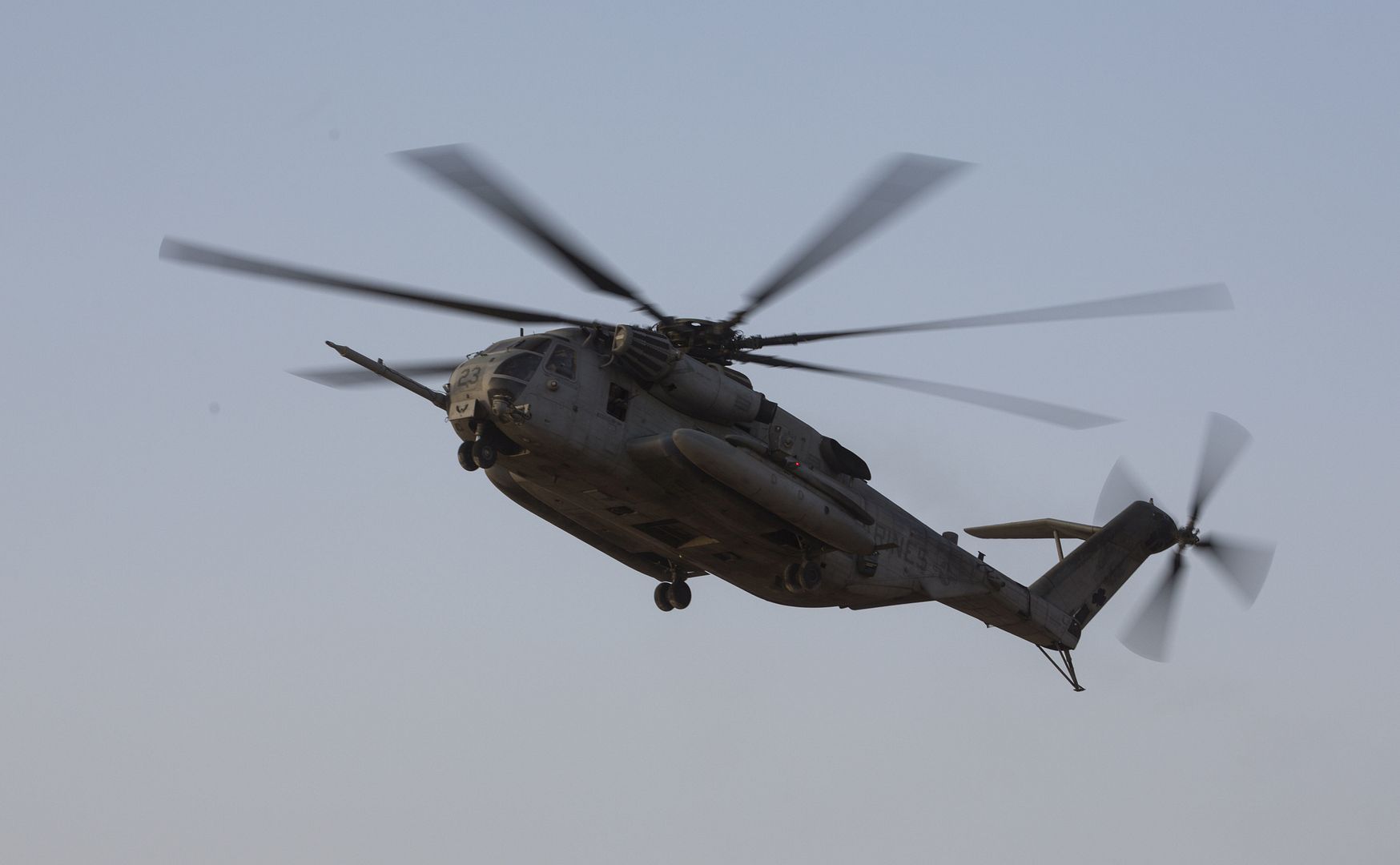
Lt Cmdr Chris Tabert, Air Test and Evaluation Squadron (VX) 23, pilots Navy F-35C test aircraft CF-02 on Flt 595 for an external GBU-31 flutter and Flying Qualities test flight from Naval Air Station Patuxent River, Maryland, April 10, 2018.
Photo by Dane Wiedmann
TUSCALOOSA, Ala. (April 13, 2018) Lt. Tyler Davies, Lead Solo pilot assigned to the U.S. Navy Flight Demonstration Squadron, the Blue Angels, performs the Sneak Pass during a practice demonstration for the Tuscaloosa Regional Air Show. The Blue Angels are scheduled to perform more than 60 demonstrations at more than 30 locations across the U.S. and Canada in 2018. (U.S. Navy photo by Mass Communication Specialist 1st Class Daniel M. Young/Released)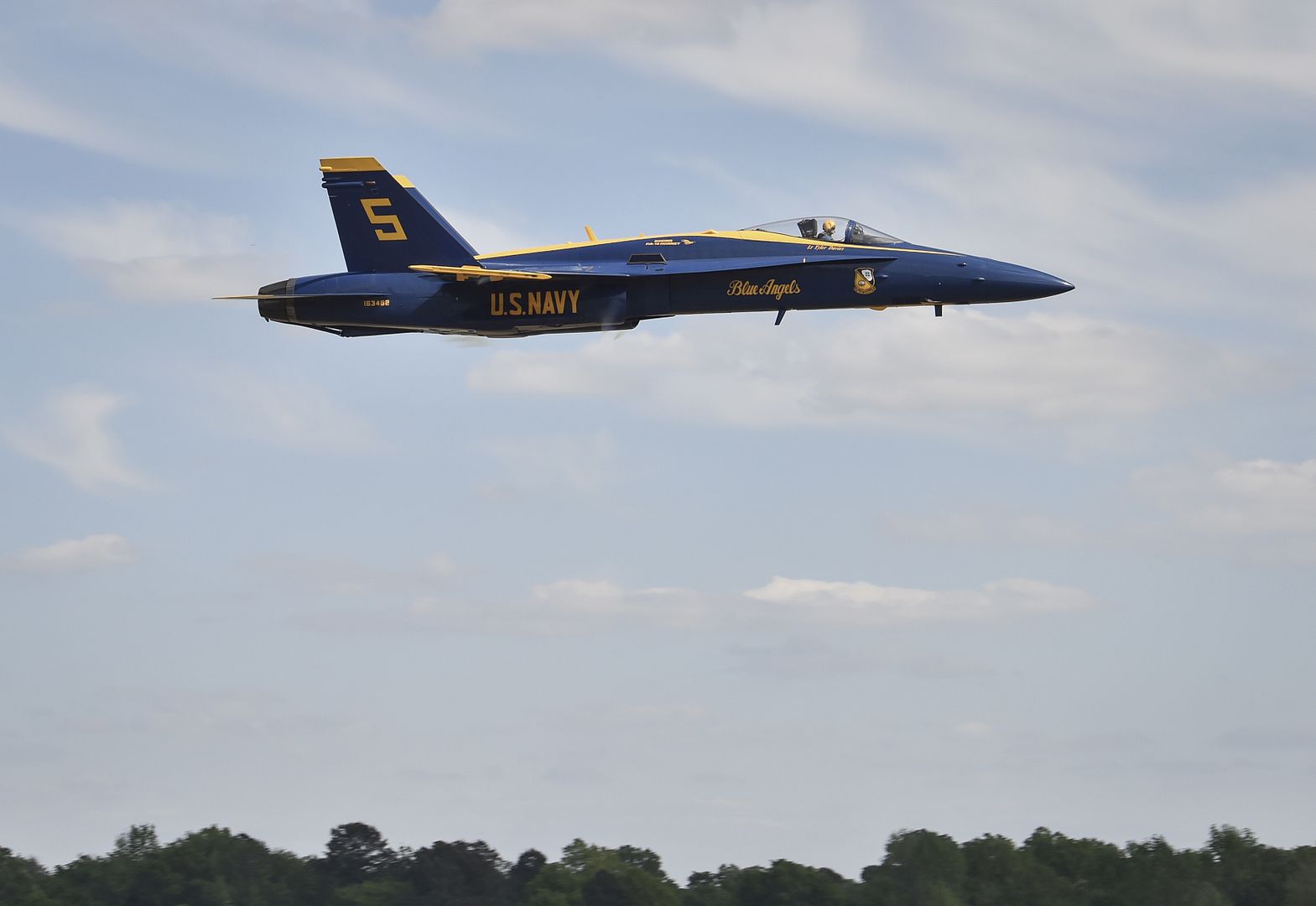
ATLANTIC OCEAN (Apr. 14, 2018) An E-2D Hawkeye assigned to the "Seahawks" of Carrier Airborne Early Warning Squadron (VAW) 126, takes off from the flight deck aboard USS Harry S. Truman (CVN 75). Truman is currently deployed as part of an ongoing rotation of U.S. forces supporting maritime security operations in international waters around the globe. (U.S. Navy photo by Mass Communication Specialist 2nd Class Tommy Gooley/Released)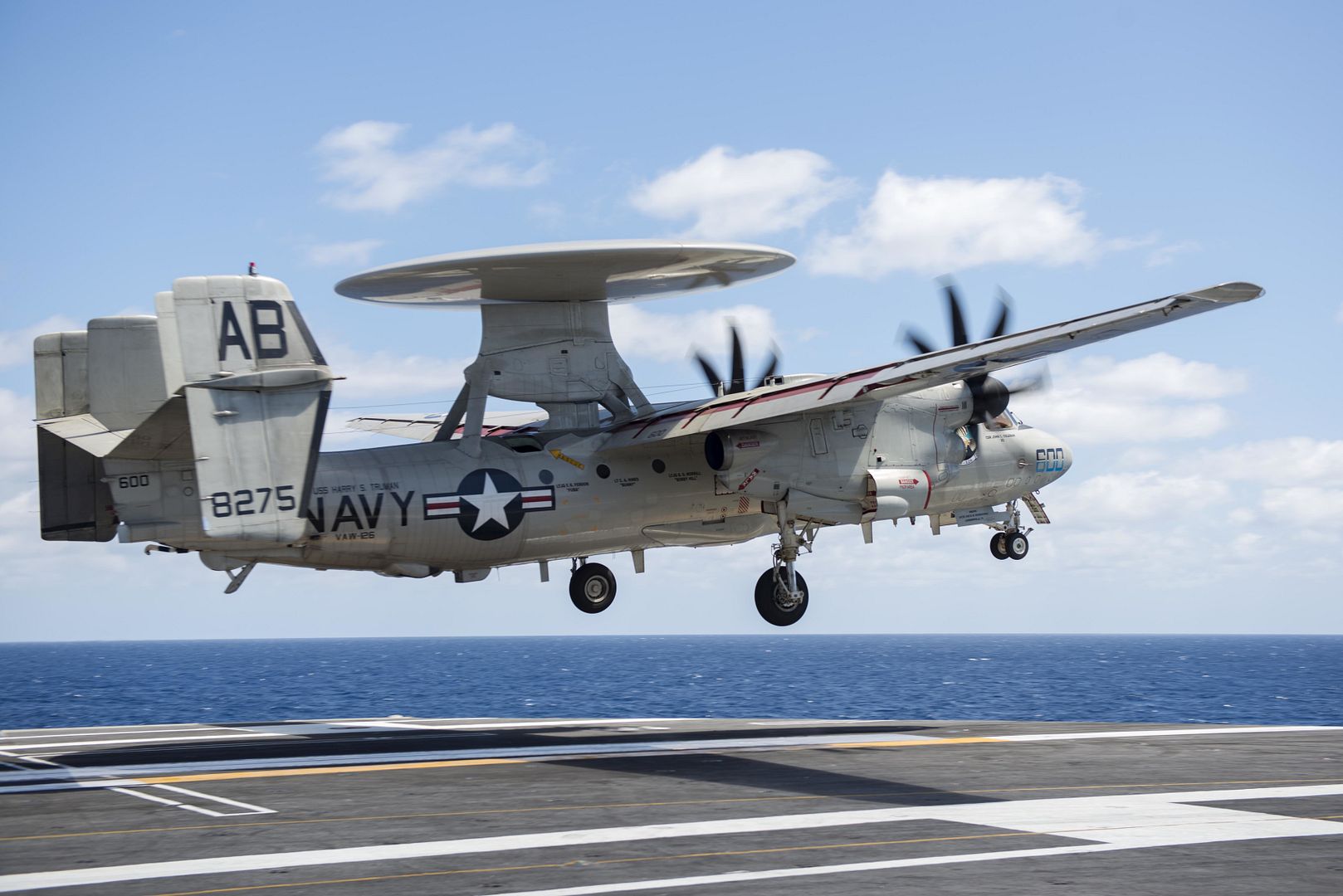
ATLANTIC OCEAN (Apr. 14, 2018) An F/A-18E Super Hornet, assigned to the "Sunliners" of Strike Fighter Squadron (VFA) 81, lands on the flight deck aboard USS Harry S. Truman (CVN 75). Truman is currently deployed as part of an ongoing rotation of U.S. forces supporting maritime security operations in international waters around the globe. (U.S. Navy photo by Mass Communication Specialist 2nd Class Tommy Gooley/Released)
ATLANTIC OCEAN (April 14, 2018) Sailors refuel an AV-8B Harrier on the flight deck of the Wasp-class amphibious assault ship USS Kearsarge (LHD 3). Kearsarge is in route to Navy Week New Orleans. (U.S. Navy Photo by MC3 Ryre Arciaga/Released)
A 34th Expeditionary Bomb Squadron B-1B Lancer deployed to the 379th Air Expeditionary Wing prepares to launch a strike mission from Al Udeid AIr Base, Qatar, April 13, in support of the multinational response to Syria's recent use of chemical weapons. Two B-1Bs, deployed to Al Udeid AB from Ellsworth AFB, S.D., employed 19 Joint Air to Surface Standoff Missile-Extended Range (JASSM-ER), marking the first combat employment of the weapon. (U.S. Air Force photo's by Master Sgt. Phil Speck)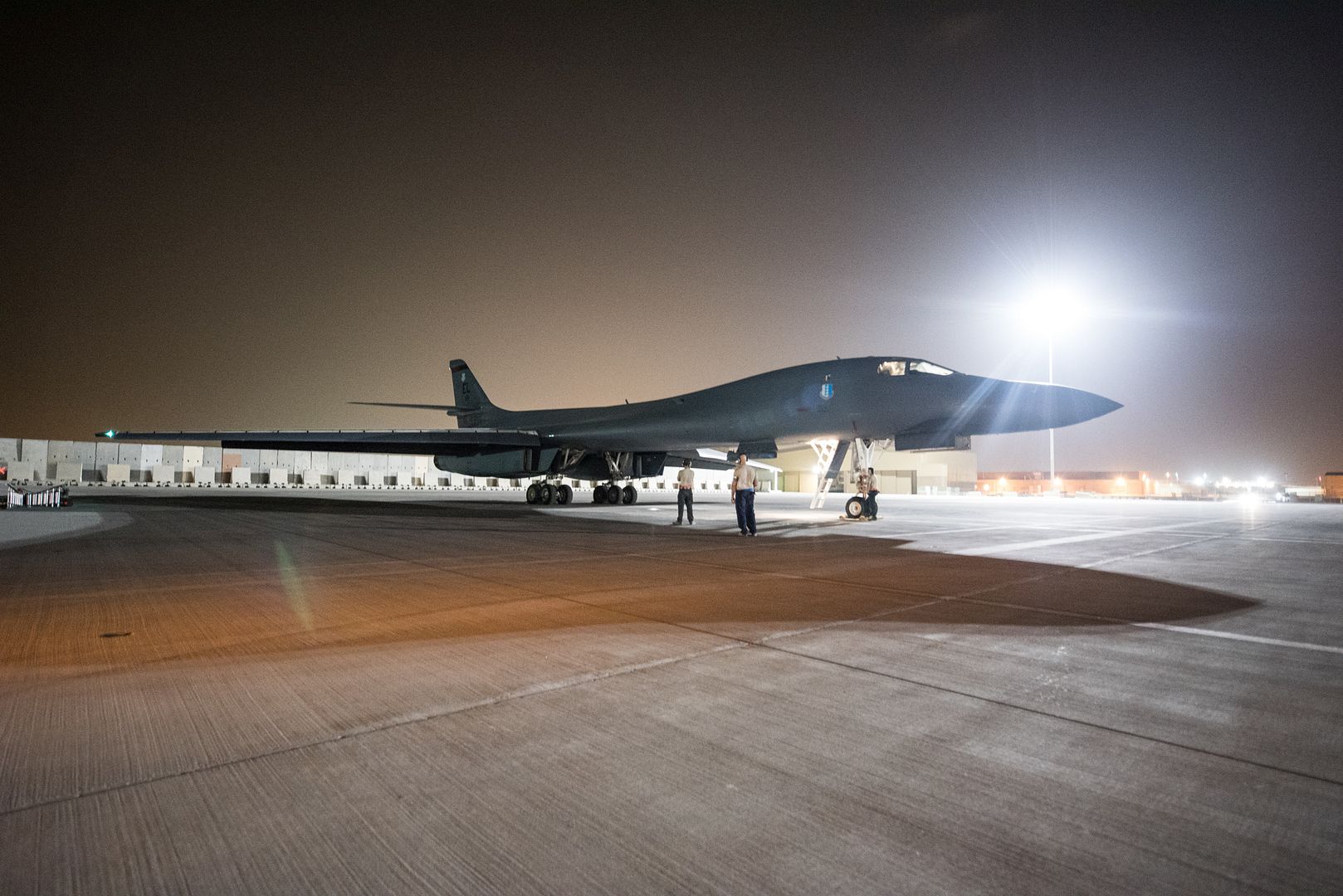
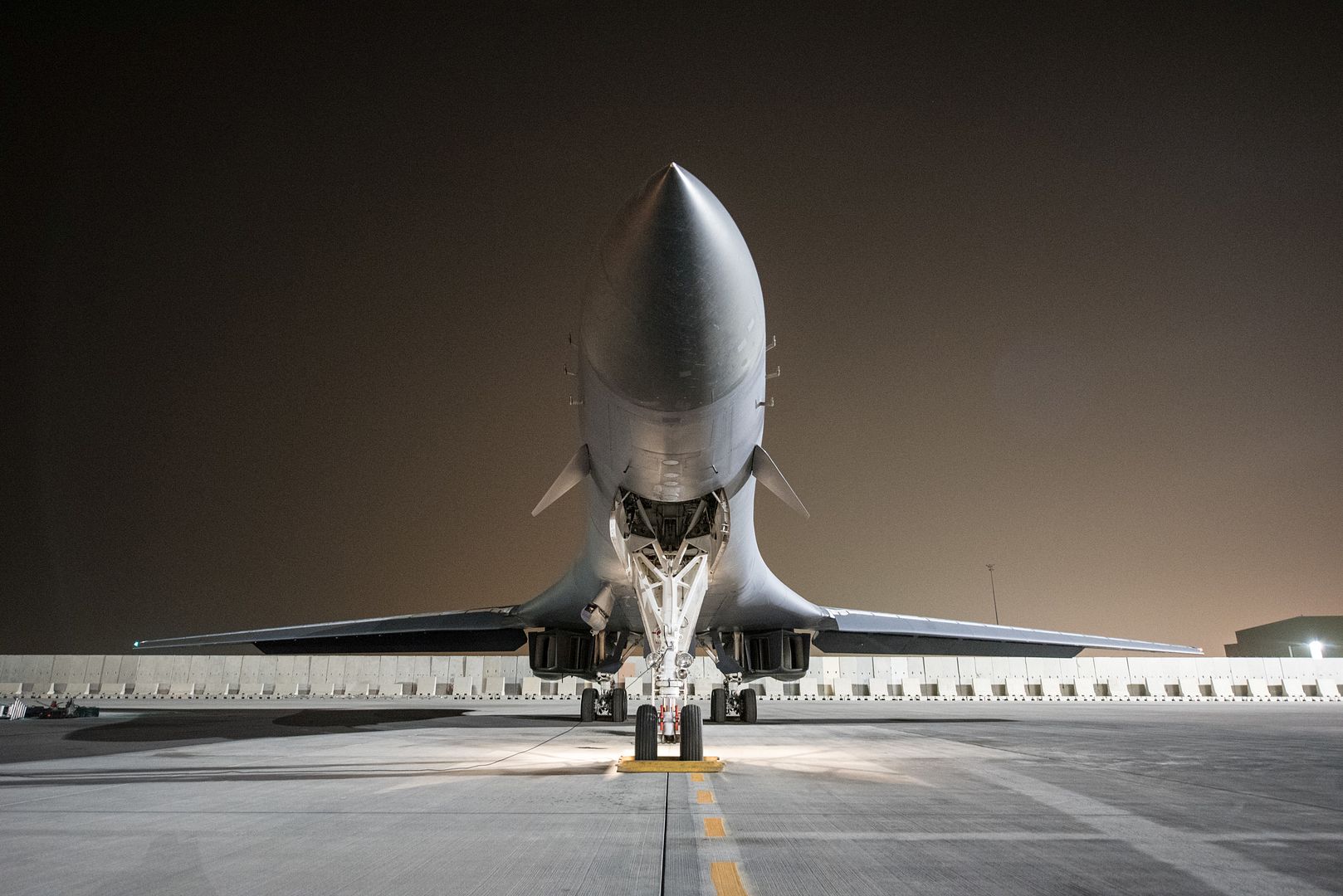
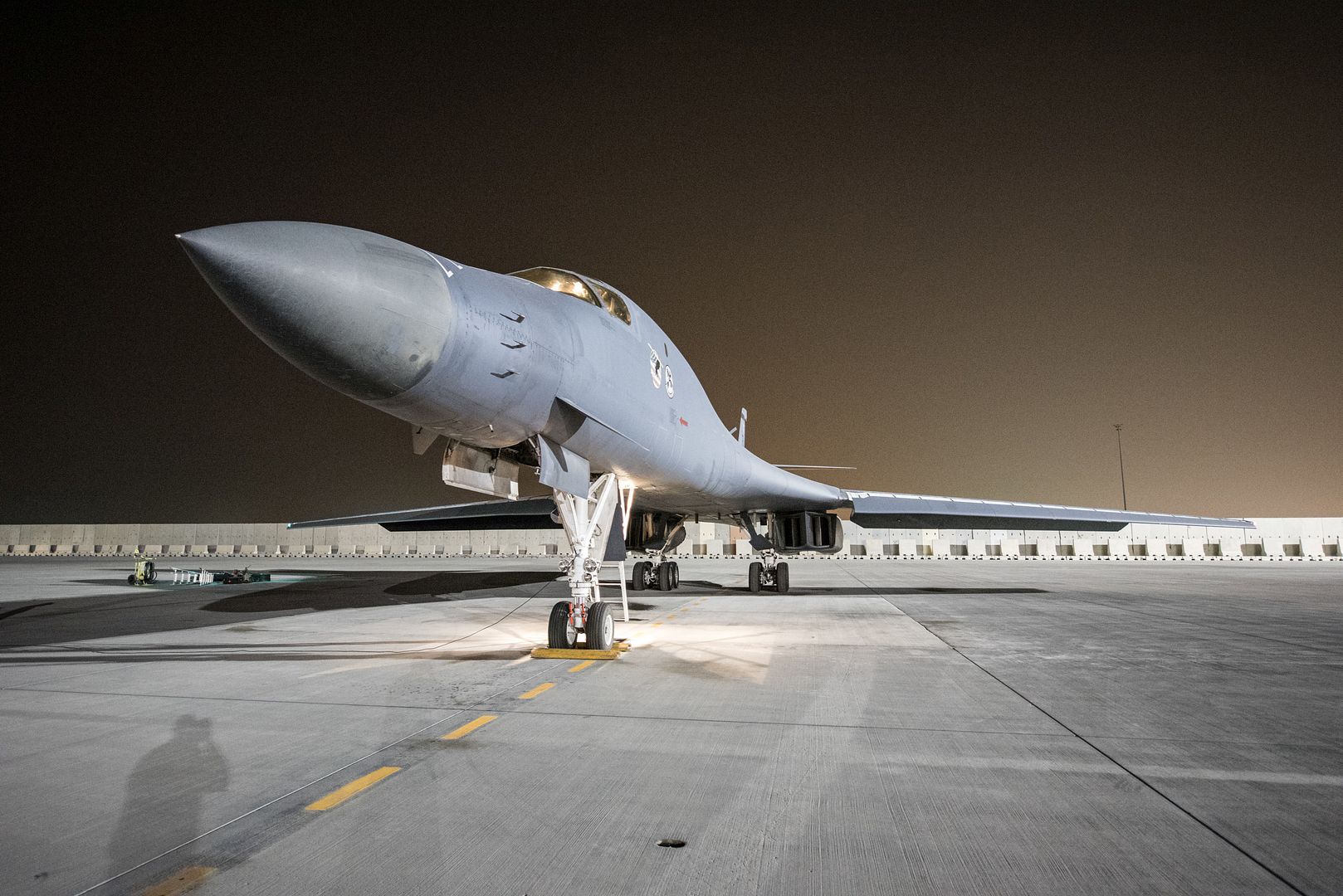
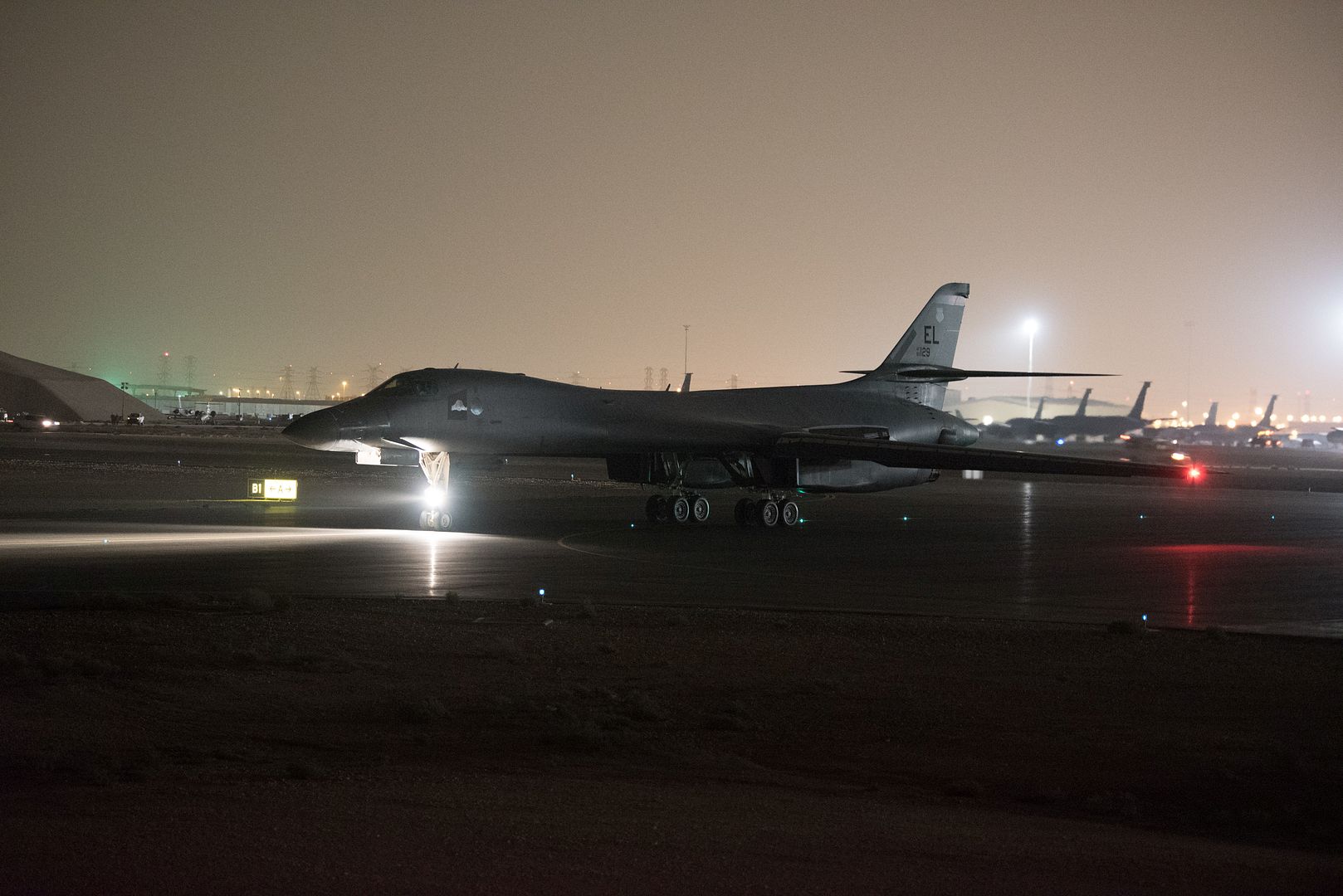
-
 Main Admin04.17.2018
Main Admin04.17.2018
Soldiers from B Company, 3rd Battalion, 25th Aviation Regiment, 25th Combat Aviation Brigade, joined police, fire, EMS, Hawaii National Guard and other state agencies to conduct relief efforts on the island of Kauai after severe rains, flooding and mudslides stranded hundreds of residents and tourists. 25th Infantry Division Soldiers transported emergency vehicles, food, water, bedding, hygiene products and other supplies to affected areas, and transported people stranded to Camp Naue near Princeville, Kauai. 25th Inf. Div. aviation assets were tasked to support relief efforts after the state requested assistance through U.S. Pacific Command. (U.S. Army photo by Staff Sgt. Keith Anderson, 25th Infantry Division Public Affairs)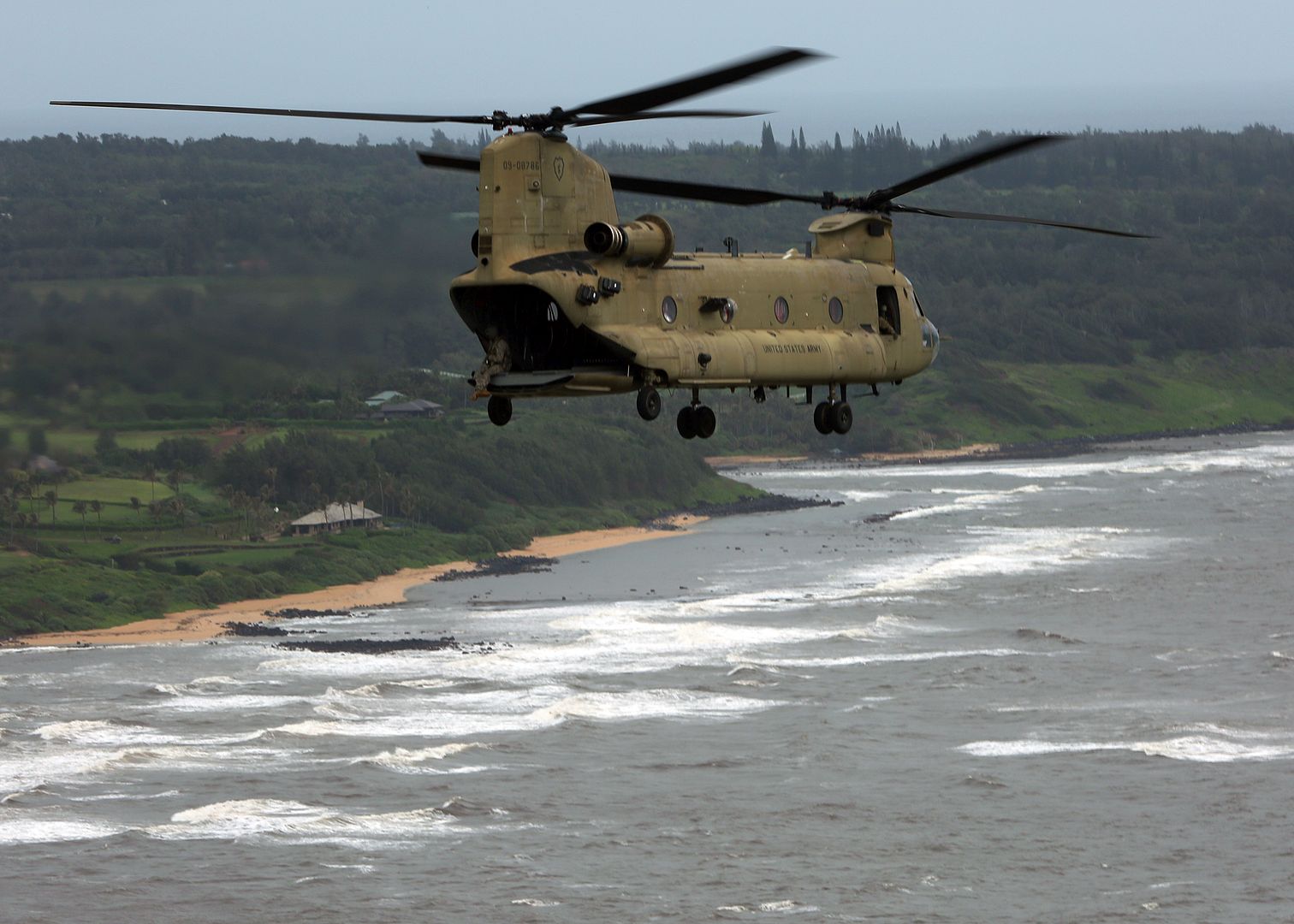
The last C-5M Super Galaxy to join the fleet arrives at Travis Air Force Base, Calif., April 17, 2018. The C-5M is a modernized version of the legacy C-5, it can fly 2,150 nautical miles, offload, and fly to a second base 500 nautical miles away from the original destination, all without aerial refueling. (U.S. Air Force photo's by Master Sgt. Joey Swafford)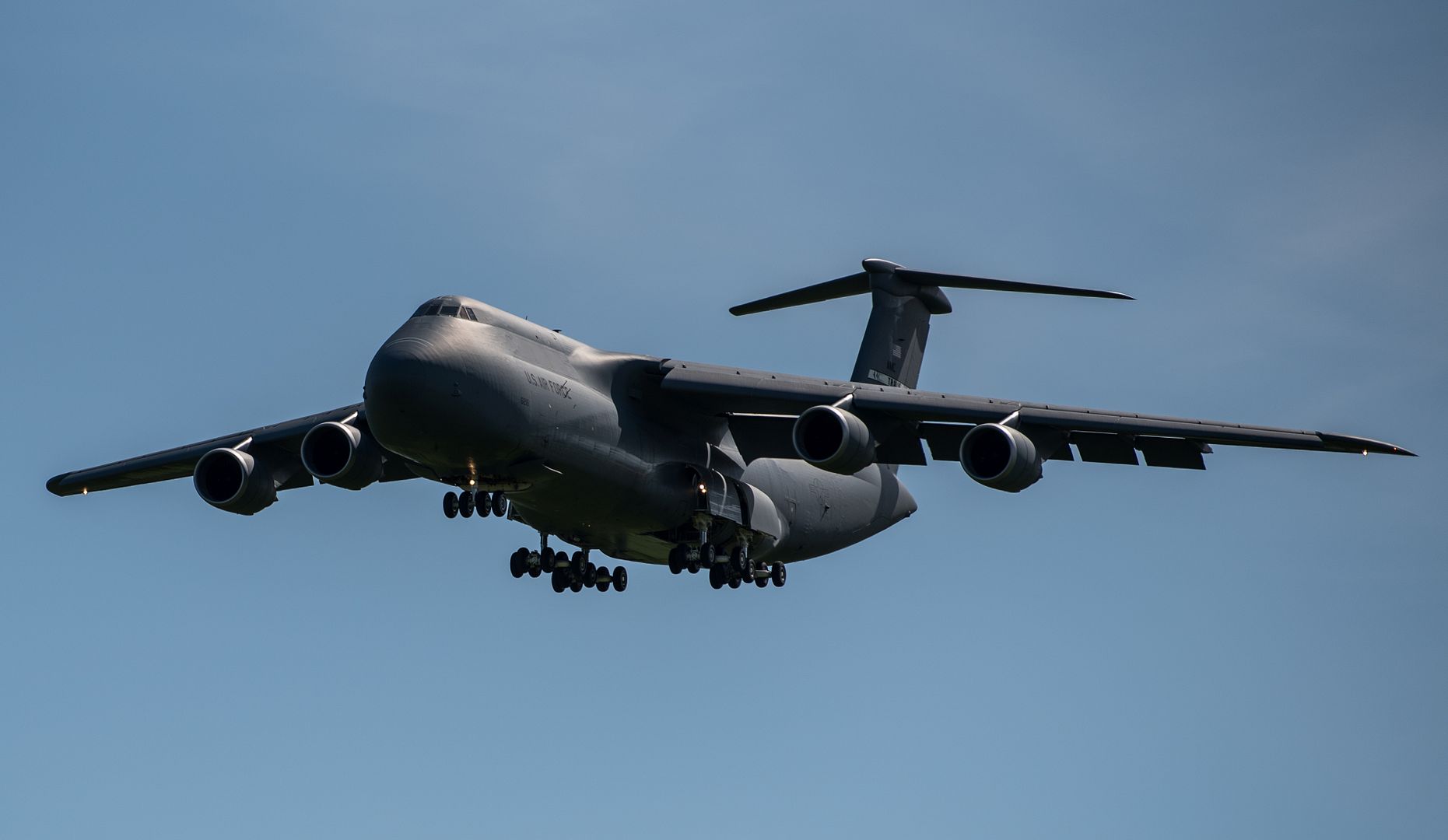
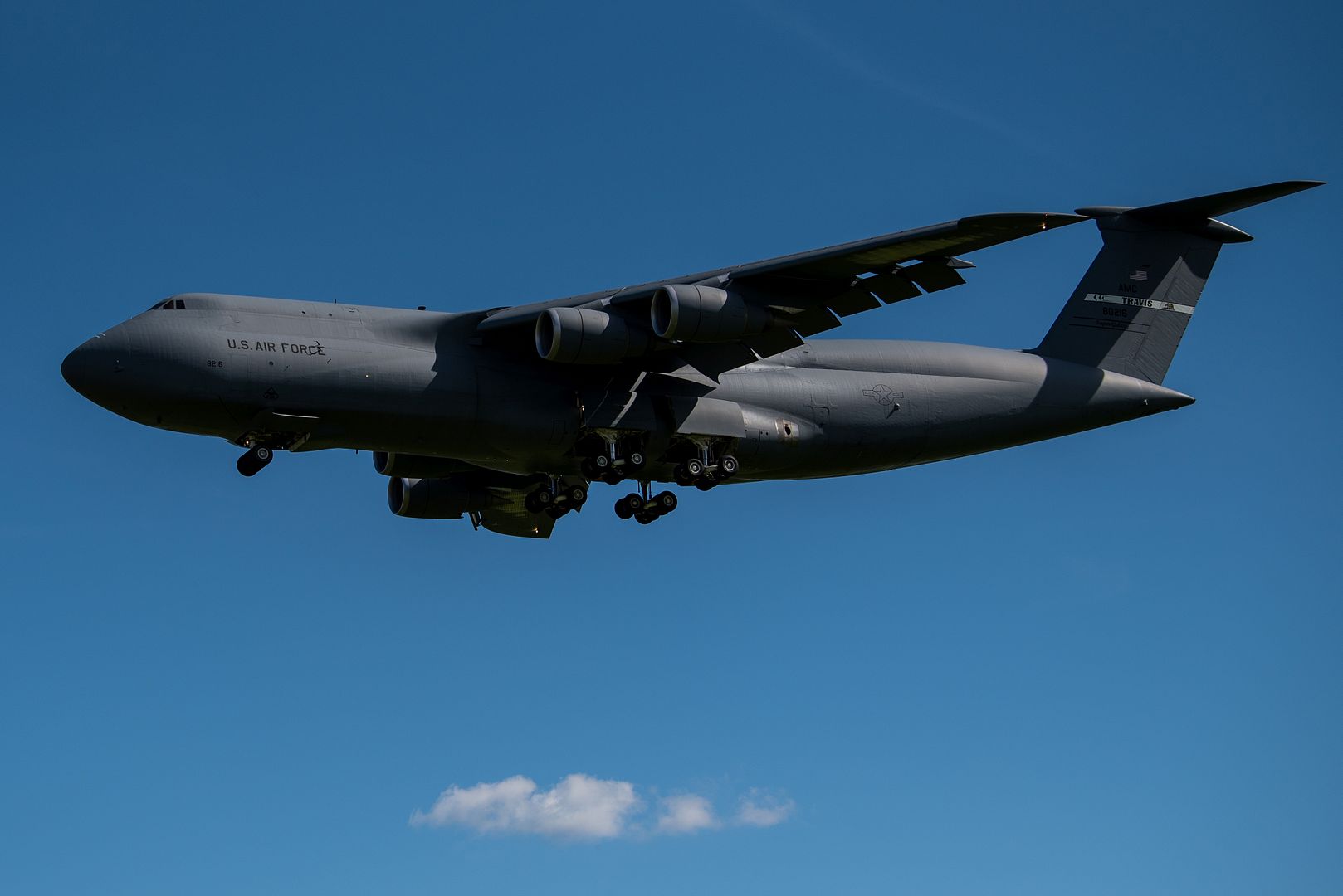

PACIFIC OCEAN, (April 16, 2018) Three F/A-18F Super Hornets assigned to the Black Aces line up in preparation for night flight operations aboard USS John C. Stennis (CVN 74). John C. Stennis is underway with Carrier Air Wing (CVW) 9 conducting routine training as well as tailored ships training availability and final evaluation problem. (U.S. Navy photo by Mass Communication Specialist 3rd Class Joseph L. Miller / Released)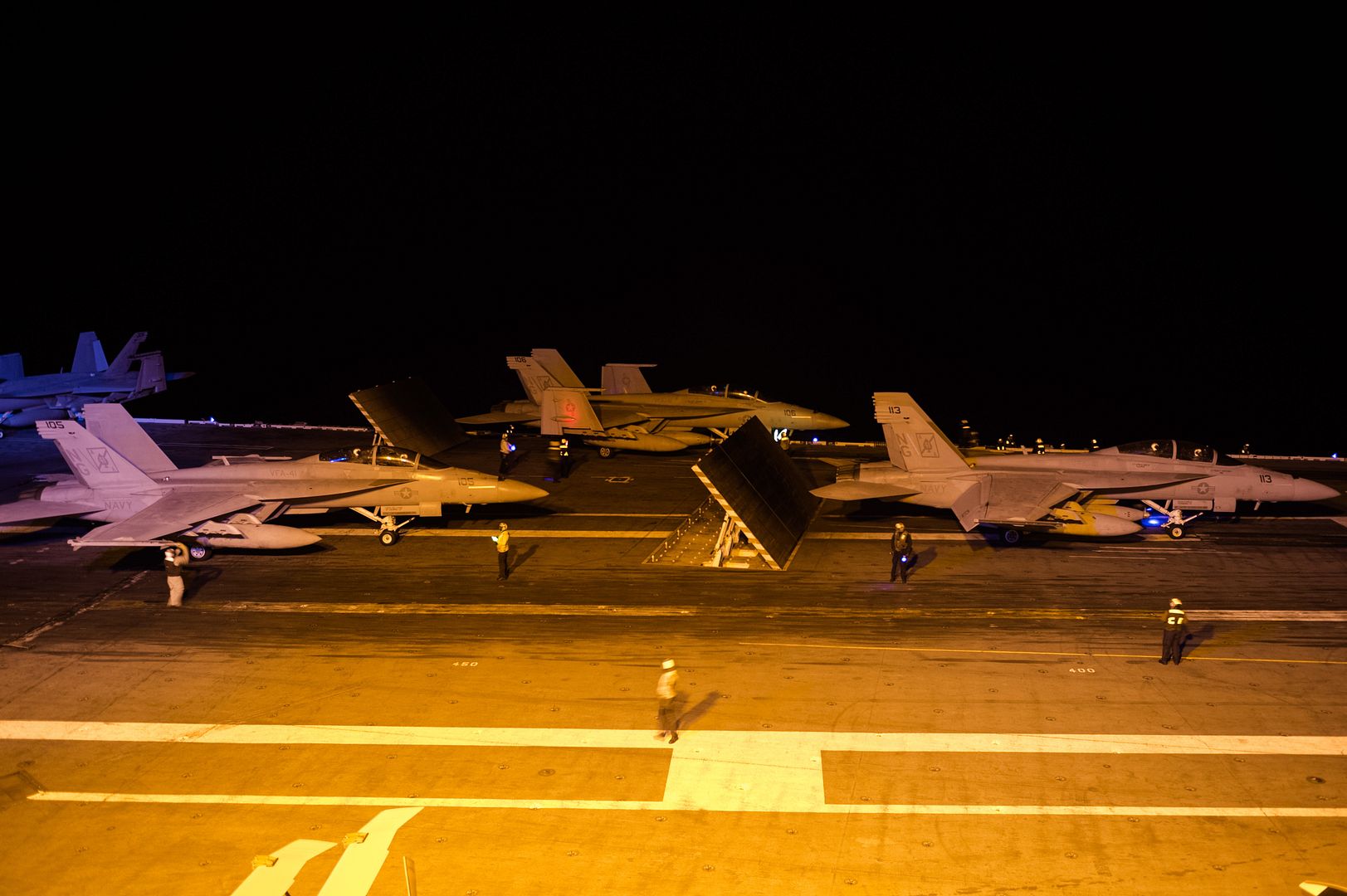
The legendary 617 Dambusters Squadron are back! In the 75th anniversary year of their formation, 617 Sqn have reformed to operate the F-35B Lightning and will arrive at RAF Marham this summer!
Read more on the formation of 617 Squadron: http://ow.ly/i0c930jyuR2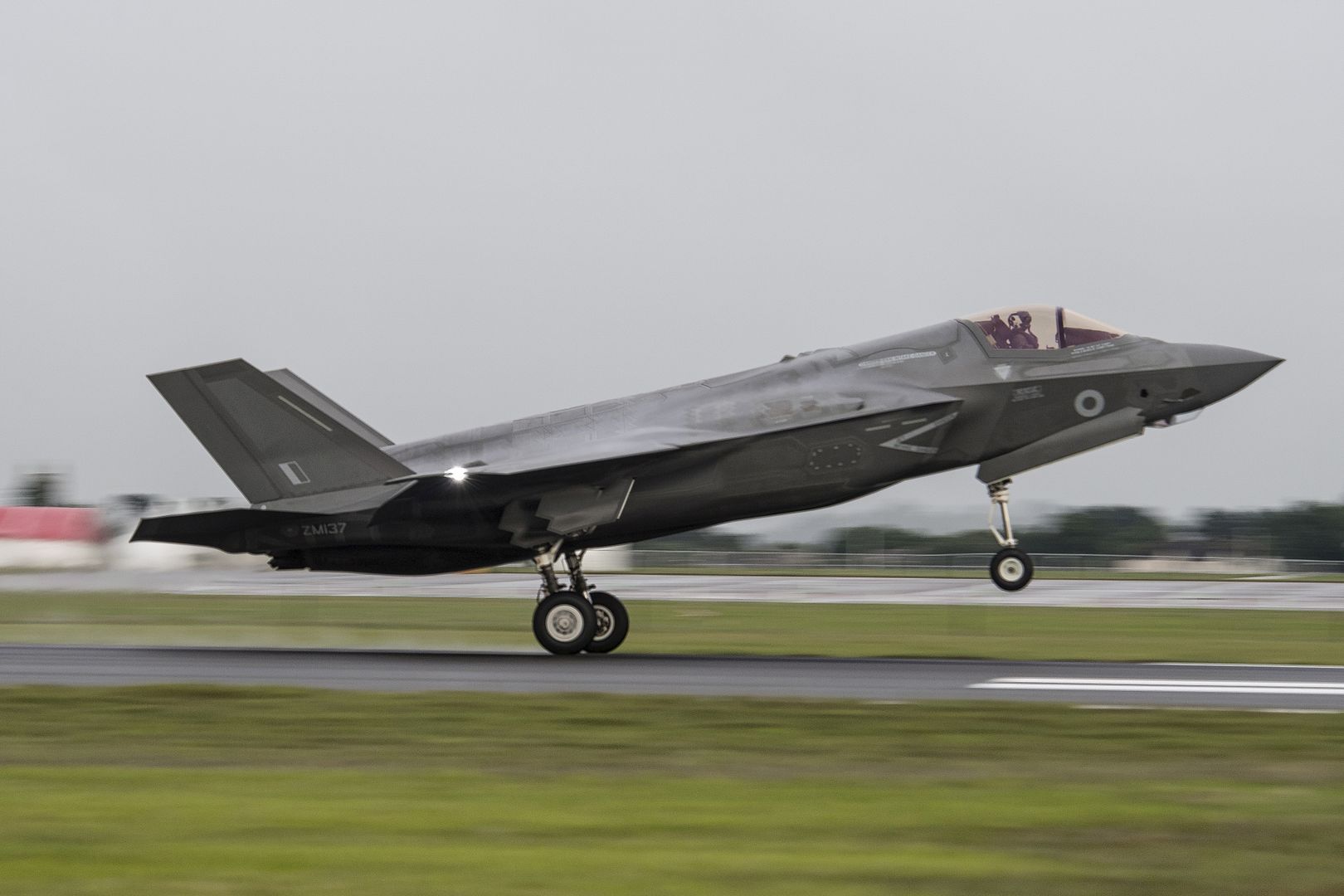
(Source: Australian Department of Defence; issued April 18, 2018)
Royal Australian Air Force (RAAF) today welcomed the 10th and final C-27J Spartan into service during a ceremony at RAAF Base Richmond.
Minister for Defence, Senator the Hon Marise Payne, and Minister for Defence Industry, the Hon Christopher Pyne MP, congratulated RAAF on completing the upgrade to the Australian Defence Force?s comprehensive fleet of air mobility platforms.
Minister Payne said the Spartan was a highly versatile aircraft that would enhance battlefield airlift capability of the Australian Defence Force.
?The Spartan provides flexibility to Defence operations, allowing us to land at airfields that are smaller or unsuitable for our much larger transport aircraft like the C-130J Hercules and C-17A Globemaster,? Minister Payne said.
?The Spartan can carry up to five tonnes of cargo and is capable of moving troops, equipment and supplies; conducting aero-medical evacuation missions and conducting air drops.?
Minister Payne said the Spartans are currently operated by No. 35 Squadron at RAAF Base Richmond, and would relocate to RAAF Base Amberley in early 2019.
?The relocation to Amberley will allow No. 35 Squadron to work from facilities purpose-built for the Spartan, and to be more responsive when deploying across Australia and into the Asia Pacific,? Minister Payne said.
Minister Pyne said Australia?s defence industry would provide important sustainment support for the capability.
?Northrop Grumman Australia has been selected to provide through-life support to the fleet,? Minister Pyne said.
?In addition, Fibre Tech Solutions has delivered a cargo restraint system for use on board the Spartan and other air mobility aircraft, increasing the speed and ease of loading and unloading these aircraft.
?This project supports jobs at both RAAF Base Richmond and Amberley, and will contribute toward developing Australian defence industry into the future.?
Over the last 12 months, the Spartan has supported Whole-of-Government efforts in the 2017 Papua New Guinea parliamentary elections and during international exercises in New Zealand, Guam and New Caledonia.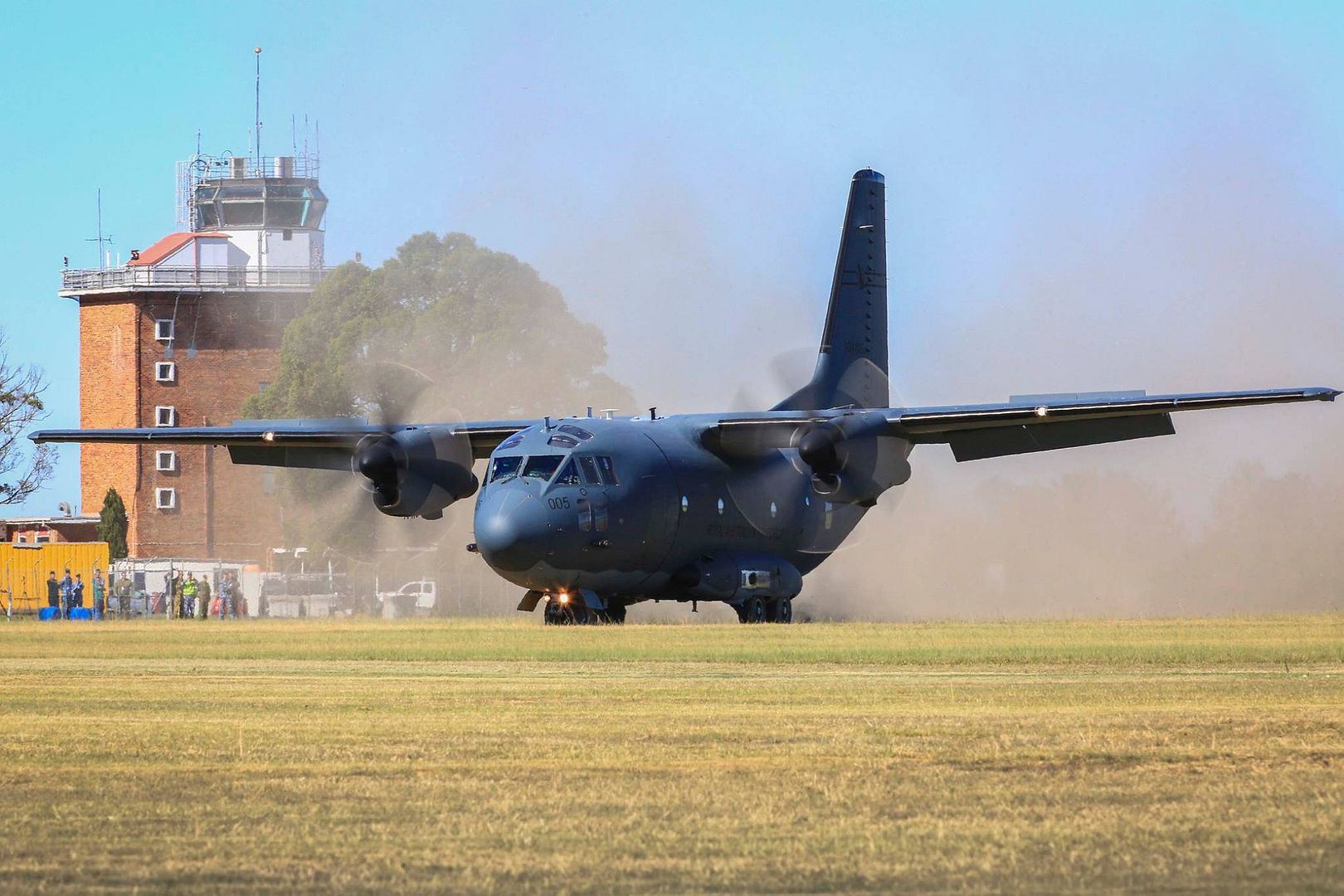
-
 Main AdminA MK-58 Hawker Hunter taxis aboard Marine Corps Air Station Beaufort April
Main AdminA MK-58 Hawker Hunter taxis aboard Marine Corps Air Station Beaufort April
18. The Hawker Hunter and crew are training with Marine Fighter Attack Training
Squadron 501 for multiple weeks to support dissimilar air combat training for F-35B
pilots. The aircraft is with the Airborne Tactical Advantage Company.
Photo by Lance Cpl. Terry Haynes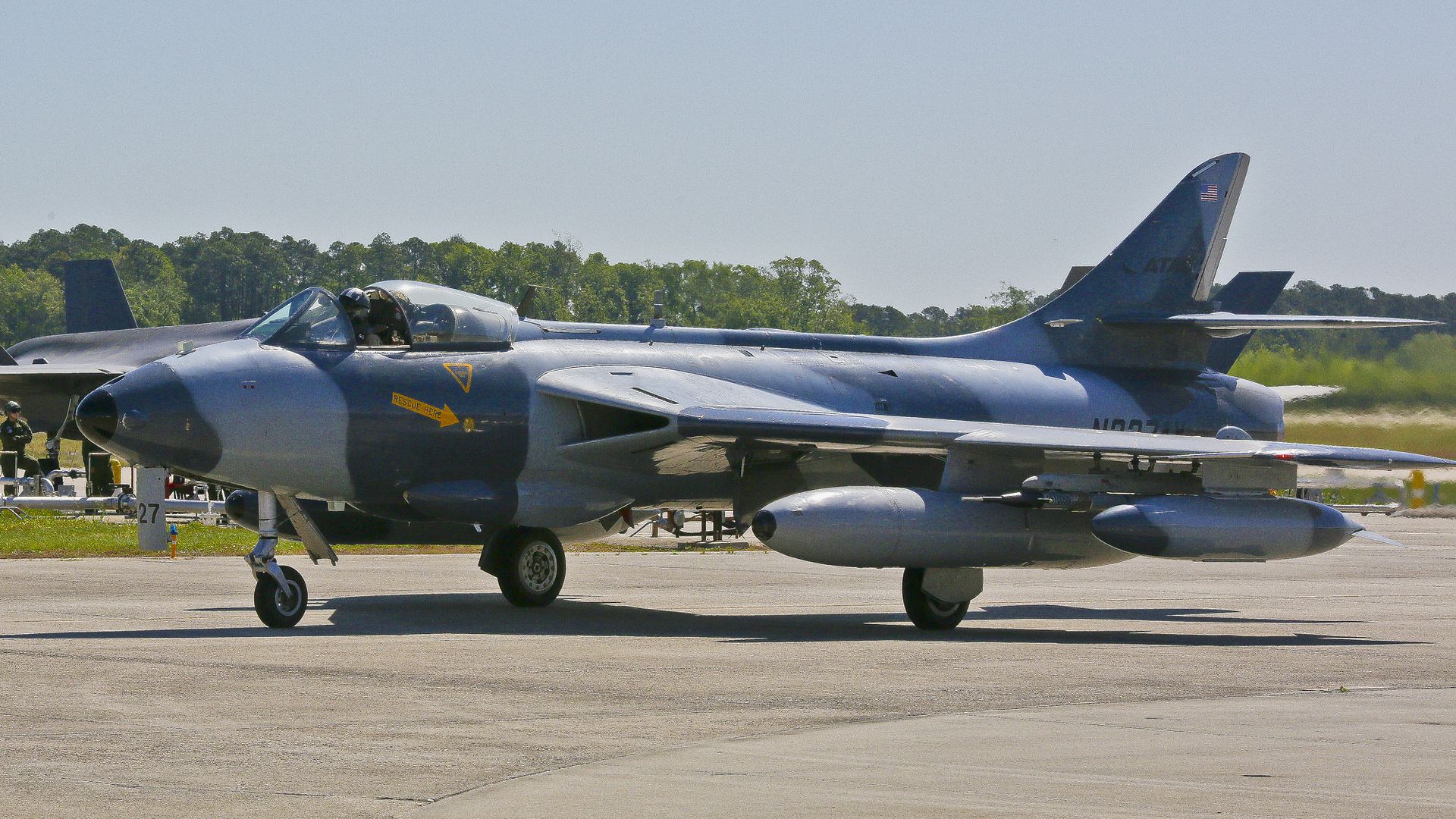
JORDAN (April 19, 2018) U.S. Marines with the 26th Marine Expeditionary Unit (MEU) exit an MV-22B Osprey to observe training events as part of exercise Eager Lion, Al Quwayrah, Jordan, April 19, 2018. Eager Lion is a capstone training engagement that provides U.S. forces and the Jordan Armed Forces an opportunity to rehearse operating in a coalition environment and to pursue new ways to collectively address threats to regional security and improve overall maritime security. (U.S. Marine Corps photo by Gunnery Sgt. Eric L. Alabiso II/Released)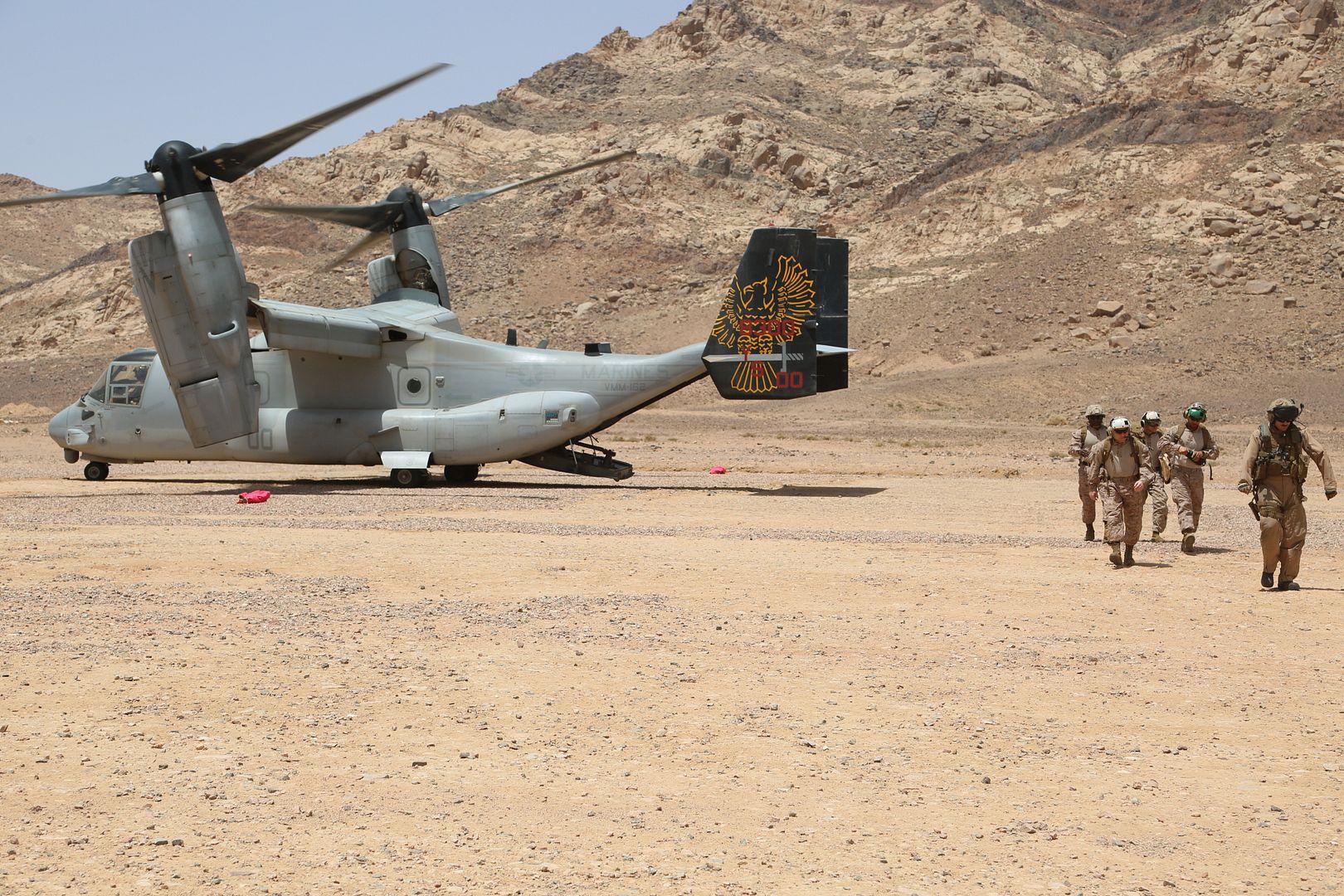
ATLANTIC OCEAN (April 17, 2018) Sailors lower aircraft from the flight deck to the hangar bay on an aircraft elevator aboard tha aircraft carrier USS Harry S. Truman (CVN 75). Harry S. Truman is deployed as part of an ongoing rotation of U.S. forces supporting maritime security operations in international waters around the globe. (U.S. Navy photo by Mass Communication Specialist 3rd Class Jordan Twiss/Released)
KEY WEST, Florida (April 19, 2018) Air Force One arrives at Naval Air Station Key West?s Boca Chica Field carrying President of the United States Donald J. Trump. During the president's trip to Key West, he spoke to service members and guests and received a brief from Joint Interagency Task Force South, U.S. Northern Command and U.S. Southern Command. NAS Key West is a state-of-the-art facility for air-to-air combat fighter aircraft of all military services and provides world-class pierside support to U.S. and foreign naval vessels. (U.S. Navy photo by Mass Communication Specialist 2nd Class Cody R. Babin/Released)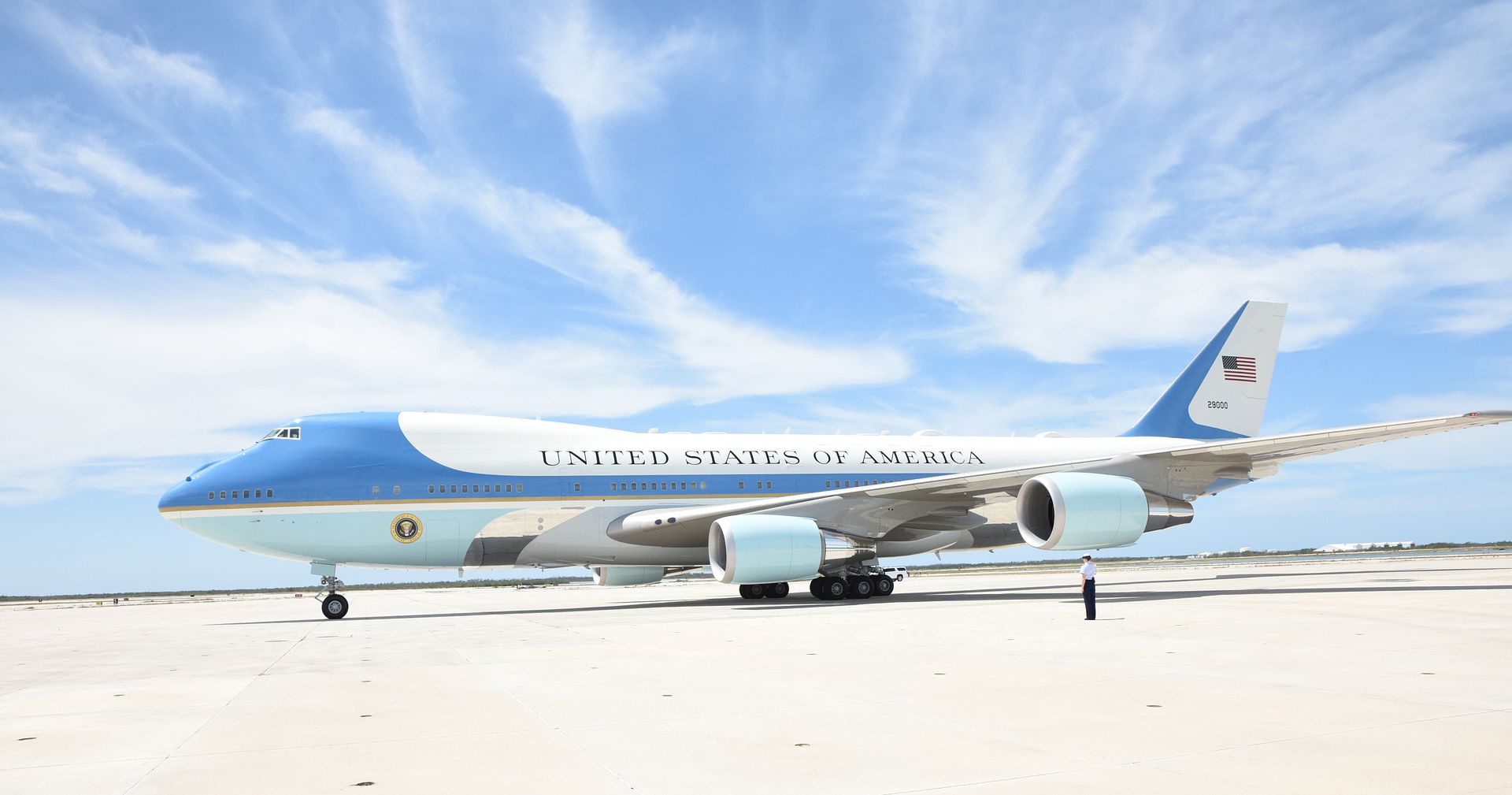
(U.S. Navy photo by Jolene Scholl/Released)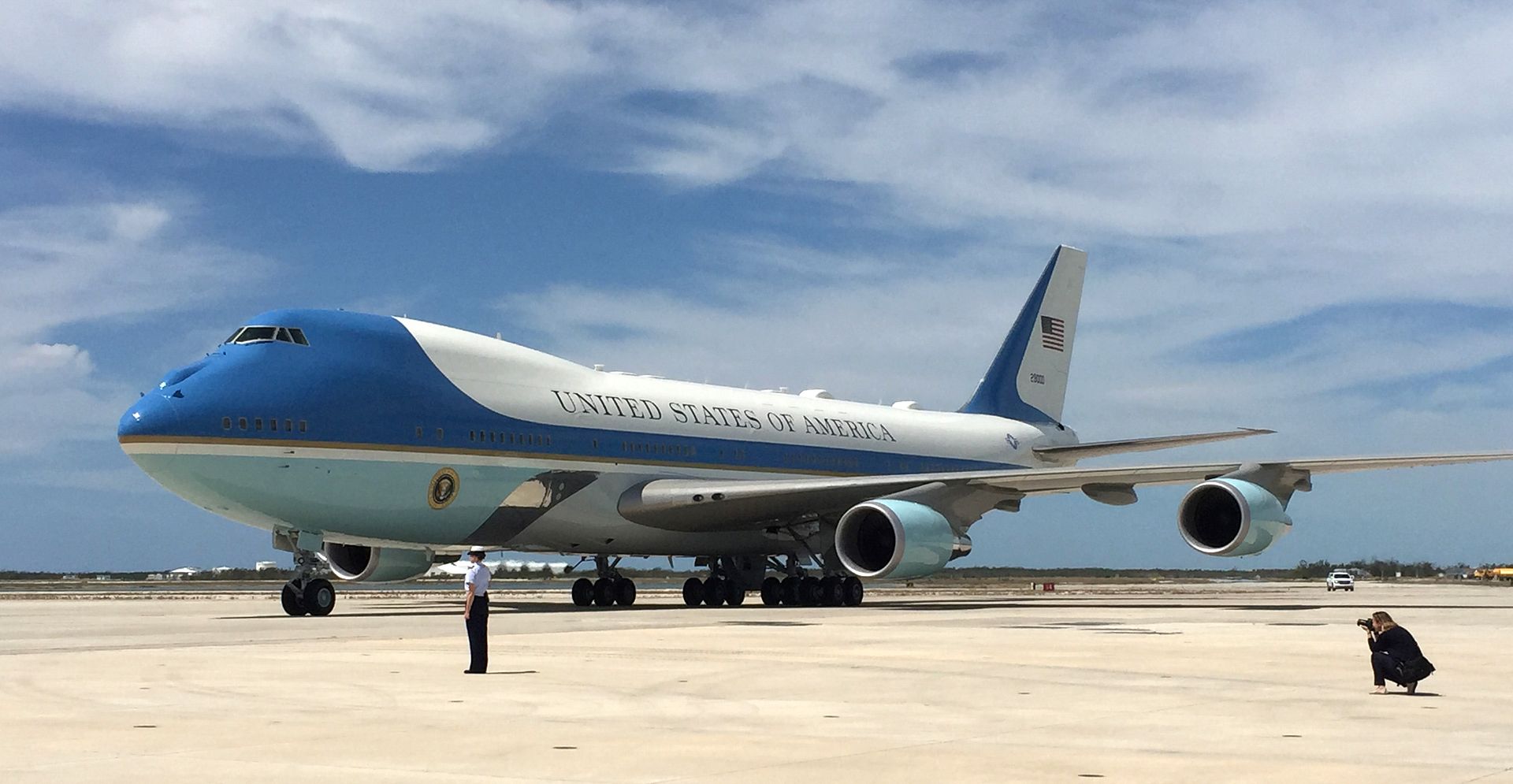
Thunderbirds conduct their first training flight on April 18, 2018, following an aircraft mishap on April 4. The mishap, which occurred over the Nevada Test and Training Range, claimed the life of Maj. Stephen Del Bagno, Thunderbird #4/Slot Pilot. The training sortie is one of many the team will conduct over the coming weeks to strengthen team confidence and maintain proficiency. (U.S. Air Force photo by Staff Sgt. Ned T. Johnston)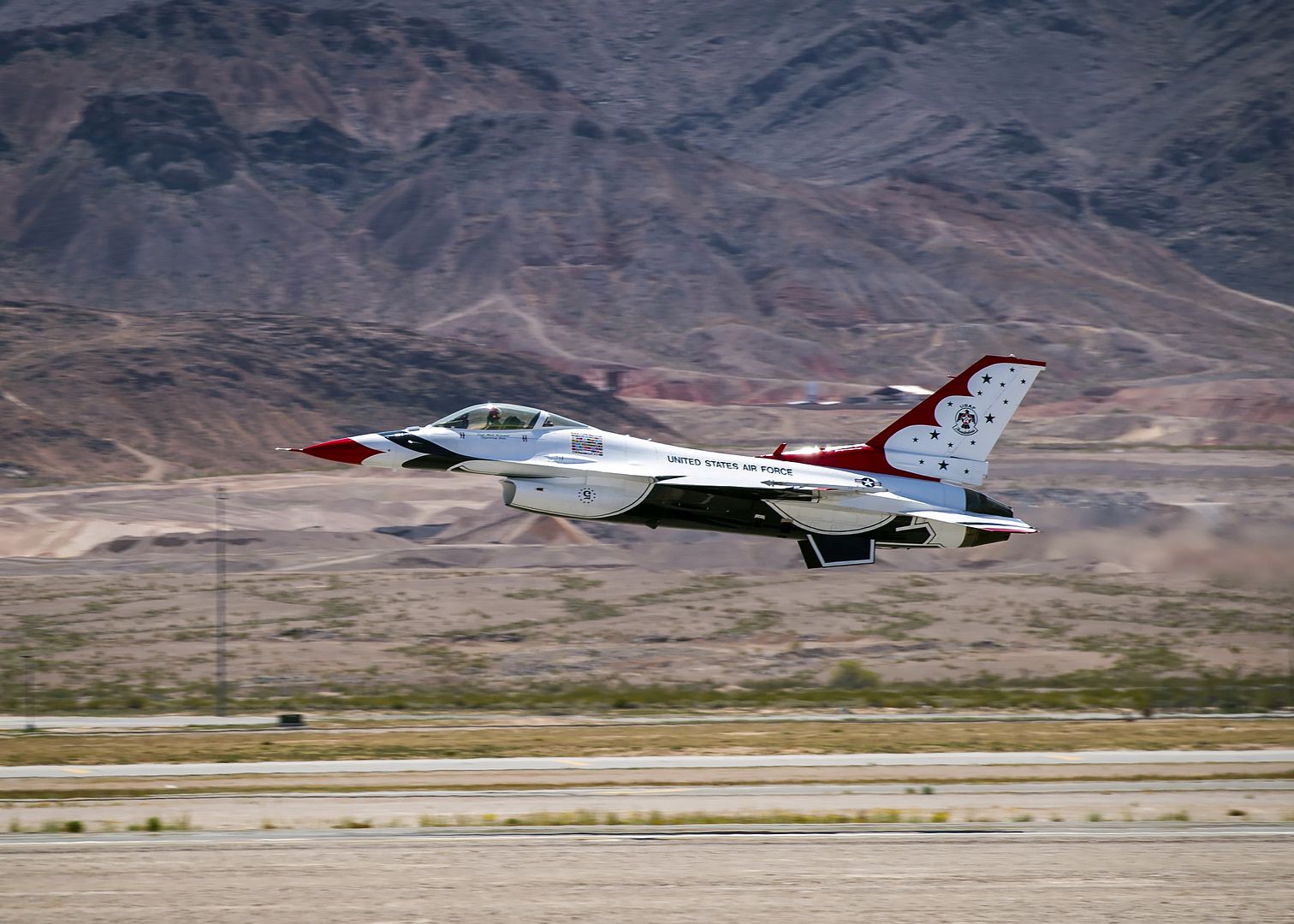
An F-16C Fighting Falcon assigned to the 35th Fighter Squadron taxis to the end of runway at Kunsan Air Base, Republic of Korea Apr. 17, 2018 during a regular training sortie. The aircraft are generated daily by various maintenance professionals at the 8th Fighter Wing to ensure the F-16 fleet and pilots at Kunsan can train to meet 7th Air Force requirements on the Korean Peninsula. (U.S. Air Force photo by Capt. Christopher Mesnard/Released)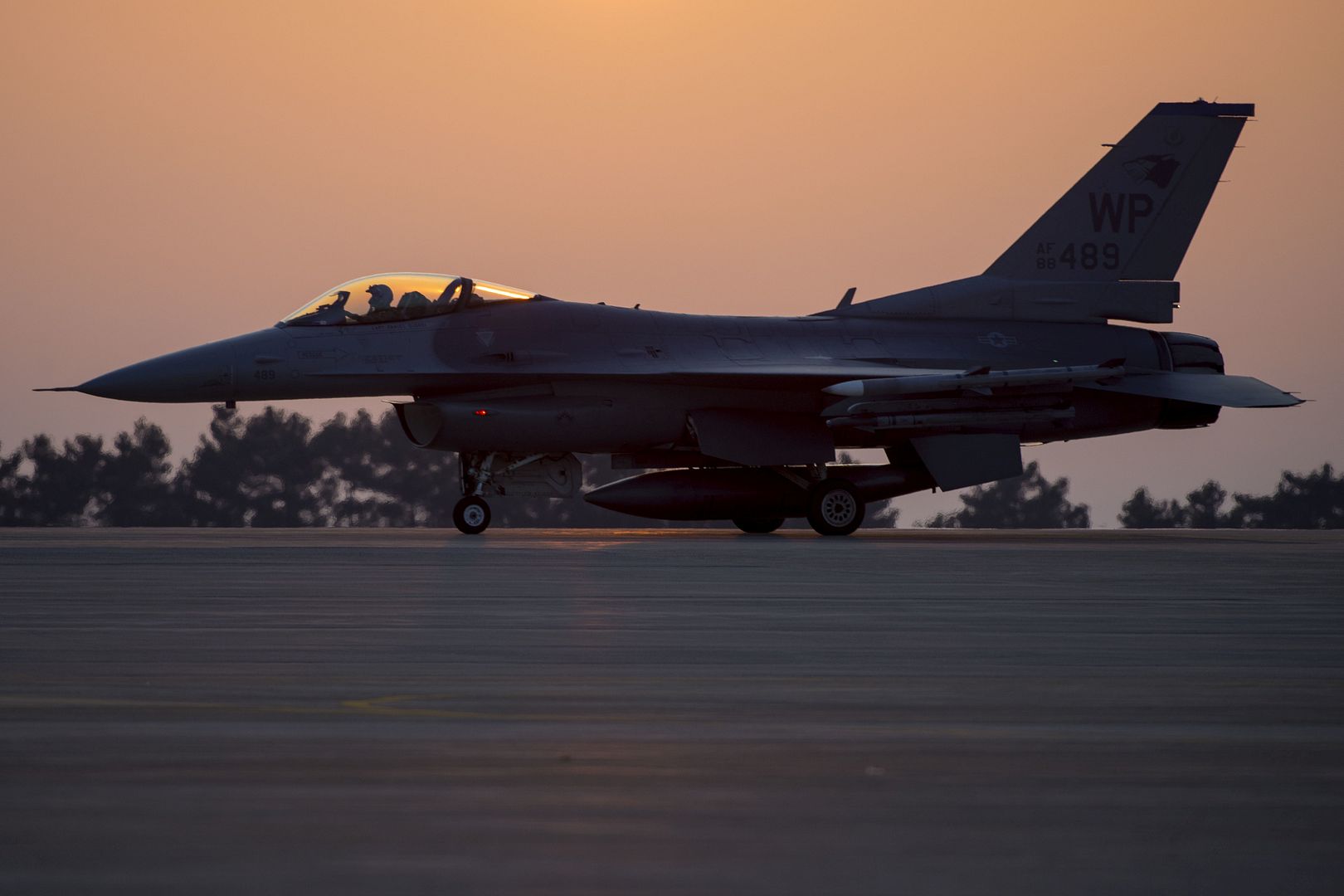
A KC-135 Stratotanker with the 121st Air Refueling Wing participates in a refueling mission with F-16 Fighting Falcons from the 180th Fighter Wing April 18, 2018 in the skies over Ohio. The KC-135 provides the core aerial refueling capability for the United States Air Force. (U.S. Air National Guard photo by Airman 1st Class Tiffany A Emery)
EDWARDS AIR FORCE BASE, Calif. --
Replacing 20-year-old cooling units on roofs can be a challenge given Edwards AFB?s large buildings and constant flightline operations.
That?s why the 412th Civil Engineer Group called in a local helicopter company to help out with replacing the HVAC units on Bldg. 1600 April 7.
Siller Helicopters, Inc. flew in an S-61V Sikorsky to replace 22 evaporative coolers on the 412th Maintenance Group?s headquarters building. Seven of the coolers also had heaters as part of the unit.
The chopper would dangle cable lines to be attached onto the old coolers, which were lifted off Bldg. 1600 and placed in a parking lot nearby. Workers then attached the cables to the new unit to be lifted onto the building.
?A crane could not reach all the units and would have disrupted operations for weeks since it would be a critical lift,? said Jason Garrett, 412th Civil Engineering Squadron. ?The helicopter did it in two-and-a-half hours.?
Base civil engineers teamed up with the 412th Operations Support Squadron and 412th Test Wing Safety Office to ensure the unique flying operation went smoothly and safely.
A B-2 Spirit prepped and ready for a mission at Whiteman Air Force Base, Mo., April 10, 2018. The 509th Aircraft Maintenance Squadron consists of approximately 570 personnel tasked with maintaining $15 million worth of equipment and their daily excellence ensures the mission capability of the B-2s. (U.S. Air Force photo by Senior Airman Jovan Banks)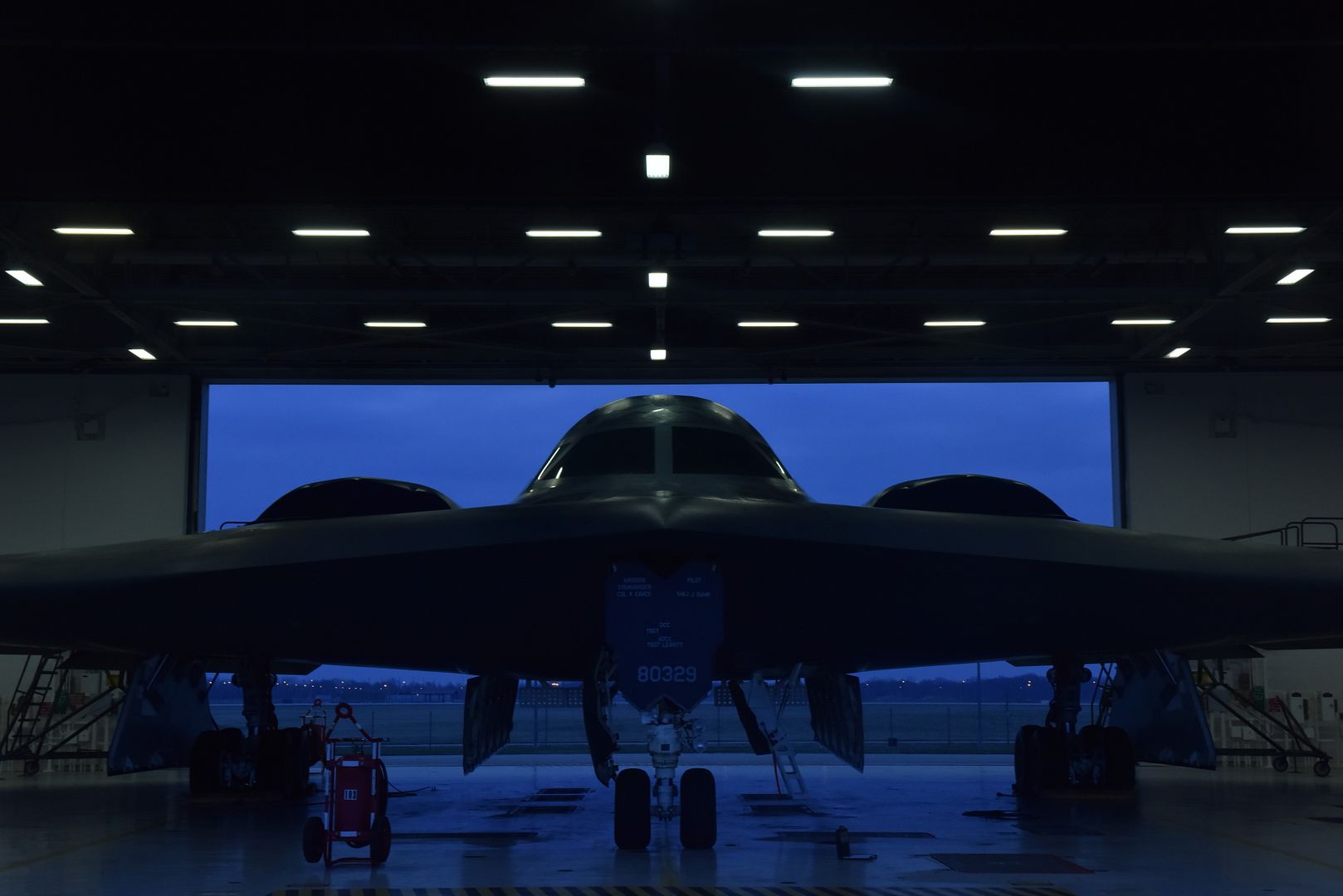
PHILIPPINE SEA (April 18, 2018) An F-35B Lightning II with Marine Fighter Attack Squadron (VFMA) 121 is refueled aboard the amphibious assault ship USS Wasp (LHD 1) following an expeditionary strike exercise as part of a certification exercise (CERTEX). CERTEX is the final evaluation in a series of training exercises which ensures readiness for crisis response throughout the Indo-Pacific region. (U.S. Navy photo by Mass Communication Specialist 1st Class Daniel Barker/Released)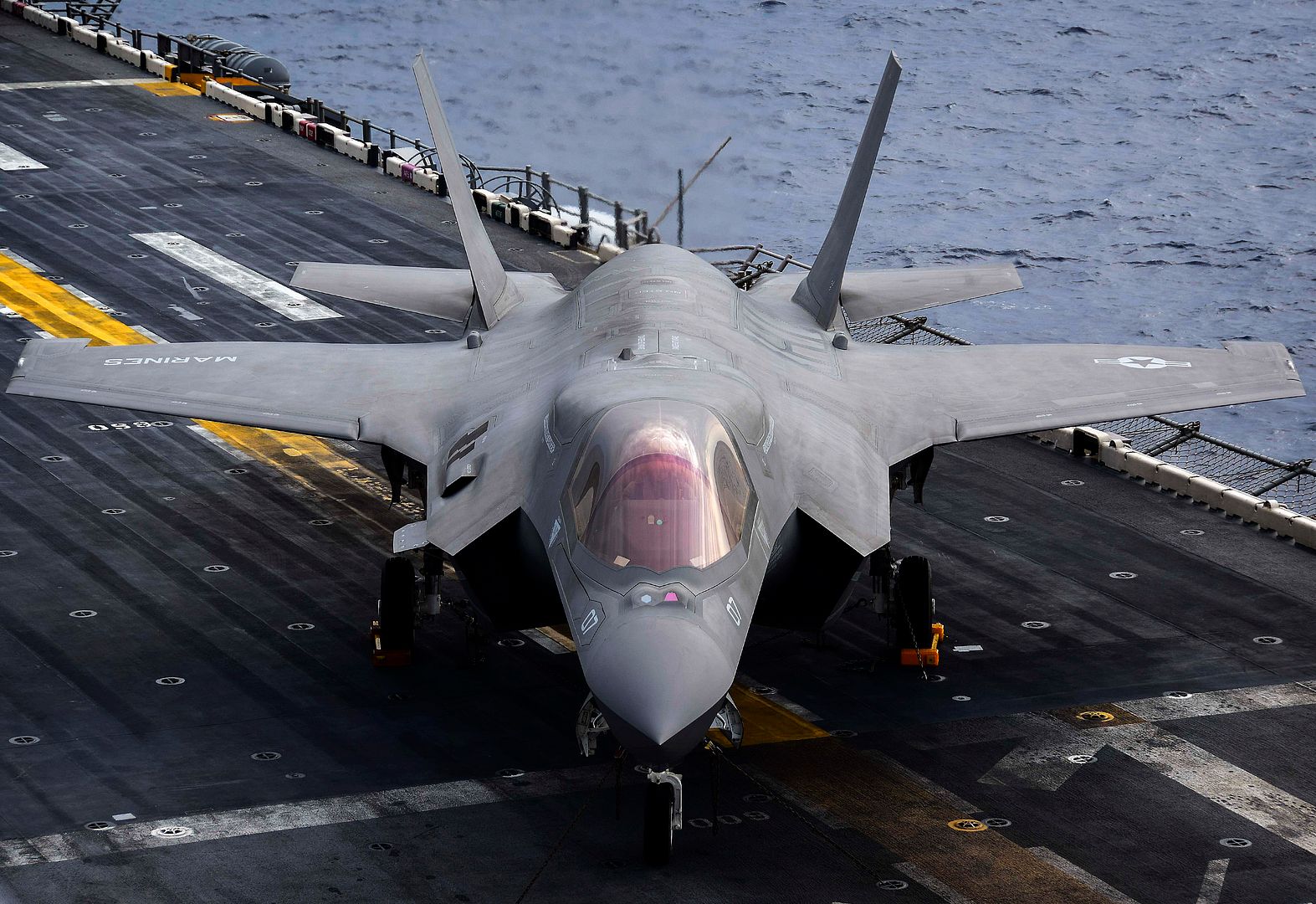
LEICESTERSHIRE, England, April 19, 2018 - Boeing [NYSE: BA] today announced the delivery of the first 737-800 Boeing Converted Freighter (BCF). The first customer is GE Capital Aviation Services (GECAS) and the freighter will be operated by West Atlantic Group, based in Sweden.
?We?re excited to be the first operator of the 737-800BCF,? said West Atlantic?s chief executive, Fredrik Groth. ?The additional capacity and Next-Generation efficiency offered by this new aircraft will deliver real benefit to our customers and we?re delighted to be at the forefront of deliveries of this new technology. With the 737-800 BCF, we expect to improve reliability, lower aircraft operating costs, and provide a better environmental footprint.?
West Atlantic will receive four 737-800 aircraft within the next 11 months and, once delivered, the company will operate 23 Boeing 737 freighter aircraft.
?We are very proud to be the launch customer for the 737-800 BCF, and pleased to supply this inaugural aircraft to West Atlantic,? said Richard Greener, GECAS? Senior Vice President & Manager, Cargo Aircraft Group. ?This freighter type is an important complement to our portfolio as we support our customers across expanding air cargo markets.?
Boeing?s Current Market Outlook forecasts that over the next 20 years, customers will need more than 1,100 standard-body converted freighters.
?The 737-800BCF brings customers the next generation of freighters,? said Mike Fleming, vice president, Commercial Services, Boeing Global Services. ?For the first time, operators get one-stop shop support throughout the lifecycle of a standard-body freighter ? originally manufactured by Boeing, converted by Boeing, and supported by Boeing.?
Through its freighter conversion program, Boeing transitions passenger airplanes into freighters, extending the service life of the airplane. The 737-800BCF carries more payload ? up to 23.9 tonnes (52,800 lbs) ? and has longer range ? 2,000 nautical miles (3,750 km) than other standard-body freighters ? providing capability to open new markets. The 737-800BCF freighter also offers operators newer technology, lower fuel consumption and better reliability than other standard-body freighters. It primarily will be used to carry express cargo on domestic / short haul routes.
For the 737-800BCF, Boeing has received 45 orders and commitments, from seven customers including: YTO Airlines, based in Hangzhou, China; China Postal Airlines, based in Beijing, China; GECAS, based in Ireland; Air Algerie, based in Algiers, Algeria; LAS Cargo, based in Bogota, Colombia; Cargo Air, based in Sophia, Bulgaria ; and an unannounced customer.
Twelve pallet positions provide 4,993 cubic feet (141.4 cubic meters) of cargo space on the main deck of the 737-800BCF. This will be supplemented by two lower-lobe compartments, combined providing more than 1,540 cubic feet (43.7 cubic meters) of space for revenue-generating cargo.
Existing passenger airplanes will be modified at select facilities located near conversion demand, including Boeing Shanghai Aviation Services Co. Ltd., and Taikoo (Shandong) Aircraft Engineering Co. Ltd., also known as STAECO, in China. Modifications include installing a large main-deck cargo door, a cargo-handling system and accommodations for up to four non-flying crew members or passengers.
About GECAS
GE Capital Aviation Services (GECAS) is a world leader in aviation leasing and financing. With 50 years of aviation finance experience, GECAS offers a wide range of aircraft types including standard-bodies, wide-bodies, regional jets, turboprops, freighters and helicopters, plus multiple financing produces and services including operating leases, purchase/leasebacks, secured debt financing, capital markets, engine leasing, airframe parts management and airport/airline consulting. GECAS owns or services a fleet of nearly 2,000 aircraft (1,685 fixed wing/310 rotary wing) in operation or on order, plus provides loans collateralized on an additional ~400 aircraft. GECAS serves ~250 customers in over 75 countries from a network of 26 offices. gecas.com
About West Atlantic
The West Atlantic Group is one of the market leading providers of dedicated airfreight services to European NMO?s and airfreight capacity to Global Integrators and Freight Forwarders. The Group has a well-established geographic network and operates a customized aircraft fleet, whereof a majority is wholly owned. West Atlantic was founded in 1962 and is headquartered in Gothenburg, Sweden. Operators are performed all over Europe and in 2017 West Atlantic had 459 employees.
About Boeing Global Services
Boeing Global Services, headquartered in the Dallas area, was formed by integrating the services capabilities of the government, space and commercial sectors into a single, customer-focused business. Operating as a third business unit of Boeing, Global Services provides agile, cost-competitive services to commercial and government customers worldwide.
-
 Main AdminMarines with Marine Fighter Attack Squadron 121, 31st Marine Expeditionary Unit, load a GBU-12 Paveway II, Laser Guided Bomb into an F-35B Lightning II aboard the USS Wasp (LHD-1) during Certification Exercise while underway in the Pacific Ocean, April 18, 2018. During CERTEX, VMFA-121 conducted an expeditionary strike ? an aerial strike launched from the sea. The 31st MEU and Amphibious Squadron 11 conduct Certification Exercise as the final evaluation in a series of training exercises which ensures readiness for crisis response throughout the Indo- Pacific region. (U.S. Marine Corps photo by Cpl. Stormy Mendez/Released)
Main AdminMarines with Marine Fighter Attack Squadron 121, 31st Marine Expeditionary Unit, load a GBU-12 Paveway II, Laser Guided Bomb into an F-35B Lightning II aboard the USS Wasp (LHD-1) during Certification Exercise while underway in the Pacific Ocean, April 18, 2018. During CERTEX, VMFA-121 conducted an expeditionary strike ? an aerial strike launched from the sea. The 31st MEU and Amphibious Squadron 11 conduct Certification Exercise as the final evaluation in a series of training exercises which ensures readiness for crisis response throughout the Indo- Pacific region. (U.S. Marine Corps photo by Cpl. Stormy Mendez/Released)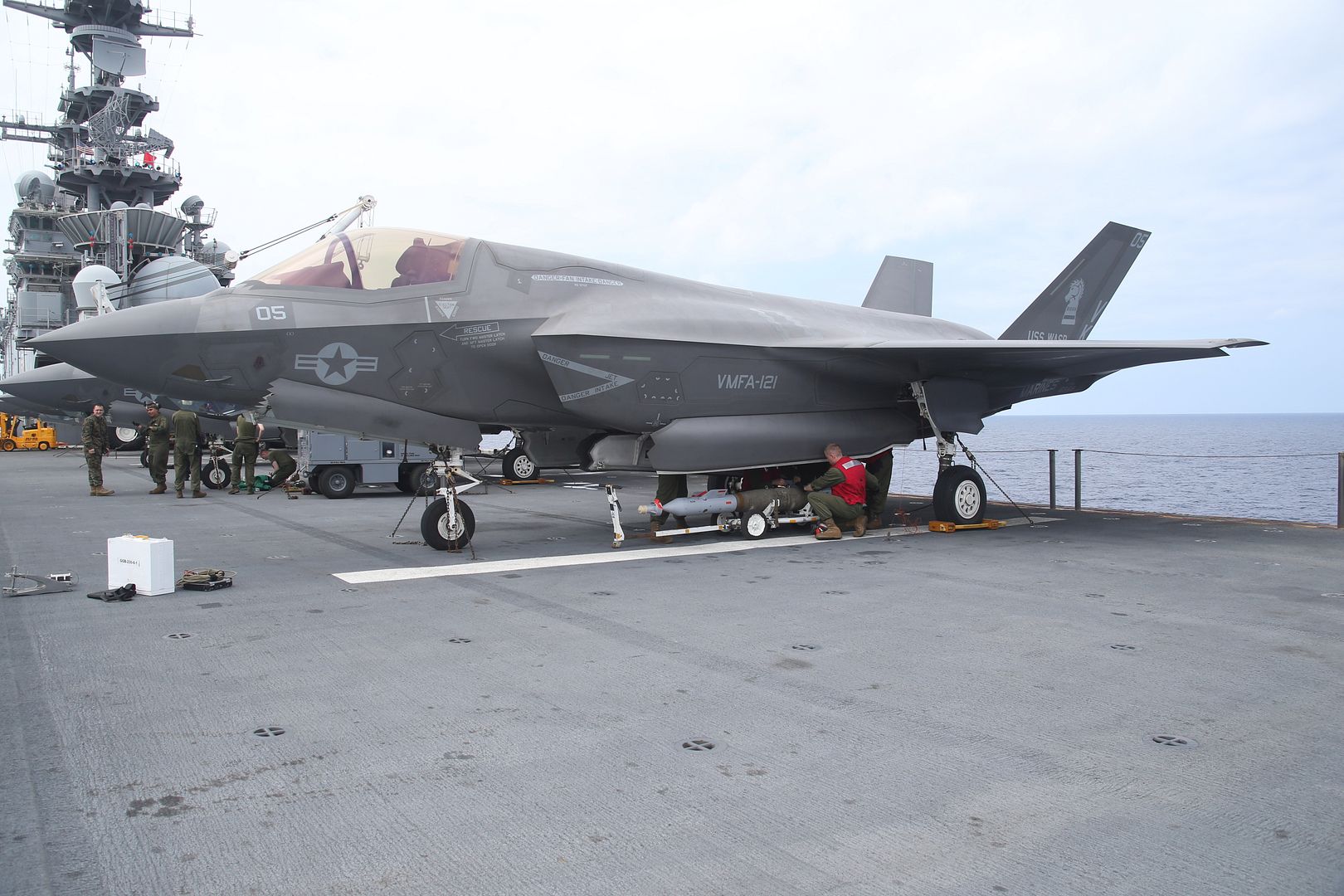
PACIFIC OCEAN (April 19, 2018) An F/A-18E Super Hornet, assigned to the Stingers of Strike Fighter Attack Squadron (VFA) 113, readies for launch on the flight deck of the aircraft carrier USS Theodore Roosevelt (CVN 71). Theodore Roosevelt is currently underway for a regularly scheduled deployment in the U.S. 7th Fleet area of operations in support of maritime security operations and theater security cooperation efforts. (U.S. Navy photo by Mass Communication Specialist 3rd Class Andrew Langholf/Released)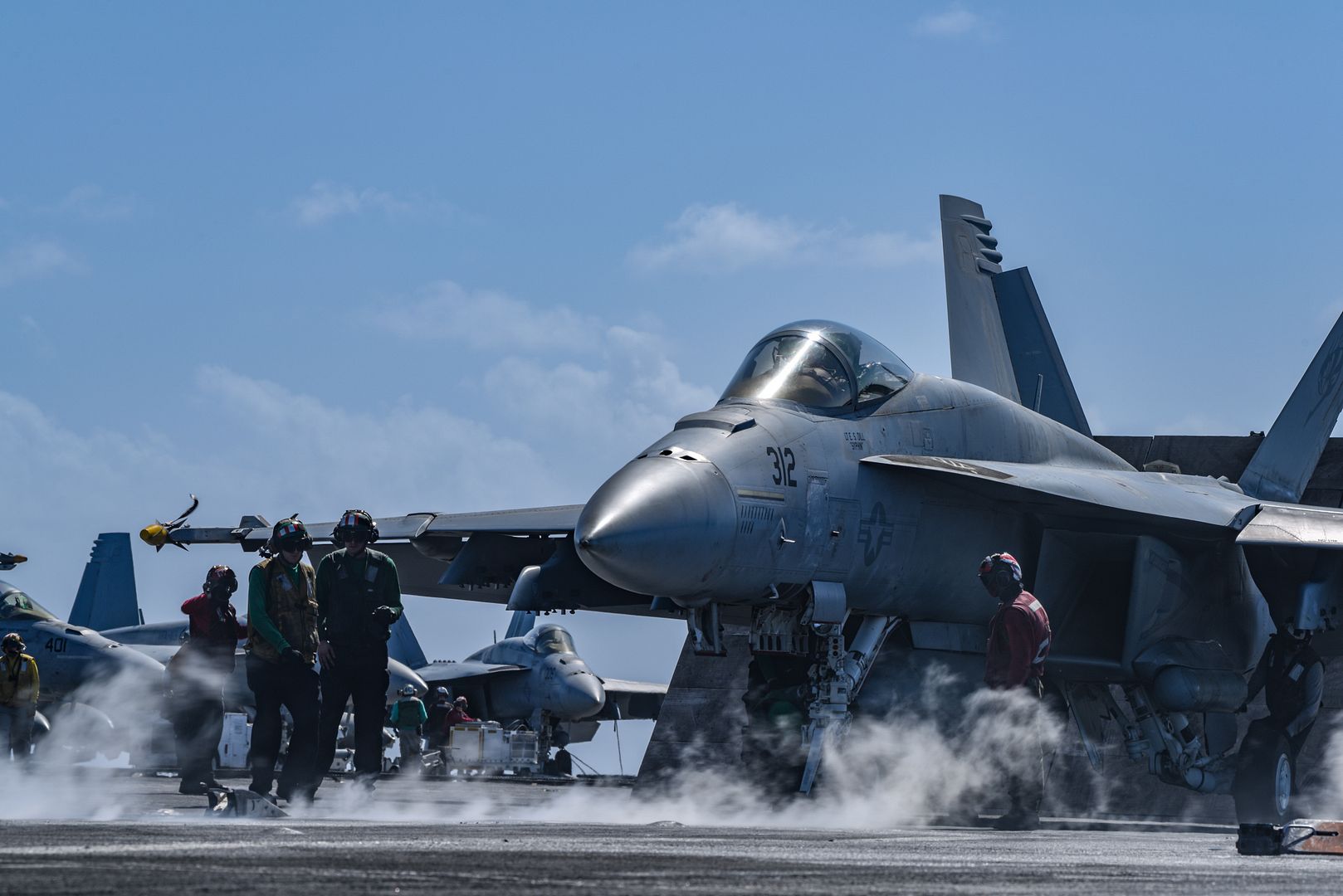
A U.S. Marine Corps F-35B Lightning II aircraft with Marine Fighter Attack Squadron (VFMA) 121 approaches the amphibious assault ship USS Wasp (LHD 1) as the guided-missile destroyer USS Dewey (DDG 105) transits alongside following an expeditionary strike (EXPOSTRIKE) in the Philippine Sea April 18, 2018. The 31st Marine Expeditionary Unit and Amphibious Squadron 11 conducted a Certification Exercise (CERTEX) as the final evaluation in a series of training exercises which ensures readiness for crisis response throughout the Indo-Pacific region. (U.S. Navy photo's by Mass Communication Specialist 1st Class Daniel Barker)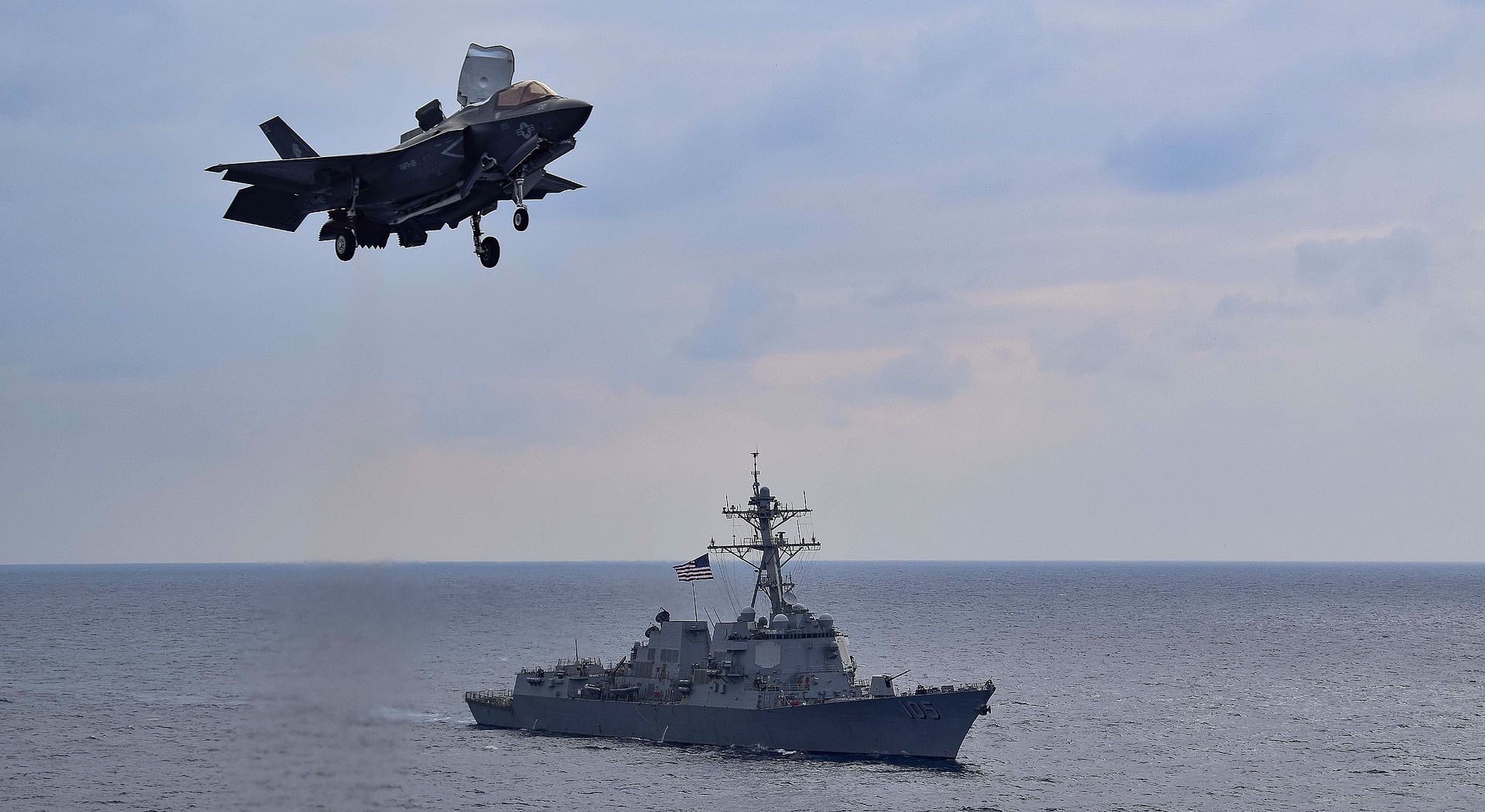
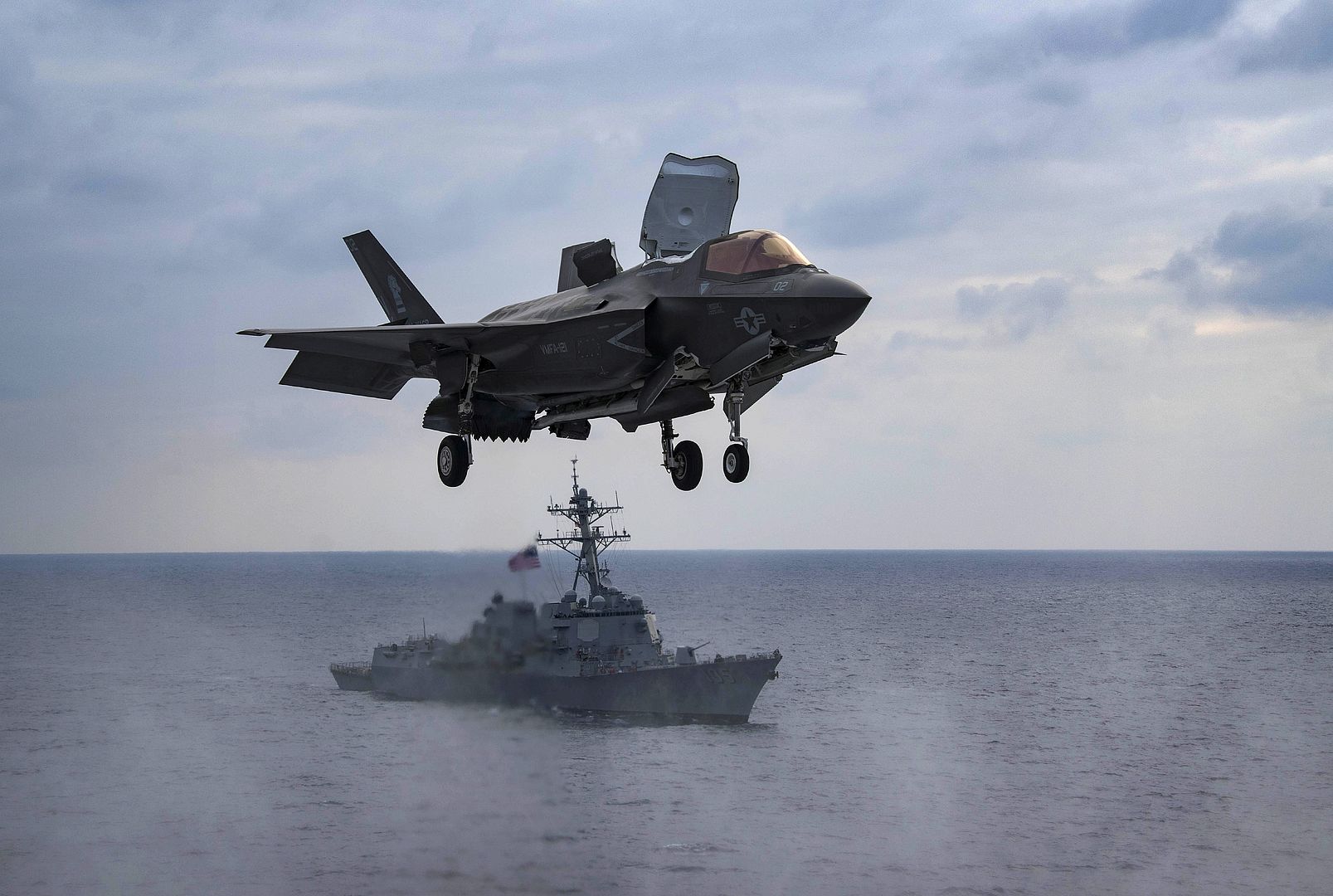
The NASA Super Guppy arrives to Beale Air Force Base, California, April 19, 2018. The Super Guppy will be on display during Beale's Air & Space Expo April 28.(U.S. Air Force photo's by Staff Sgt. Jeffery Schultze)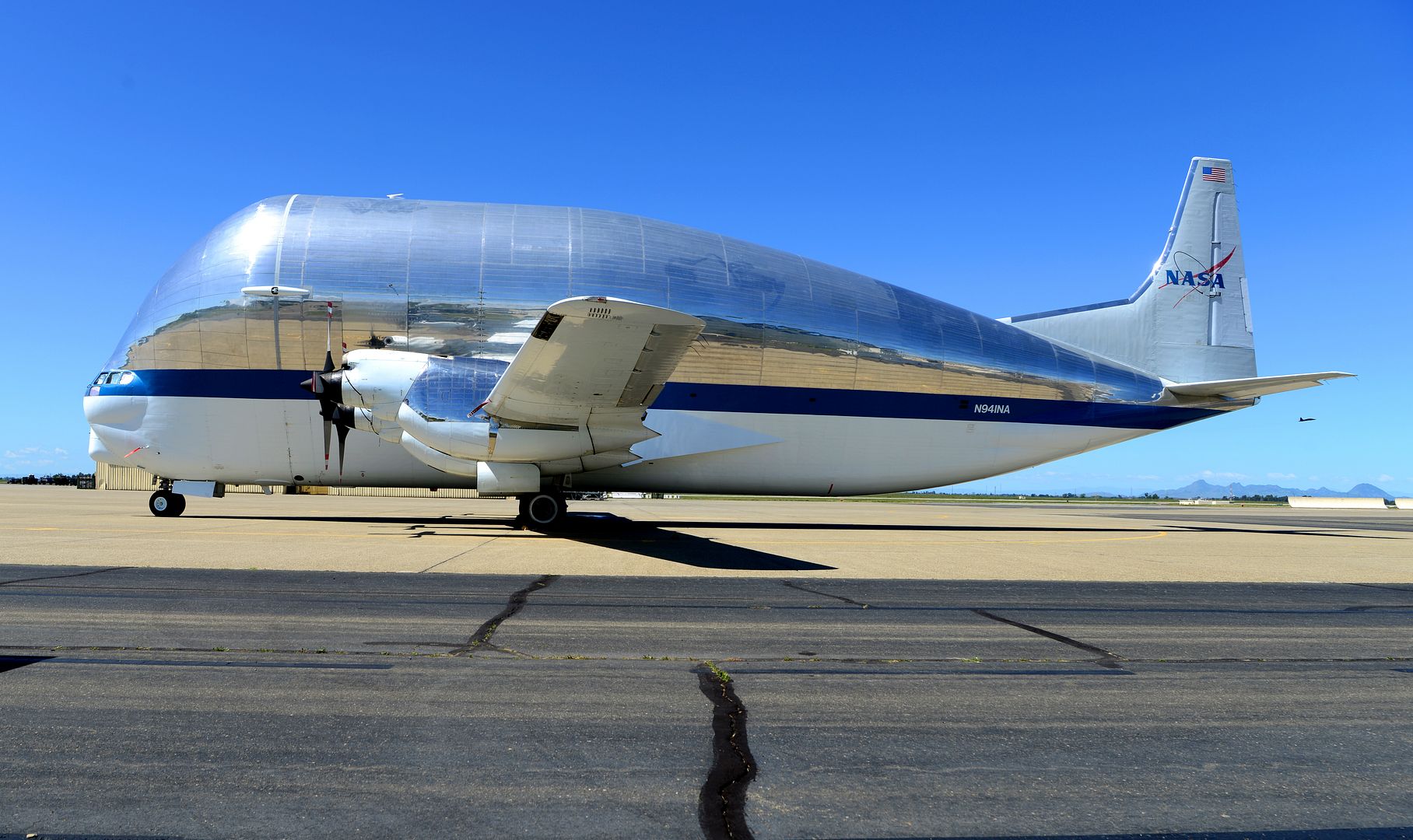
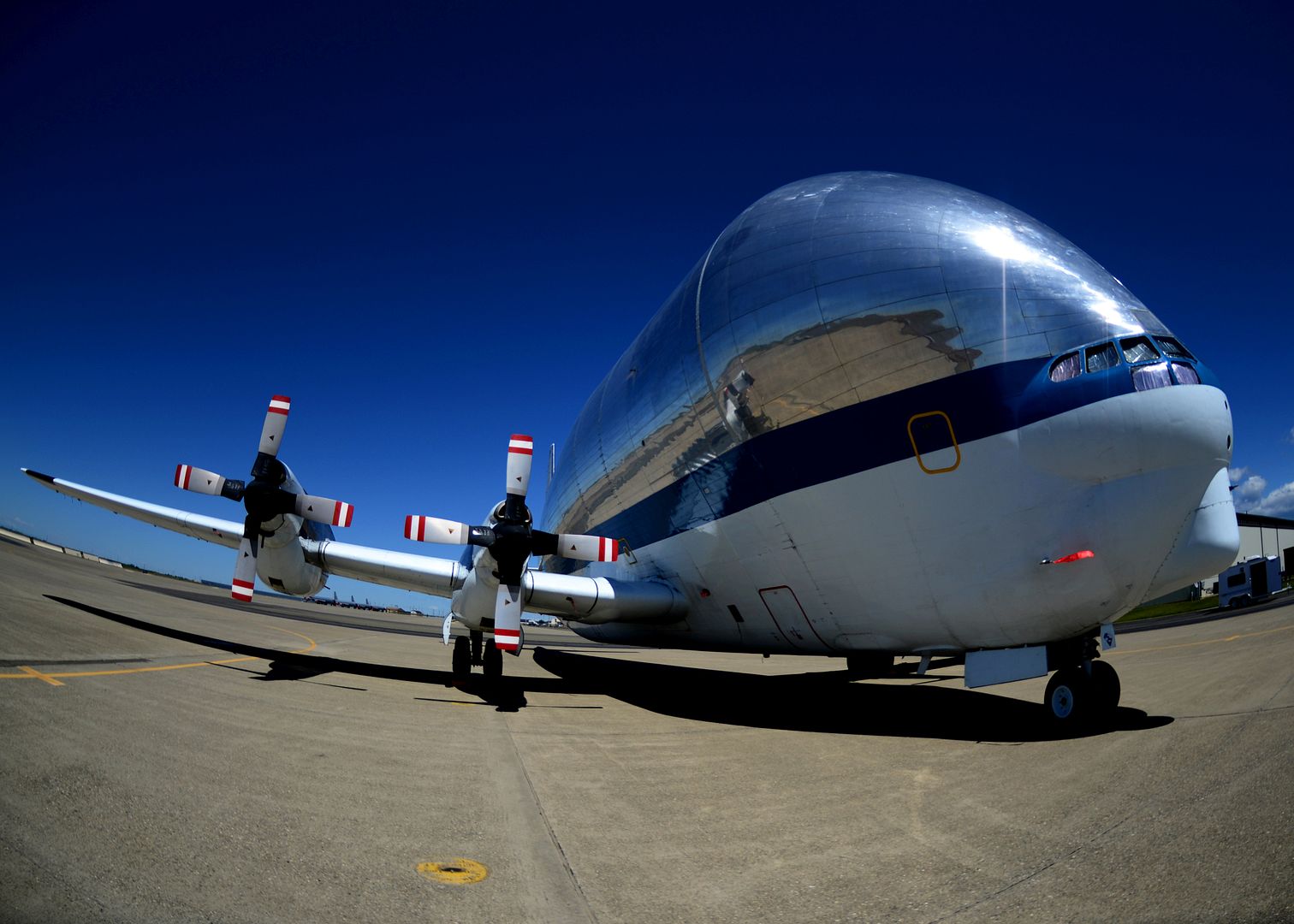
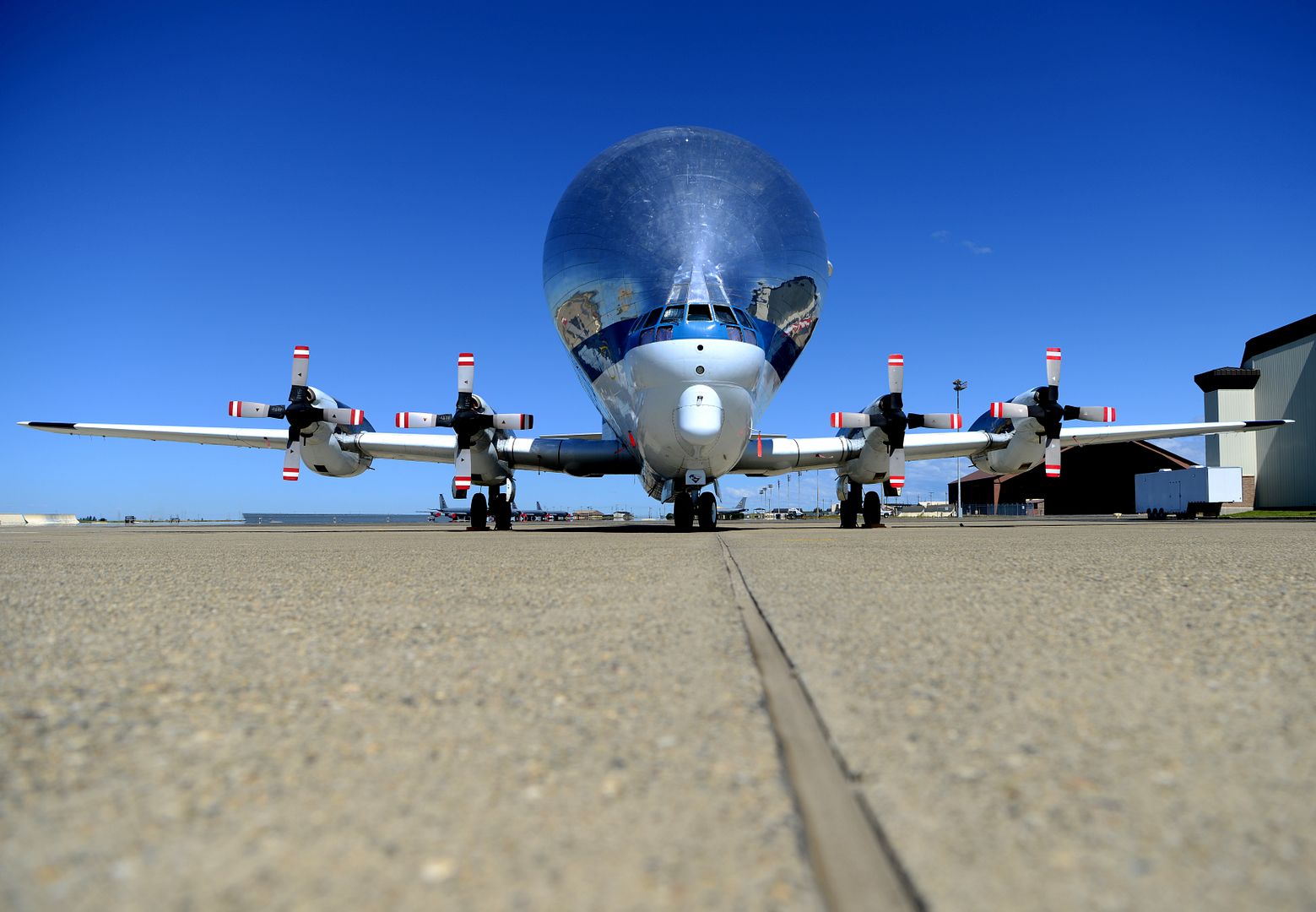
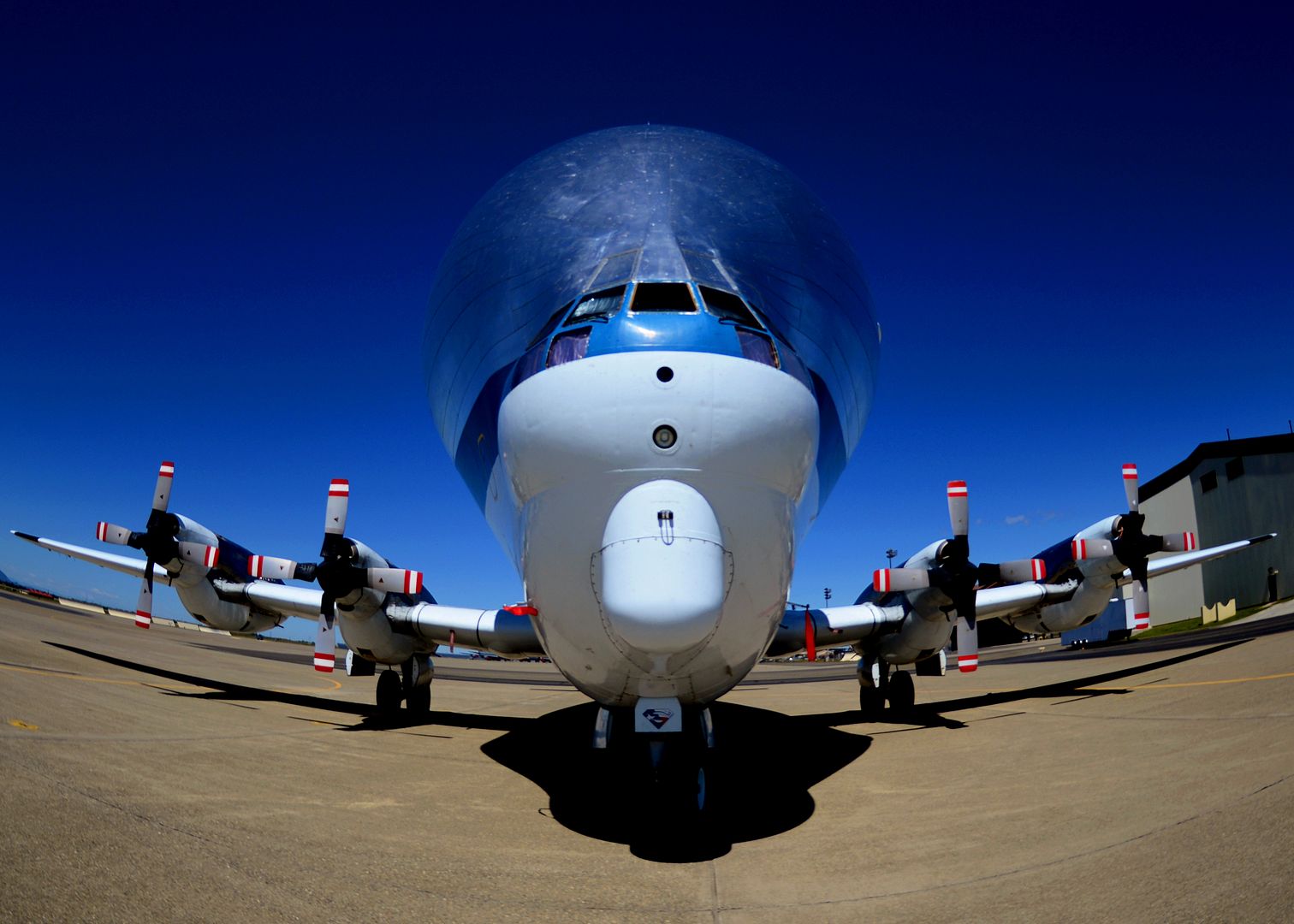
An F/A-18 ?Super Hornet? from the U.S. Navy's Tactical Demonstration Team arrives at the Kentucky Air National Guard Base in Louisville, Ky., April 19, 2018, in preparation for the Thunder Over Louisville air show on April 21. The Kentucky Air Guard is once again serving as the base of operations for dozens of military aircraft participating in the show, providing essential maintenance and logistical support. (U.S. Air National Guard photo by Lt. Col. Dale Greer)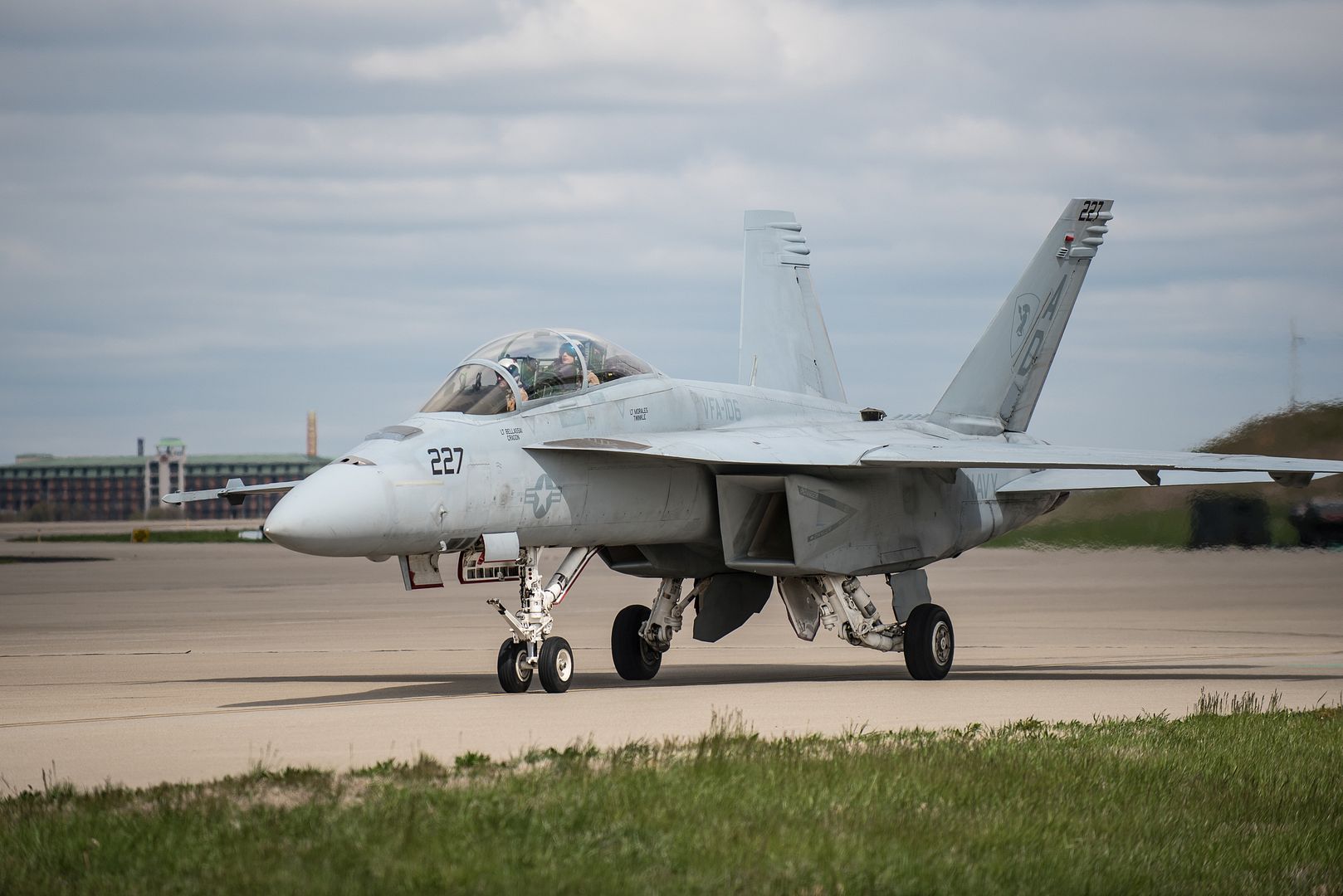
A U.S. Air Force E-3 ?Sentry? arrives at the Kentucky Air National Guard Base in Louisville, Ky., April 19, 2018, in preparation for the Thunder Over Louisville air show on April 21. The Kentucky Air Guard is once again serving as the base of operations for dozens of military aircraft participating in the show, providing essential maintenance and logistical support. (U.S. Air National Guard photo by Lt. Col. Dale Greer)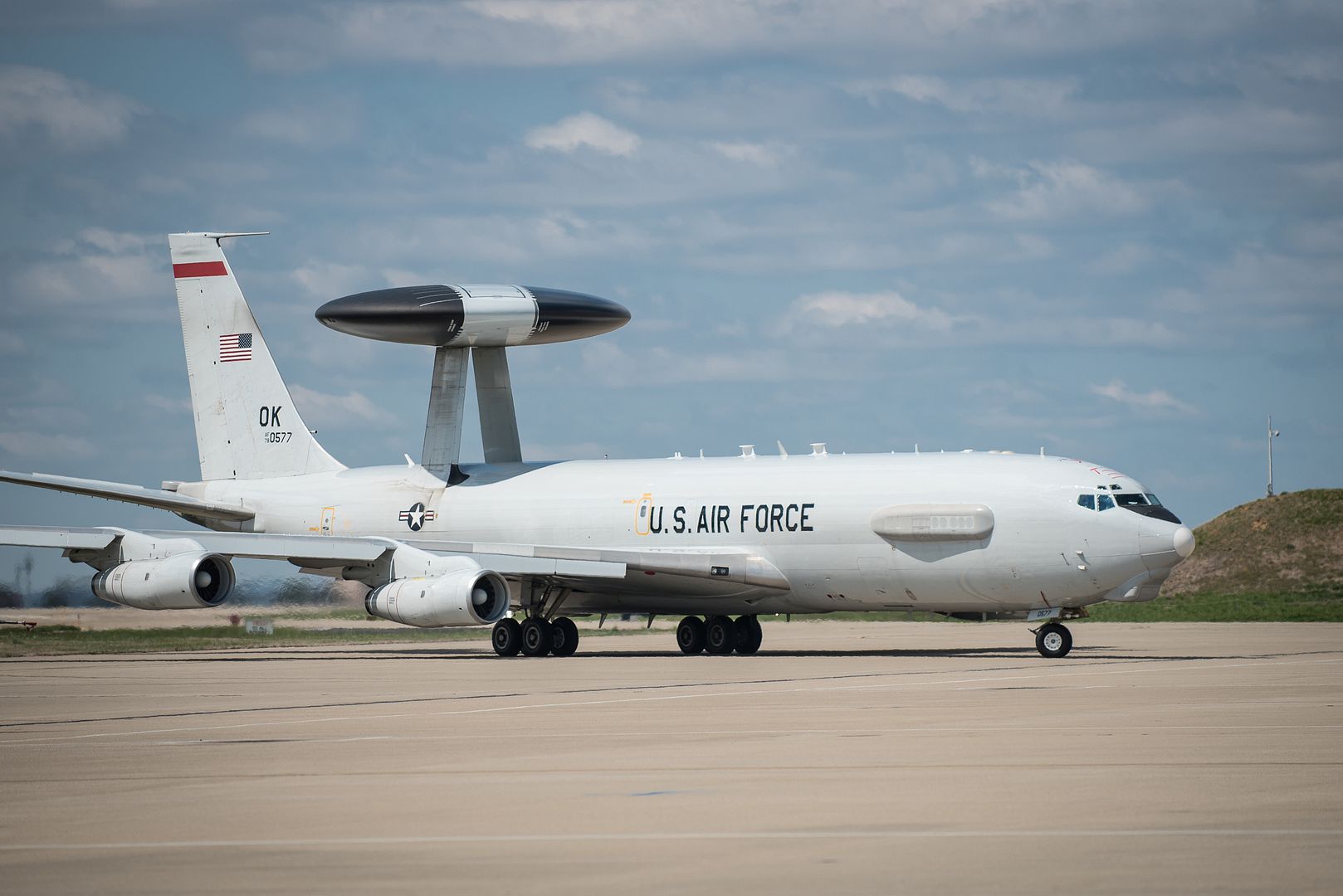
An F-16 "Fighting Falcon" from the Ohio Air National Guard arrives at the Kentucky Air National Guard Base in Louisville, Ky., April 19, 2018, in preparation for the Thunder Over Louisville air show on April 21. The Kentucky Air Guard is once again serving as the base of operations for dozens of military aircraft participating in the show, providing essential maintenance and logistical support. (U.S. Air National Guard photo by Lt. Col. Dale Greer)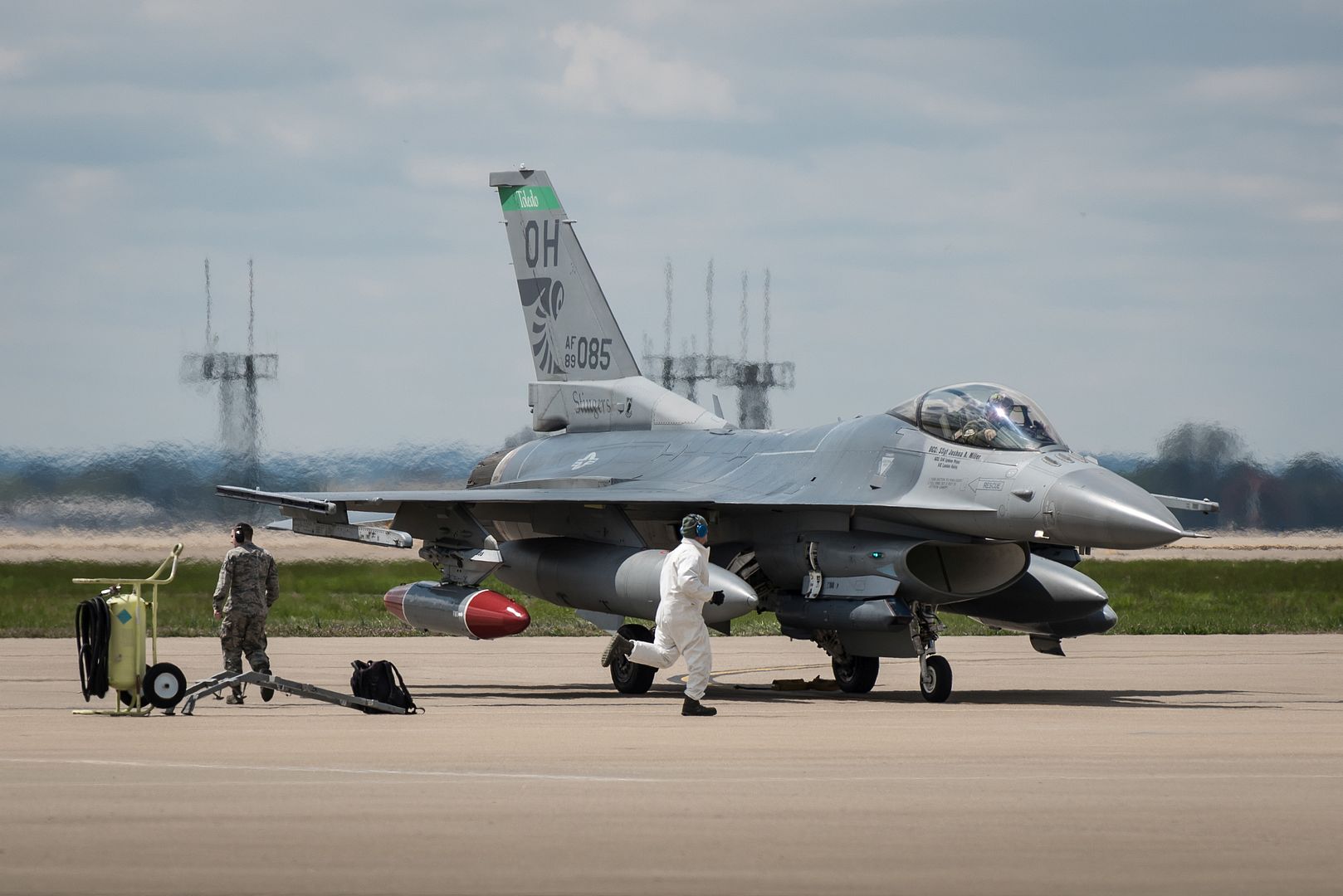
Drukair, the flag carrier of the Eastern Himalayan Kingdom of Bhutan, has signed a purchase agreement for one Airbus A320neo to support its growth plans and complement its existing fleet of three A319s. The aircraft will be powered by CFM LEAP-1A26E1 engines optimised for high-altitude operations and will become the largest aircraft operating out of Drukair?s base in Paro.
Paro, located at an altitude of 7,300 feet and surrounded by high mountains, is one of the world?s most challenging airports. Thanks to the A320neo?s unmatched performance, it will become the largest aircraft to operate from Paro offering greater payload capabilities and higher passenger comfort levels than any other product.
Featuring a two-class cabin layout, the aircraft will be deployed to increase capacity on existing regional routes to Singapore, Bangkok, Kathmandu, Delhi and Calcutta.
The A320neo Family incorporates the very latest technologies including new generation engines and Sharklets which together deliver at least 15 percent fuel savings at delivery and 20 percent by 2020. With some 6,000 orders received from nearly 100 customers, the A320neo Family has captured some 60 percent share of the market.
-
 Main AdminAn F-15 crew chief stands at parade rest as the pilot continues his preflight checks in prepration for a routine training mission at Kingsley Field in Klamath Falls, Oregon April 20, 2018. The 173rd Fighter Wing is home to the premier F-15C training base for the United States Air Force. (U.S. Air National Guard photo by Senior Master Sgt. Jennifer Shirar)
Main AdminAn F-15 crew chief stands at parade rest as the pilot continues his preflight checks in prepration for a routine training mission at Kingsley Field in Klamath Falls, Oregon April 20, 2018. The 173rd Fighter Wing is home to the premier F-15C training base for the United States Air Force. (U.S. Air National Guard photo by Senior Master Sgt. Jennifer Shirar)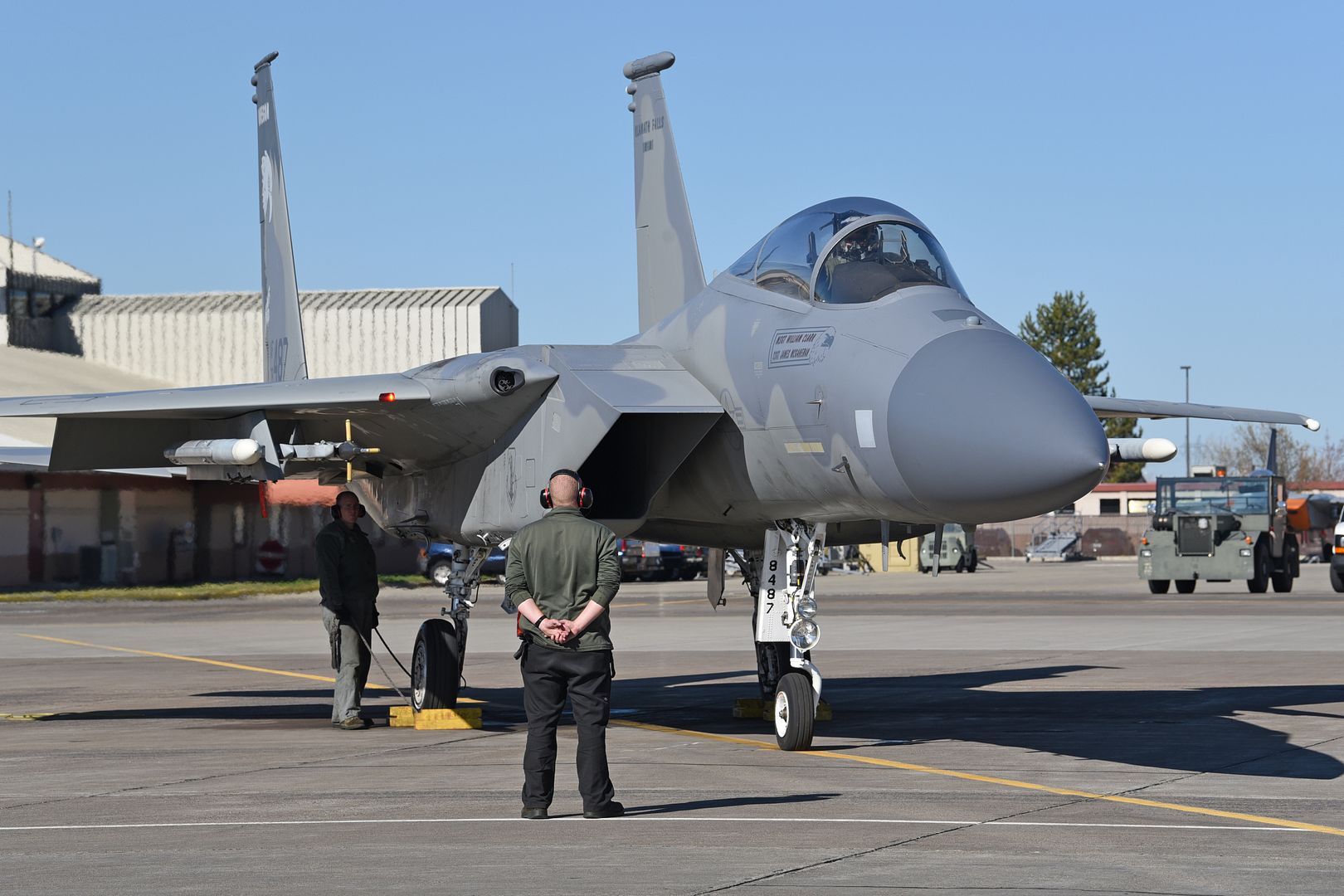
A U.S. Air Force F-15C Eagle taxis to the runway in prepration for a routine training mission at Kingsley Field in Klamath Falls, Oregon April 20, 2018. The 173rd Fighter Wing is home to the premier F-15C training base for the United States Air Force. (U.S. Air National Guard photo's by Senior Master Sgt. Jennifer Shirar)
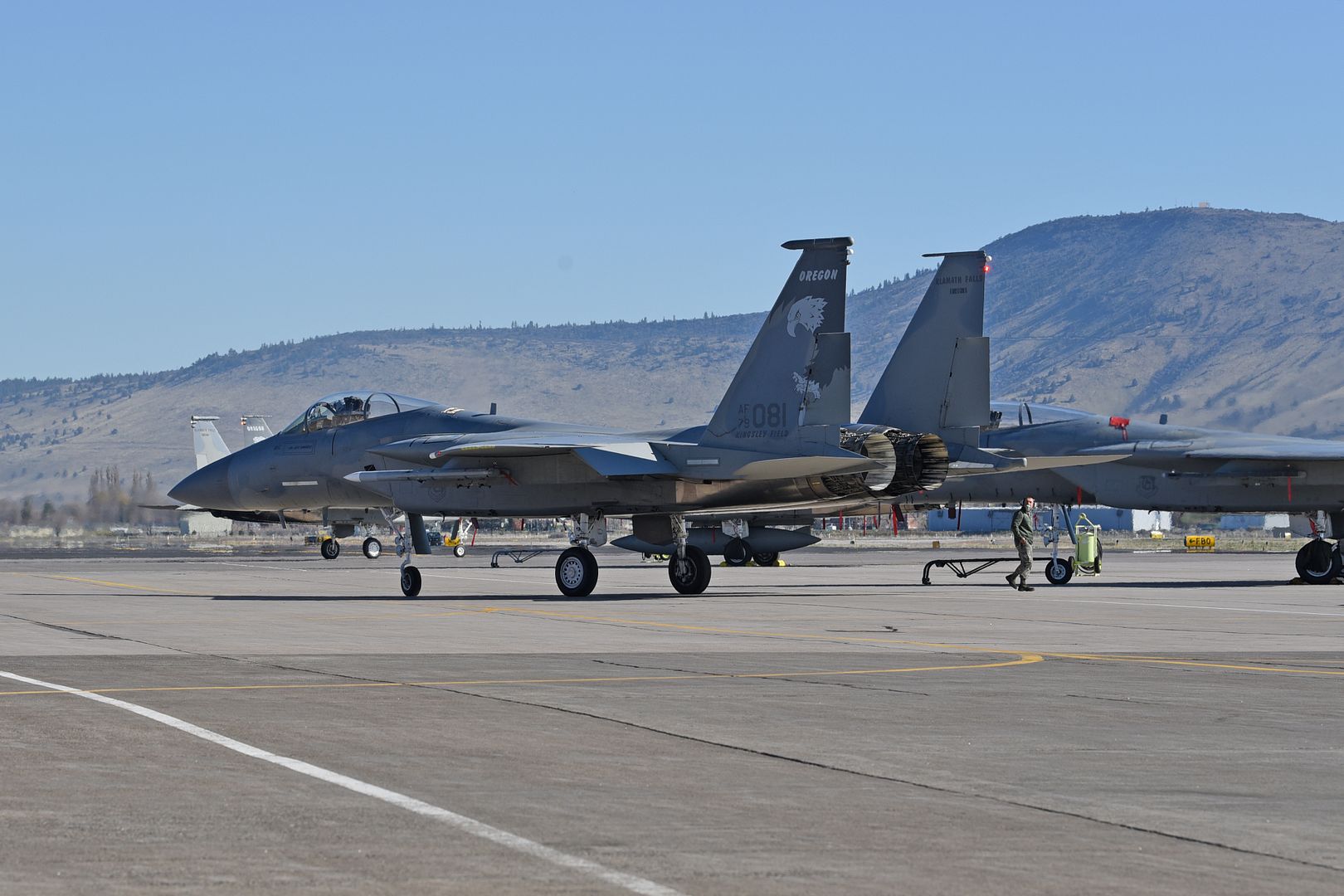
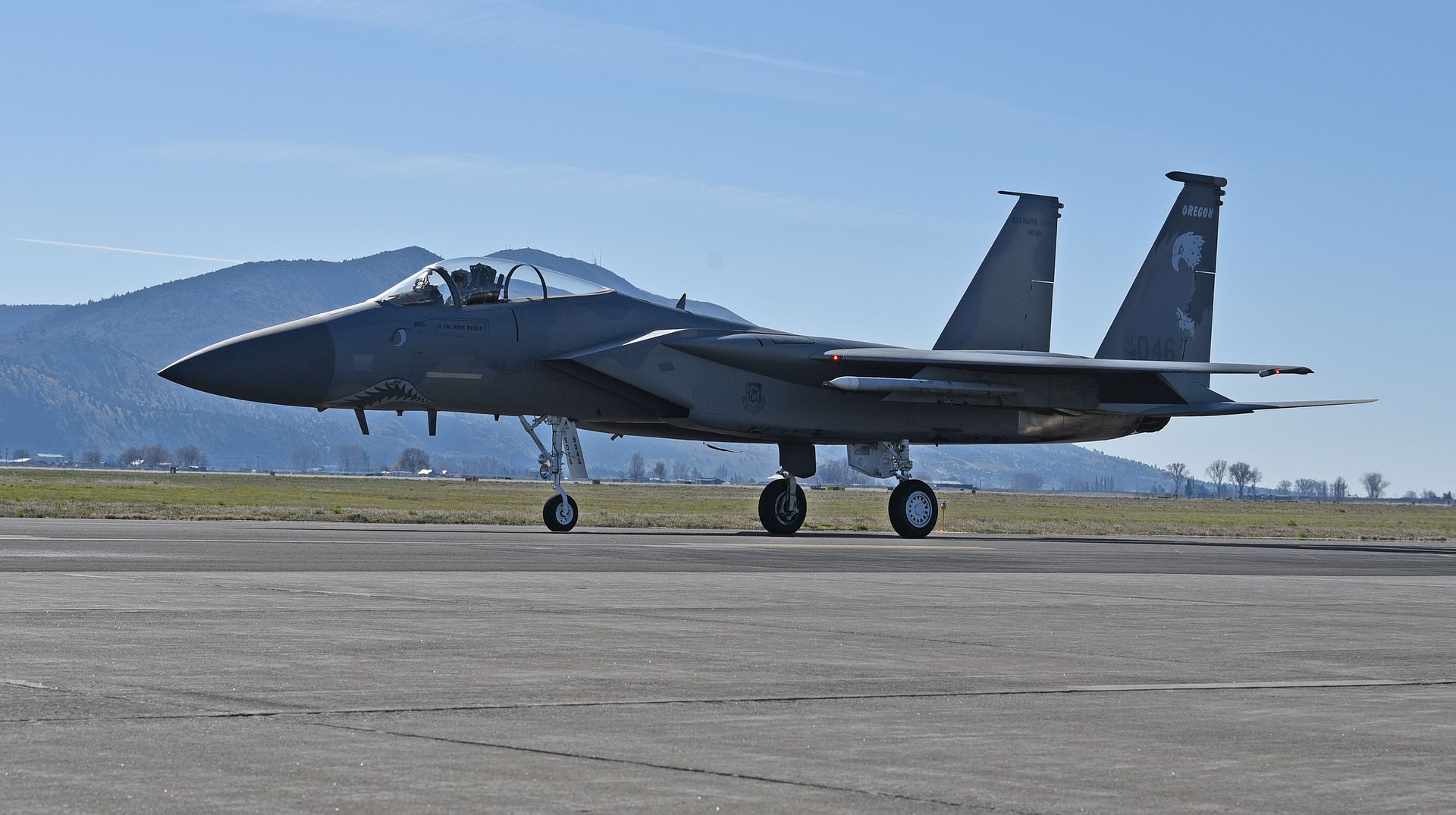
A U.S. Air Force F-15D Eagle taxis to the runway in prepration for a routine training mission at Kingsley Field in Klamath Falls, Oregon April 20, 2018. The 173rd Fighter Wing is home to the premier F-15C training base for the United States Air Force. (U.S. Air National Guard photo's by Senior Master Sgt. Jennifer Shirar)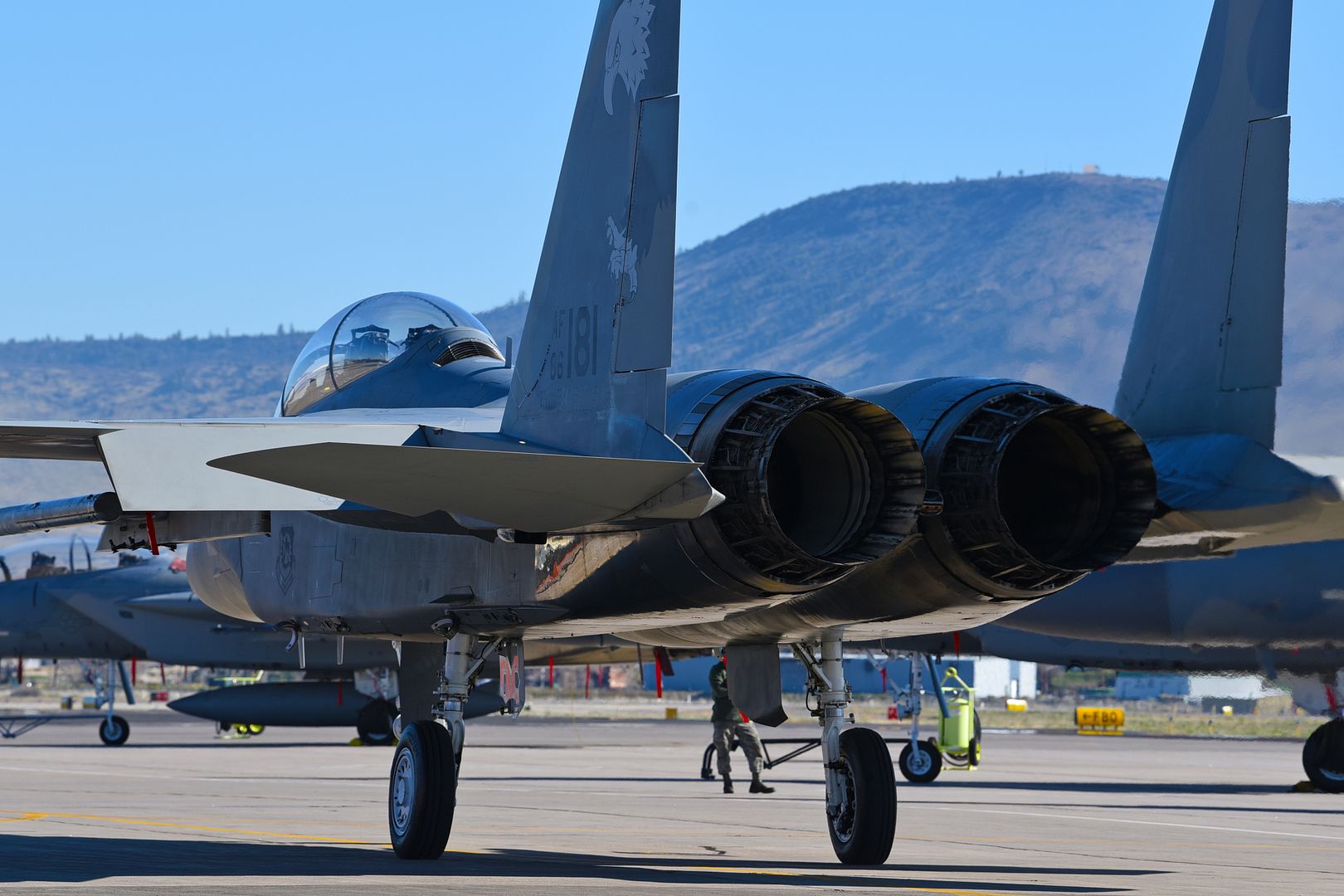
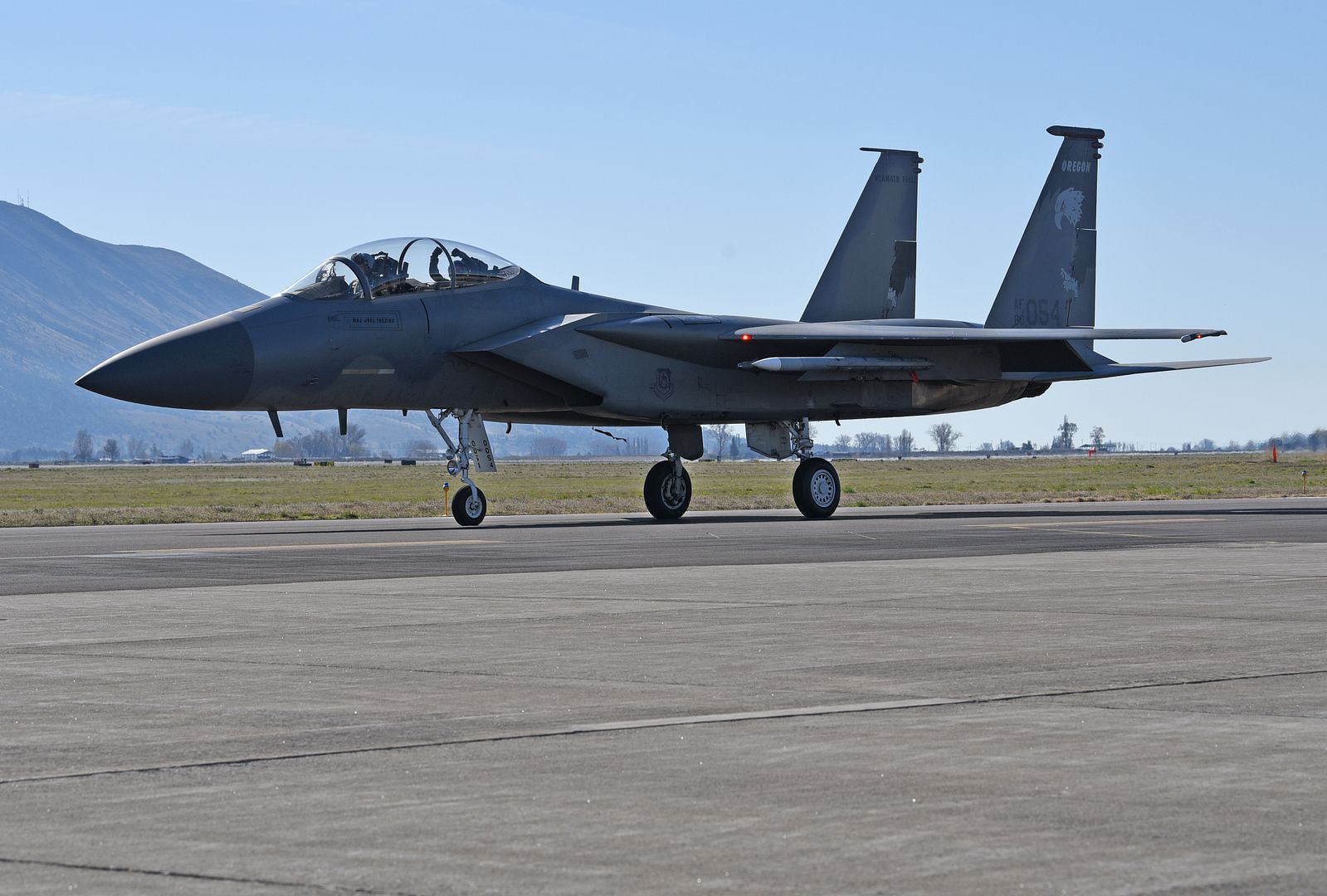
04.23.2018
Aerial firefighters from four C-130 airlift wings operating the U.S.D.A. Forest Service?s Modular Airborne Fire Fighting System (MAFFS) started a weeklong training at McClellan Reload Base in Sacramento, California today in anticipation of summer blazes.
Photo by 2nd Lt. Emerson Marcus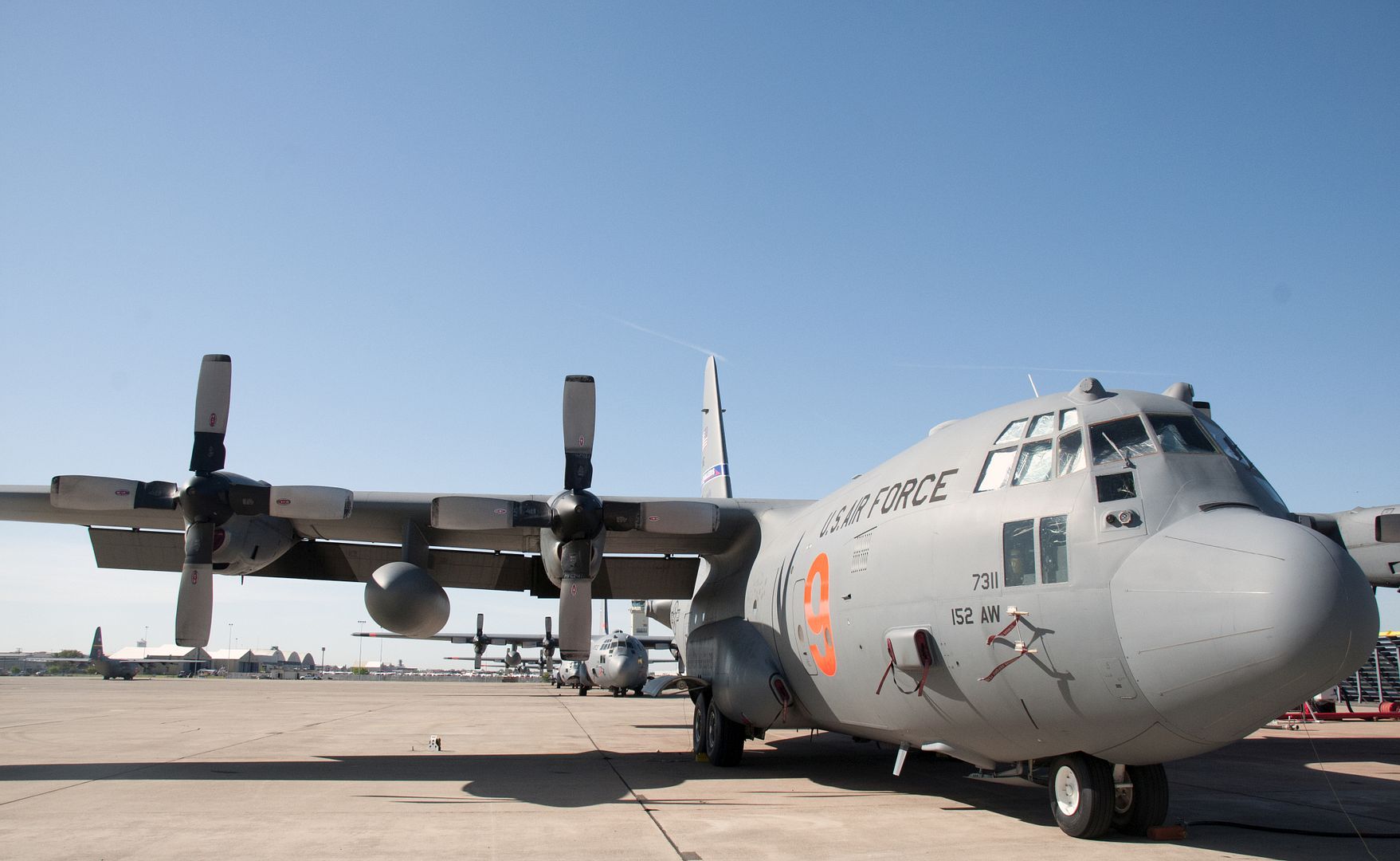
PACIFIC OCEAN (April 21, 2018) Sailors leave the landing area of the flight deck after applying chocks and chains on an AH-1Z Cobra assigned to Marine Light Attack Helicopter Squadron (HMLA) 267 aboard the Harpers Ferry-class amphibious dock landing ship USS Pearl Harbor (LSD 52). Pearl Harbor is currently underway off the coast of Southern California conducting routine training operations. (U.S. Navy photo by Mass Communication Specialist 3rd Class Kelsey J. Hockenberger/Released)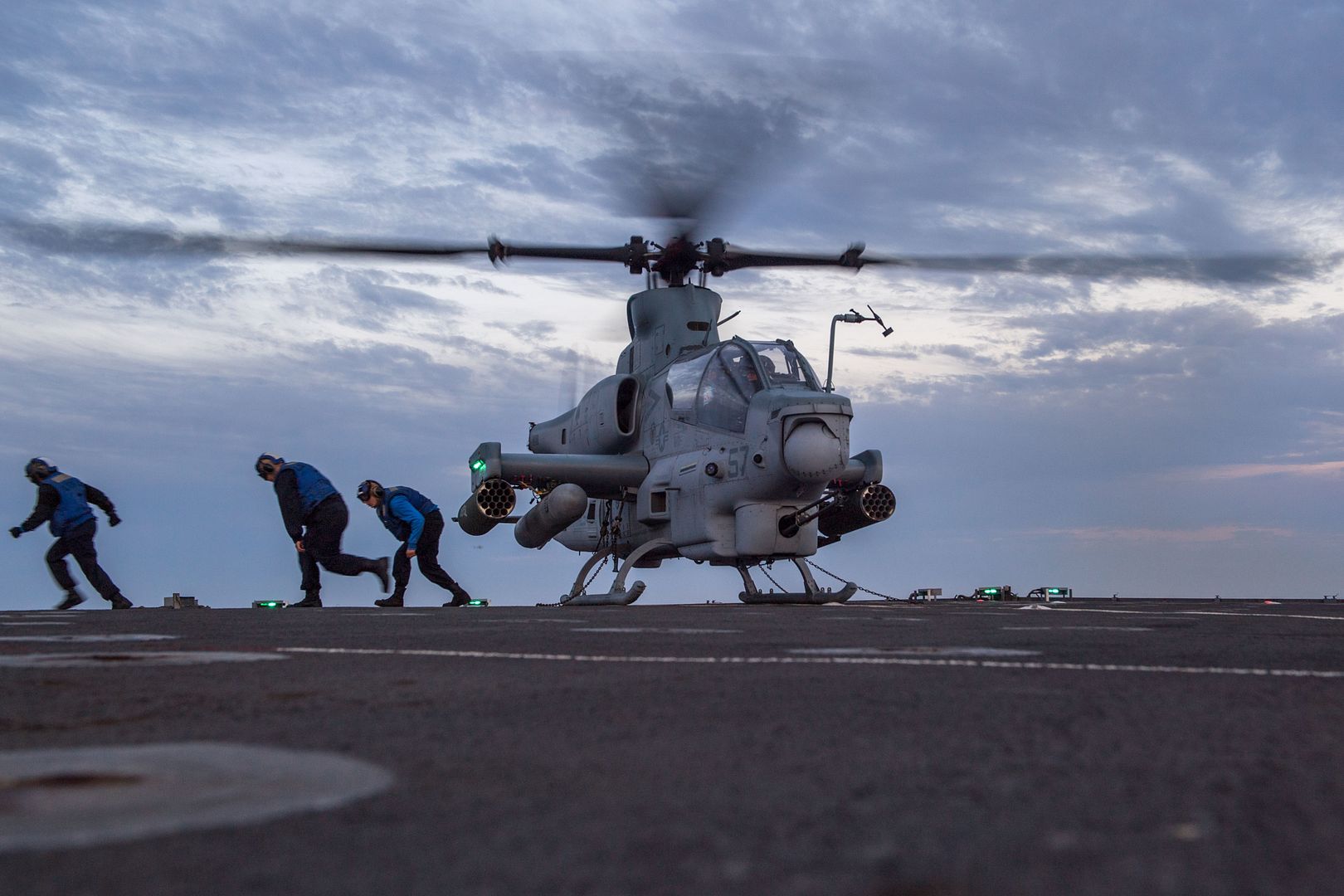
Airmen assigned to the 389th Aircraft Maintenance Unit, Mountain Home Air Force Base, Idaho, perform final checks on an F-15 Eagle fighter jet during a load crew competition at Nellis Air Force Base, Nevada, April 13, 2018. Each team consisted of three members who played a specific role in the competition to increase their team's success by working as one cohesive unit.(U.S. Air Force photo by Airman 1st Class Andrew D. Sarver)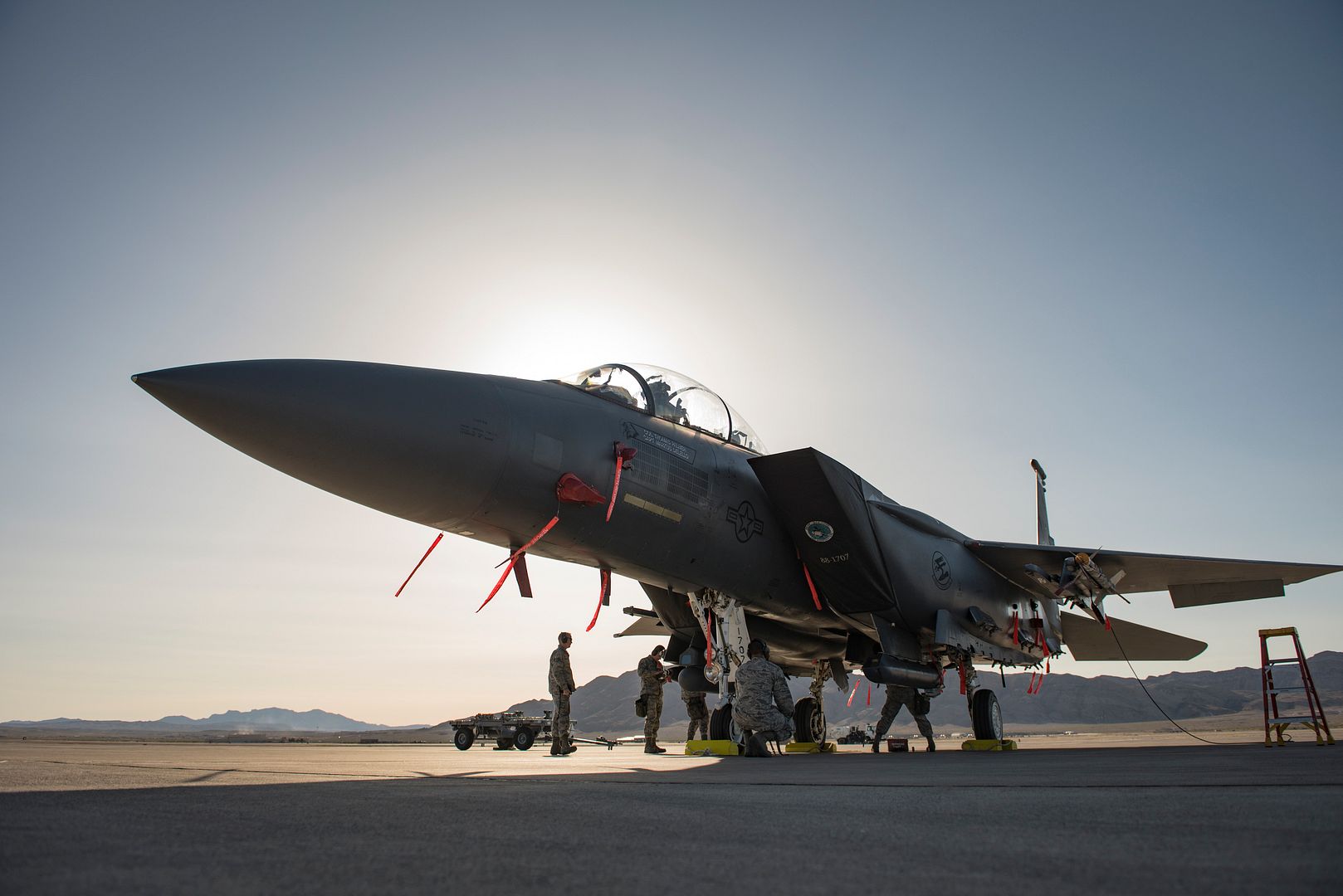
Singapore Airlines to resume world?s longest commercial flights
The Ultra Long Range version of the A350 XWB, MSN 216, has successfully completed its first flight. The latest variant of the best-selling A350 XWB Family will be able to fly further than any other commercial airliner and will enter service with launch operator Singapore Airlines in second half 2018.
The aircraft powered by Rolls-Royce Trent XWB engines has embarked on a short flight test programme to certify the changes over the standard A350-900 that will extend its range capability to 9,700 nautical miles. These changes include a modified fuel system that increases fuel carrying capacity by 24,000 litres, without the need for additional fuel tanks. The test phase will also measure enhanced performance from aerodynamic improvements, including extended winglets.
With a maximum take-off weight (MTOW) of 280 tonnes, the Ultra Long Range A350 XWB is capable of flying over 20 hours non-stop, combining the highest levels of passenger and crew comfort with unbeatable economics for such distances.
Altogether, Singapore Airlines has ordered seven A350-900 Ultra Long Range aircraft, which it will use on non-stop flights between Singapore and the US, including the world?s longest commercial service between Singapore and New York.
The A350 XWB is an all new family of widebody long-haul airliners shaping the future of air travel. The A350 XWB features the latest aerodynamic design, carbon fibre fuselage and wings, plus new fuel-efficient Rolls-Royce engines. Together, these latest technologies translate into unrivalled levels of operational efficiency, with a 25 per cent reduction in fuel burn and emissions, and significantly lower maintenance costs. The A350 XWB features an Airspace by Airbus cabin offering absolute well-being on board with the quietest twin-aisle cabin and new air systems.
At the end of March 2018, Airbus has recorded a total of 854 firm orders for the A350 XWB from 45 customers worldwide, already making it one of the most successful widebody aircraft ever.
Singapore Airlines is one of the largest customers for the A350 XWB Family, having ordered a total of 67 A350-900s, including the seven Ultra Long Range models. The carrier has already taken delivery of 21 A350-900s.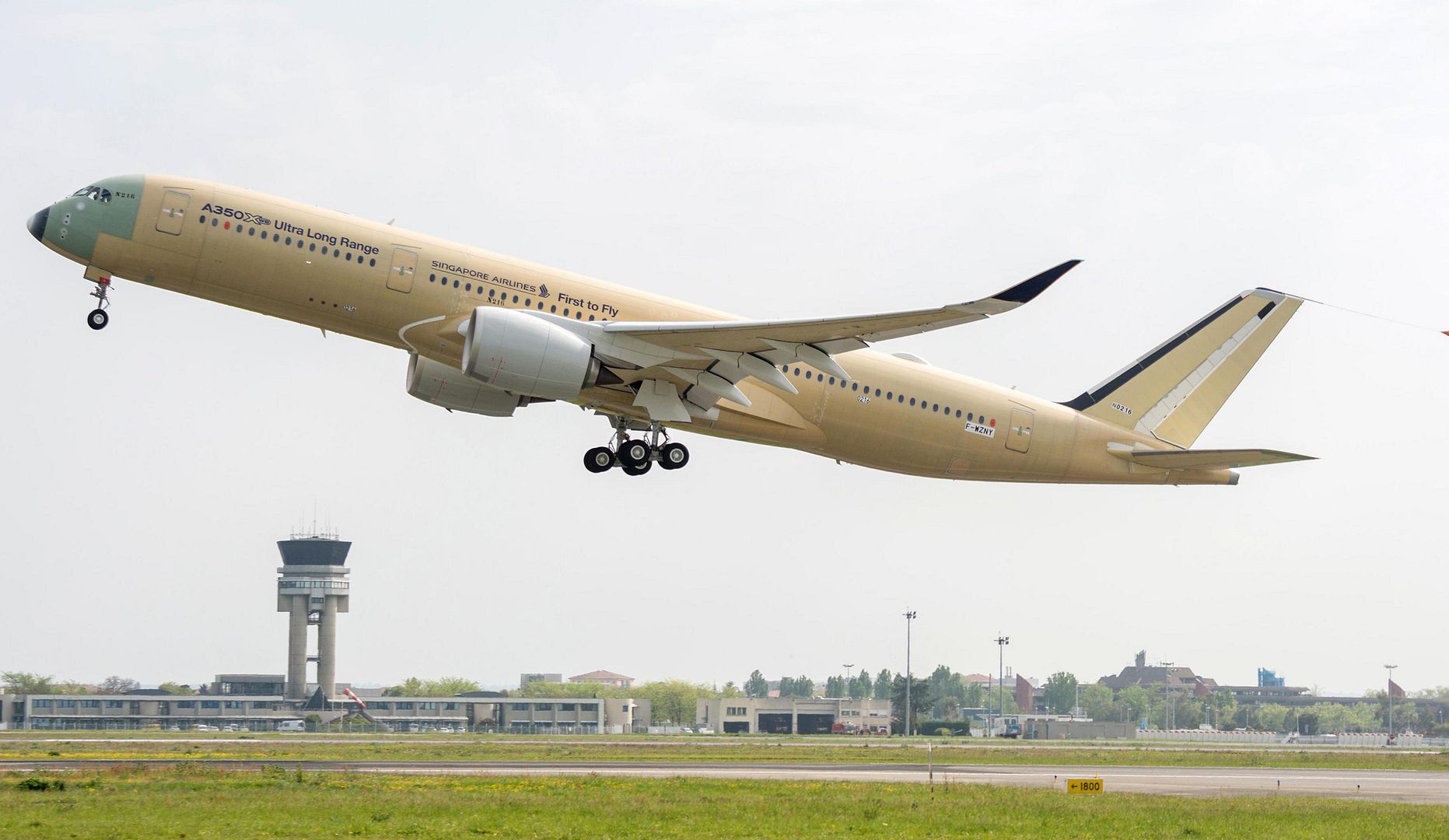
Amsterdam, The Netherlands, April 23rd, 2018 ? Embraer Services & Support and Belavia, Belarusian Airlines, the leading carrier of Belarus, have signed an agreement for the support of Belavia?s fleet of Embraer E-Jets. The deal will streamline Belavia?s fleet support and improve aircraft availability. In a multi-year deal, Embraer?s popular component support solution is being tailored to Belavia?s specific needs, offering customized exchange plus repair coverage for a wider scope of components, as well as access to a range of special tooling and ground support equipment needed for heavy maintenance checks, allowing Belavia to move those checks ?in-house?. The program will support Belavia?s existing fleet of two E175s and two E195s. The airline took delivery of another E175 aircraft last week and will receive another two E195s further this year. ?Our Embraer fleet is proving a great success with our passengers and is delivering high dispatch rates and compelling economics for our airline. Embraer Services and Support?s OEM component solutions will help us keep those dispatch rates high and our aircraft in the sky where they belong; earning revenue,? said Anatoly Gusarov, Director General of Belavia. ?We?re pleased to receive our newest aircraft in Brazil, and as our relationship goes from strength to strength, Embraer remains the clear choice for our continued growth.? ?At Embraer our overriding aim is to give our customers the support they really need. Here is an example in which we have adapted our advanced component support solution to Belavia?s very specific needs. Our customized offerings are increasingly recognized by operators for their value, efficiency, and efficacy?, said Johann Bordais, President & CEO, Embraer Services & Support.
About Belavia ? Belarusian Airlines
Belavia Airlines is the largest air carrier of the Republic of Belarus. It is based at the Minsk National Airport and carries out regular flights to 49 airports in 28 countries of Europe and Asia. Belavia was established on March 5, 1996. Since 1997, it has been a full member of the International Air Transport Association (IATA), since 2010 - a member of the European Regions Airline Association (ERAA). The airline's fleet consists of 27 aircraft (five Boeing 737-800s, six Boeing 737-500s, seven Boeing 737-300s, three Embraer-175s, two Embraer-195s, four CRJ-100 / -200s). More information on the official website of the airline www.belavia.by or in social networks: https://www.facebook.com/belavia, https://instagram.com/belavia.airlines/ and https://vk.com/belavia_airlines.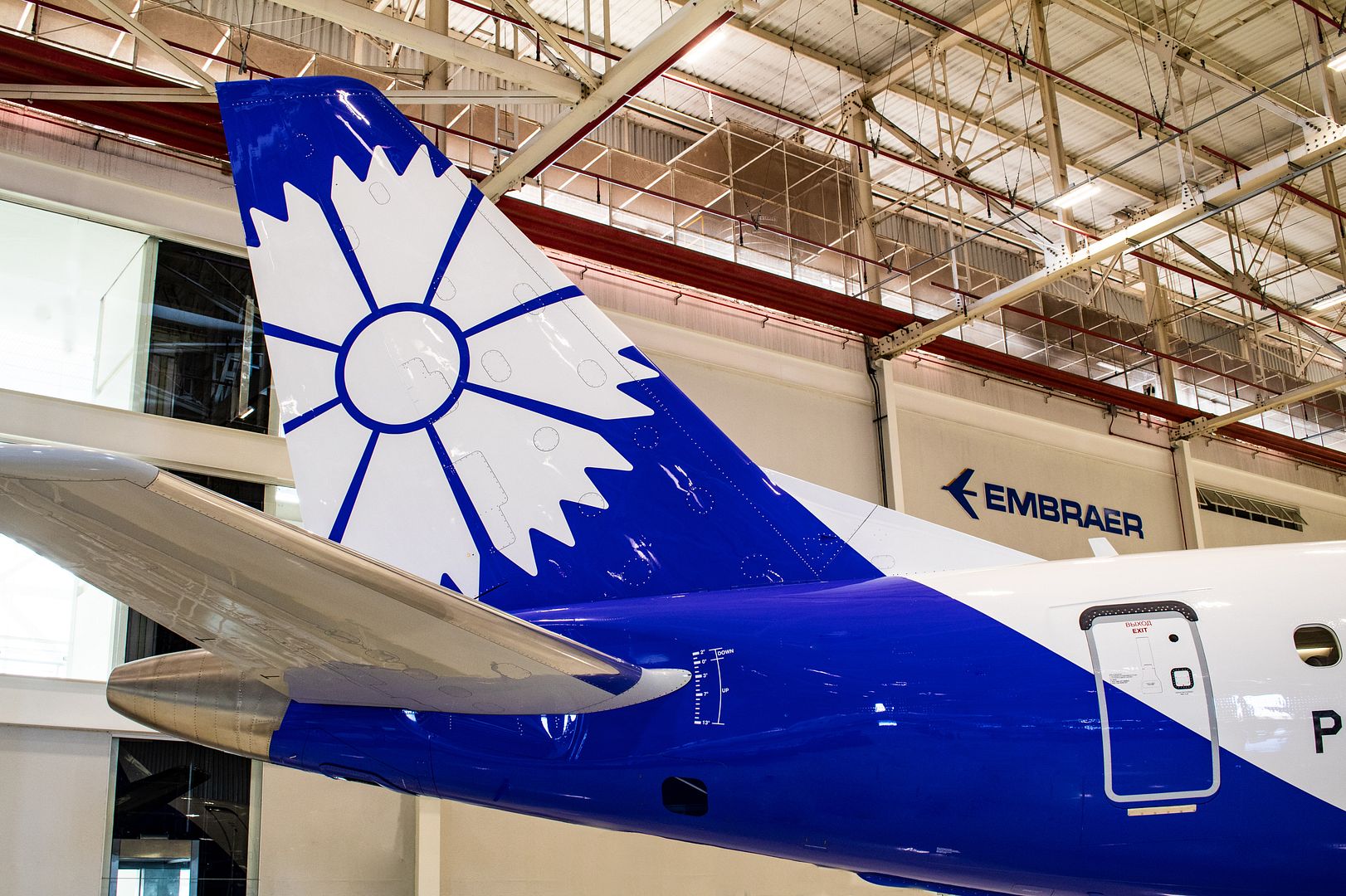
-
 Main AdminSpc. Ian Woldt, a CH-47 Chinook helicopter crewmember with Company B, 2nd General Support Aviation Battalion, 227th Aviation Regiment, 1st Air Cavalry Brigade, 1st Cavalry Division, waits to start the operations of a night assault mission at Hohenfels Training Area, Germany, April 23, 2018. CH-47 Chinook helicopter flight crews of the battalion are participating in the U.S. Army Joint Modernization Command?s Joint Warfighting Assessment 18, an exercise that increases training readiness, future force development and interoperability with NATO allies. (U.S. Army photo by Sgt. Gregory T. Summers / 22nd Mobile Public Affairs Detachment)
Main AdminSpc. Ian Woldt, a CH-47 Chinook helicopter crewmember with Company B, 2nd General Support Aviation Battalion, 227th Aviation Regiment, 1st Air Cavalry Brigade, 1st Cavalry Division, waits to start the operations of a night assault mission at Hohenfels Training Area, Germany, April 23, 2018. CH-47 Chinook helicopter flight crews of the battalion are participating in the U.S. Army Joint Modernization Command?s Joint Warfighting Assessment 18, an exercise that increases training readiness, future force development and interoperability with NATO allies. (U.S. Army photo by Sgt. Gregory T. Summers / 22nd Mobile Public Affairs Detachment)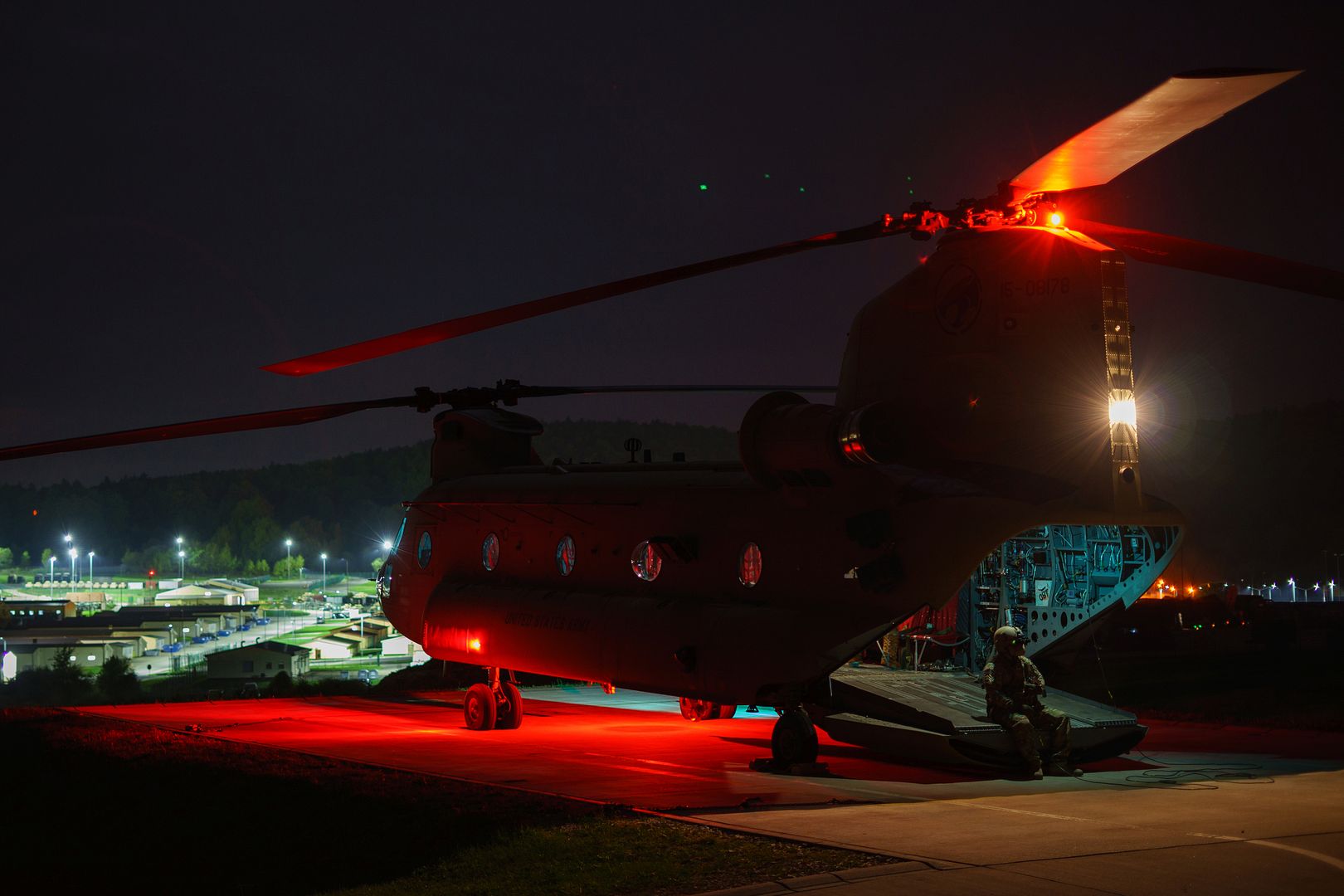
Capt. Andrew ?Dojo? Olson, F-35 Heritage Flight Team commander and pilot, taxis down the runway in an F-35A Lightning II at the Berlin Sch?nefeld Airport, in Berlin, Germany, April 22, 2018. The F-35 logged its longest non-stop flight to date, lasting just over 11 hours before touching down in Germany for the first time. (U.S. Air Force photo by Airman 1st Class Alexander Cook)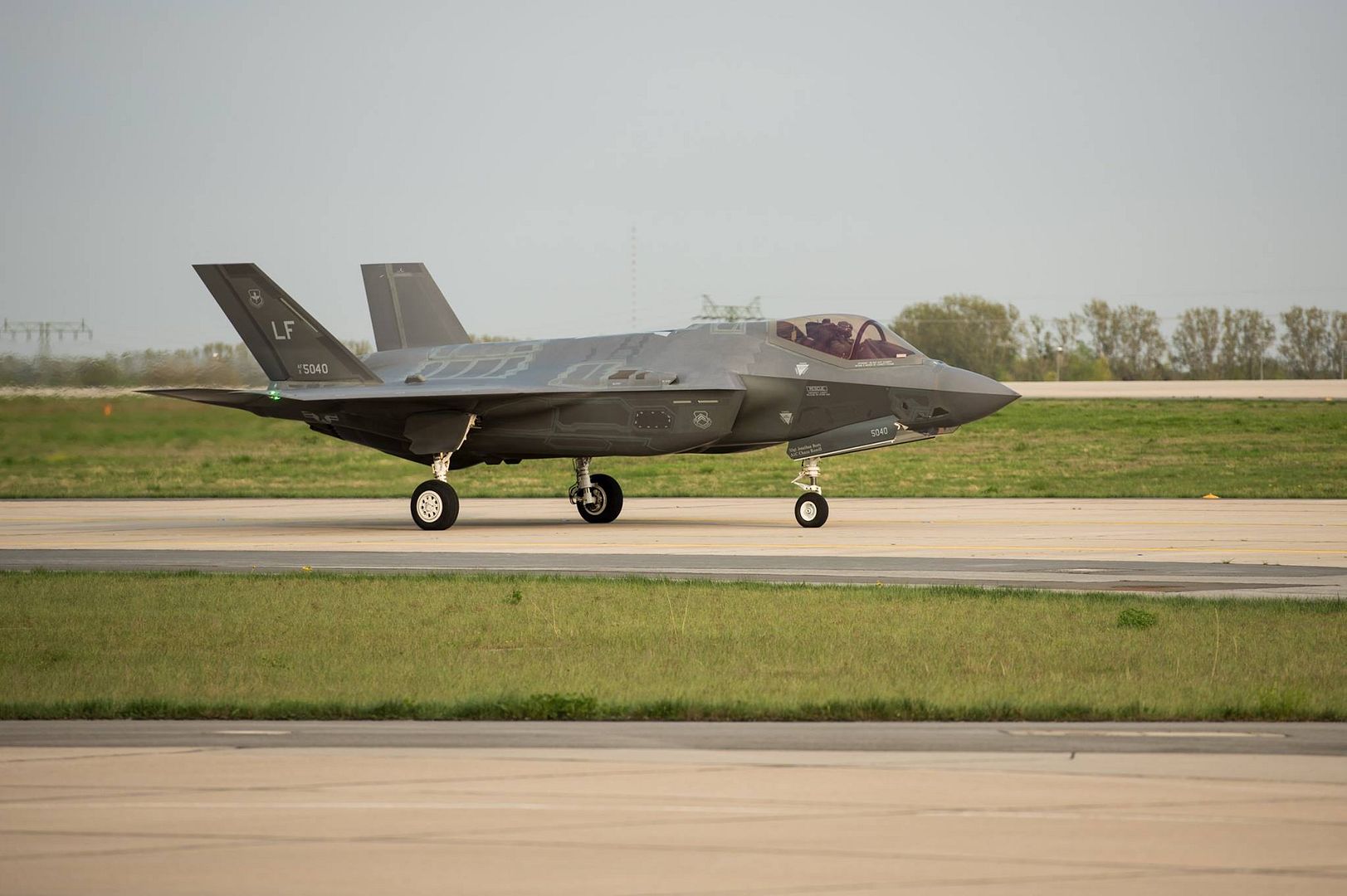
Bergen, Norway, April 24, 2018 ? Wider?e, Scandinavia?s largest regional airline, completed the first scheduled passenger flight of an Embraer E190-E2 this morning. The aircraft, registered LN-WEA and operating as flight WF622, departed Bergen Airport at 7:56 AM and arrived at Troms? Airport at 9:39 AM local time. The flight was sold out. Today?s flight marks the official entry into service of the first of three new E-Jets E2s that Embraer has developed to succeed its first-generation E-Jets. Deliveries of the larger E195-E2 are planned to start in 2019, and in 2021 for the smaller E175-E2. ?This is a truly historic day for the E-Jets program and for Embraer,? said John Slattery, President & CEO, Embraer Commercial Aviation. ?The first revenue flight is the crowning achievement of years of hard work and planning. I know Wider?e?s customers are going to love flying on a such a green airplane.? Wider?e passengers experienced a quiet, environmentally-friendly flight on the 672 nm sector. The E190-E2 has the lowest external noise and emissions levels of any aircraft in its category and burns 17.3% less fuel than the current-generation E190. The completely redesigned and pleasant E2 cabin interior features new acoustic treatments, an improved quiet air conditioning system and more stowage space. In some flight conditions, E2 cabin noise levels are 50% lower than those of its main competitor. The lowest community noise margins in the airline industry were achieved through a combination of low-drag and low-noise airframe design with outstanding field performance. These features reduce required engine thrust making the E2 much quieter during approach and take-off. Stein Nilsen, Wider?e?s President & CEO, spoke after the flight landed. ?Today, we?re celebrating the beginning of a new era for Wider?e. It?s the first jet in our fleet. And we?ll always have the distinction of being the first airline to fly the E2. We see a bright future with our new E2 jets.? Wider?e will receive two more E190-E2s this year. It holds purchase rights for an additional 12 E2s. The total value of the order is approximately USD 873 million if all rights are exercised. Embraer is the world?s leading manufacturer of commercial jets up to 150 seats. The Company has 100 customers from all over the world operating the ERJ and the E-Jet families of aircraft. For the E-Jets program alone, Embraer has logged more than 1,800 orders and 1,400 deliveries, redefining the traditional concept of regional aircraft by operating across a range of business applications.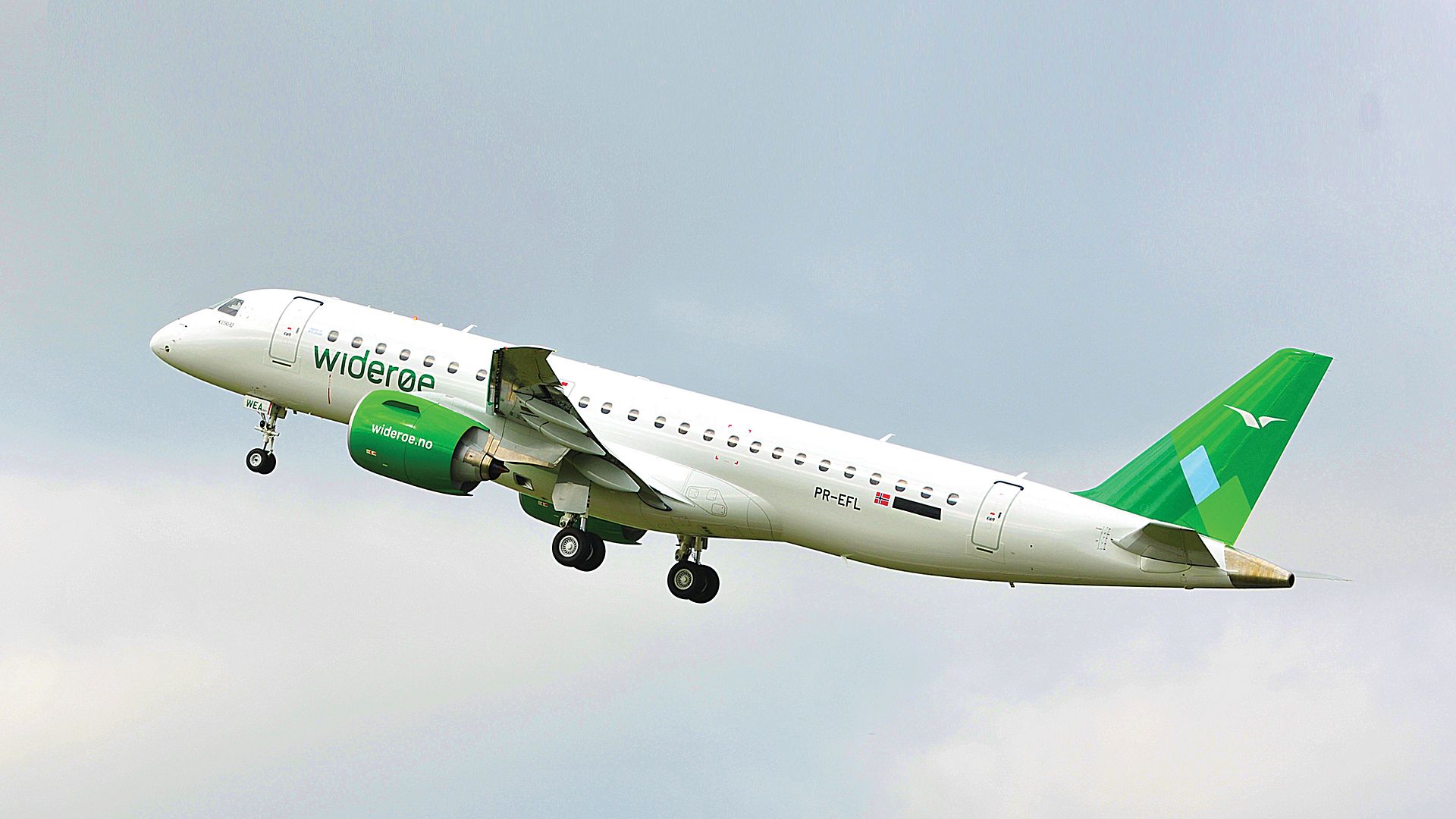
Post a reply
- Go to Next topic
- Go to Welcome
- Go to Introduce Yourself
- Go to General Discussion
- Go to Screenshots, Images and Videos
- Go to Off topic
- Go to Works in Progress
- Go to Skinning Tips / Tutorials
- Go to Skin Requests
- Go to IJAAF Library
- Go to Luftwaffe Library
- Go to RAF Library
- Go to USAAF / USN Library
- Go to Misc Library
- Go to The Ops Room
- Go to Made in Germany
- Go to Campaigns and Missions
- Go to Works in Progress
- Go to Juri's Air-Raid Shelter
- Go to Campaigns and Missions
- Go to Works in Progress
- Go to Skinpacks
- Go to External Projects Discussion
- Go to Books & Resources
